



































After a hard day’s work, it’s time to kick fun into high gear. The Kubota RTV520 is built to get it done and then some across different terrain. Its 17 HP 2-cylinder engine is happy to work all day, but is ready and willing to hit some trails, a secret fishing spot or a joyride through the woods.

28 NOT JUST FOR BASS
To catch more trout this spring, tie on marabou jigs, Ned rigs and blade baits instead of your traditional offerings
BY GORD PYZER36 THE TRIPLE CROWN OF THE FAR NORTH
To catch trophy lake trout, northern pike and Arctic grayling in just one trip, head for the N.W.T.’s remote and wild Kasba Lake BY SCOTT


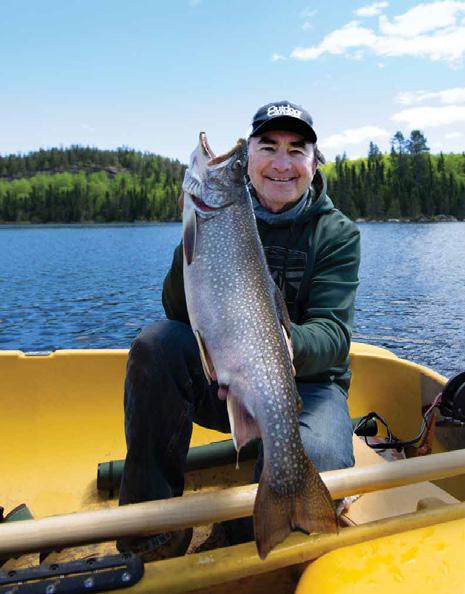

 GARDNER
GARDNER
42 TALKING






TURKEY WITH KIDS
Aiming to take a youngster hunting for spring gobblers? Here’s how to make it an enduring success BY ROBERT PYE

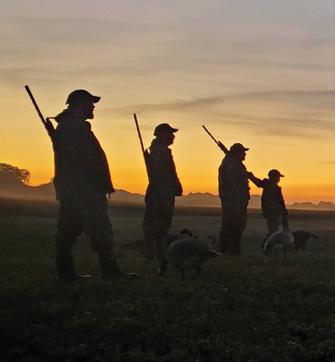
48 HUNT. FISH. GATHER
Make the most of your springtime outdoor pursuits by foraging for wild edibles along the way
 BY STEPHAN LUKACIC
BY STEPHAN LUKACIC
51UP CLOSE AND PERSONAL
For a thrilling (and successful!) spring bear hunt, try thinking inside the box with this DIY tactic BY
GORD NUTTALL54 A TRULY CANADIAN FEAST!
Mmm. Venison Pasties with Blackberry Sauce takes the top prize in our Franchi-sponsored recipe contest
 BY THE EDITORS
BY THE EDITORS
56 MADE FOR HUNTING
The year’s best new guns, ammo, optics, apparel and accessories for heading afield in Canada BY KEN









 BAILEY
BAILEY
62 MADE FOR BOWHUNTING
The top new crossbows, compound bows and accessories for Canada’s coming archery season
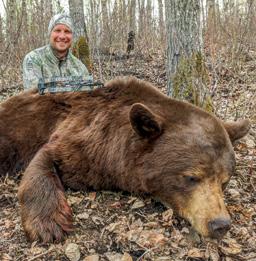
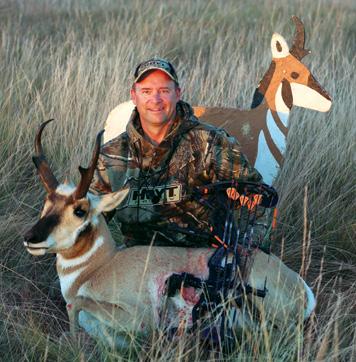
 BY BRAD FENSON
BY BRAD FENSON
66 THE PERFECT BOAT FOR YOU
No matter how you like to fish, having just the right boat makes all the difference when it comes to comfort, convenience and success on the water

 BY CRAIG RITCHIE
BY CRAIG RITCHIE
70 THE PERFECT ATV FOR YOU
Whether you want a solid workhorse or simply a reliable ride to camp and back, having the proper ATV to meet your needs can be a real game changer BY LOWELL
 STRAUSS
STRAUSS
Leeches are nature’s all-purpose fishing bait—if you know the right way to fish them. Learn how to rig these wiggly creatures, and how to keep them lively.
outdoorcanada.ca/leechlessons
Fishing in Canada is so varied, there’s no such thing as one do-it-all spinning combo. If you keep these three different set-ups handy, however, you’ll be ready for almost any angling scenario.

outdoorcanada.ca/spinningcombos
With our world-class fisheries for brookies, browns, bulls, cutties, lakers and rainbows, Canada has no shortage of trout riches across the land. And your skill level or preferred method of fishing doesn’t matter when it comes to getting in on the fishing fun—there’s something for every angler when it comes to trout. To help you take advantage of the countless opportunities, here are Fishing Editor Gord Pyzer’s 50 all-time top tactics for catching these beautiful, iconic fish. outdoorcanada.ca/50trouttips
Join us on Facebook Facebook.com/OutdoorCanada

Follow us on Twitter @OutdoorCanada @OutdoorCanadaW

Follow us on Instagram @outdoorcanadamagazine

Follow editor-in-chief Patrick Walsh on Twitter & Instagram @OutdoorWalsh

Follow associate editor Scott Gardner on Twitter @OutdoorGardner
Outdoor Canada fishing editor Gord Pyzer regularly posts fishing tips, gear reviews and much more on his blog, “On the water online.” Check in often to stay on top of exciting developments in the world of angling.


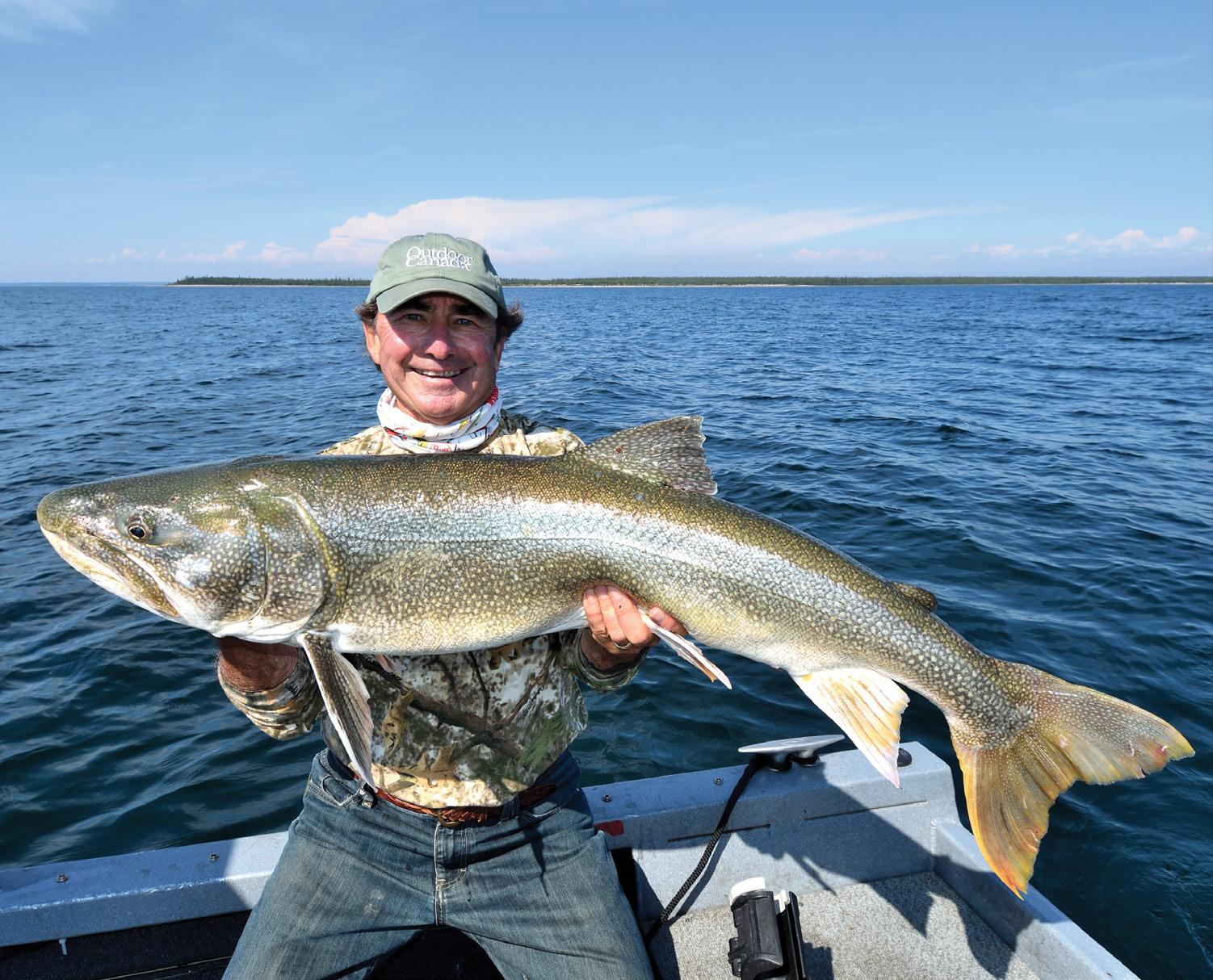
outdoorcanada.ca/blogs
What do you do when a spring gobbler hangs up out of range? Try these seven expert tactics, and you’ll have that big tom come crashing into your set-up in no time.
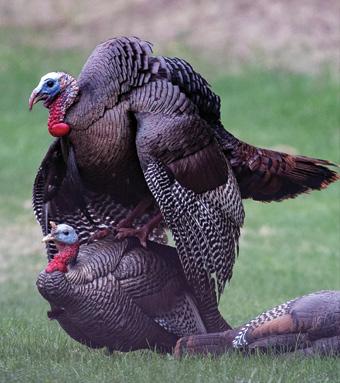
outdoorcanada.ca/hungupturkeys
TRIGGER CONTROL
One essential, but often overlooked aspect of making an accurate shot with a rifle is how to properly squeeze the trigger. Here’s how to master the technique. outdoorcanada.ca/triggercontrol
Every spring, black bears emerge hungry from their dens. To find big boars, then, scout for their preferred meals, which include emerging tree buds, grasses and forbs. Here’s where to look.
outdoorcanada.ca/bearforage

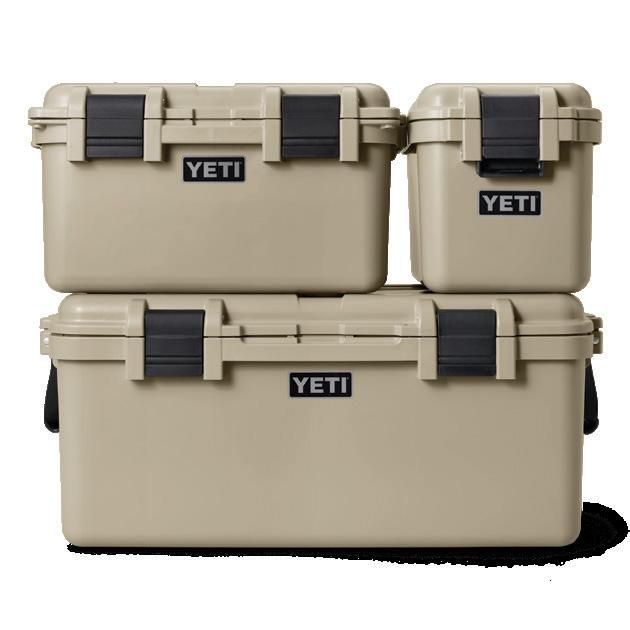
I just thought I’d drop you folks an email and tell you how much I enjoyed this issue (Fishing Special). The article “Outpost insight” by Scott Gardner stood out, as it relates not just to fly-ins, but also to any group fishing trip. Having been on a few fly-ins and numerous drive-to fishing trips, I found the article brought up things I’ve overlooked that could make my group trips more memorable and enjoyable. Thank you Scott Gardner and Outdoor Canada
RICK MARTIN TILLSONBURG, ONTARIOWith regard to Ken Bailey’s article on hunting in Africa (“Shoot of a lifetime” January/February), I learned a few tips on my hunt several years ago. As Ken mentioned, travelling with firearms is not the easiest, partly because there are no direct flights from Canada to South Africa. You have to make a transfer at one of the major European airports, and there’s a good chance your firearm will not arrive at your destination in time,
or even at all. The best way is to take a direct flight from New York City so your firearm stays with you the whole time. There are also firms that will, for a fee, handle all the necessary permits in all countries and deliver your firearm directly to your hunting destination. Having said that, I also agree it would be easier to rent from the professional hunter. My rifle and scope were excellent quality, and I believe I paid $25 a day, plus $4 per cartridge fired.
 DAVE MOLNAR ST. CATHARINES, ONTARIO
DAVE MOLNAR ST. CATHARINES, ONTARIO
It is with profound disappointment with your editorial judgment and disgust for the author that I saw the utter carnage exploited by Ken Bailey in his shameless killing of the 100-plus birds displayed in “Shoot of a lifetime.” Shooting thousands of birds is not sport, regardless of whether they are considered pests. Your choice to publish this article shows your collective poor taste and I shall not be renewing my subscription to your magazine. To draw from Immanuel Kant’s categorial imperative, what would
happen if everyone acted this way? If any other species on this planet acted like we do, we would exterminate them for the infestation that they are.
The editors reply: As with all hunts we feature in Outdoor Canada, this particular bird hunt was conducted according to the seasons and regulations set forth by the local authorities. Your Kant reference doesn’t apply here. Namely, if there were more hunters available to help control crop depredation, the bag limits would be lowered. This is not dissimilar to how we set limits here in Canada to achieve wildlife management imperatives, whether for fish or game. Limits and seasons are established to maintain stable wildlife populations, not decimate them as you infer. We should also note that while helping to thwart crop depredation, such hunts in Africa also feed local communities with much welcomed meat protein.
I was surprised you featured Liberal MP
Kody Blois (“On the record,” Fishing Special). Then I realized you were poking fun at his lack of knowledge of firearms (or his slavish adherence to Liberal lies). He seems to ignore the fact that many hunting shotguns operate just like “assault-style” rifles—semi-auto, and gas operated. His statement plays well for the uninformed when the Liberals want to confiscate legally owned property. I guess his appalling ignorance is why he is a Liberal.
DALE MCBAIN MOOSE JAW, SASKATCHEWANof various practices on fish health. It recommends only exposing fish to air for 10 seconds or less, while the Saskatchewan catch-and-release guidelines are for 30 seconds or less. The problem with the Master Angler programs is that they require a photo of the fish to be taken alongside a measuring device. It’s impossible to unhook a fish and take the necessary photos in under 10 seconds; even doing so in less than 30 seconds is unlikely. How can one then conclude that Master Angler programs don’t harm fish? At least it’s comforting to know fish that die after release are excluded.


strong. So is the timeless .300 Win. Mag. As for the recent craze over the .300 Short/Ultra Magnums, on the other hand, they’re already old news. And now the current darlings of the shooting scene, the 6.5 Creedmoor, 6.5 RPC, 6.8 Western, and the 27 and 28 Noslers will soon follow them into the cartridge columbarium! These cartridges were simply a marketing scheme by the firearms manufacturers to sell more products, not to replace a niche that’s already filled by timeless cartridges.
The purpose of the article “Master plan” (January/February, West edition) was to examine whether Master Angler programs in Saskatchewan and Manitoba do more harm than good. The article does a good job of articulating the issues of releasing fish without causing post-release mortality. Unfortunately, the Master Angler regulations that create this risk were not highlighted sufficiently. Best practices for catch-and-release are outlined by the organization Keep Fish Wet, which compiles research on the impact
RON ENNS WINNIPEG, MANITOBAKen Bailey’s article “Cartridge craze” (January/February) makes some interesting points. “Who wants to shoot the same old cartridges their father and grandfather used?” he asks. Well, I sure do, and I’m not alone. Last fall, I hunted with a 1920 vintage Winchester Model 1886 lever rifle in .45-70, a cartridge invented in 1873. After 150 years of continuous production, it is still going
If you want to help the firearm industry’s bottom line, then buy one. But if you think you’re buying the next wonder of the world cartridge, well, you’ll find it’s already here between the .222 and .45-70 cartridges. And even if the 6.5s to .300WSM/Ultra Mags are used for 1,000 years, they won’t even come close to all the game taken with the veteran .30-30 Win.
DAVID OSECKI PORCUPINE PLAIN, SASKATCHEWANAs a lifelong hunting dog owner—I am on my seventh dog—I was quite »
disappointed you left out one of the most desirable hunting dogs for Canadian hunters (“Hunt ’em up,” November/ December 2022). I have owned German shorthaired dogs, and in my opinion the German wirehaired pointer is one of the best-suited dogs for Canadian hunters. They generally work much closer than German shorthaired pointers, and their coat helps them withstand our harsh weather. Each of us has a favourite breed, which I totally understand, but to leave out this iconic dog is very disappointing. From my own experience, and of course my own personal bias, they are the best all-round hunting dogs.
HAL BANASCH
REDCLIFF, ALBERTA
Writer and photographer Mark Raycroft replies: Yes, the German wirehaired pointer is a superb hunting companion and, as you note, very well suited to the Canadian landscape. I’m sorry you were disappointed, but it was very difficult to decide which dogs to represent, given the space limitations. Perhaps we will have the chance to revisit this topic in a future
PLEASE E-MAIL

issue, and feature other great canines, such as the German wirehaired pointer.
Guest columnist Phil Morlock rightly alerts us to outdoor access issues (“Access at risk,” Hunting Special 2022). Yet in Saskatchewan, hunting access was restricted by our homegrown government’s 2022 Trespass to Property Act, not international environmental non-governmental organizations (ENGOs). Morlock misses the mark on other points. “Protect our land and water from what?” he asks. Saskatchewan’s prairie, where we hunt and fish, has been reduced to 17 per cent, and grassland loss continues. There are other exaggerations in need of scrutiny. Outdoor Canada should increase its fact-checking efforts, especially for articles where the magazine accepts a level of ownership, such as guest columns.
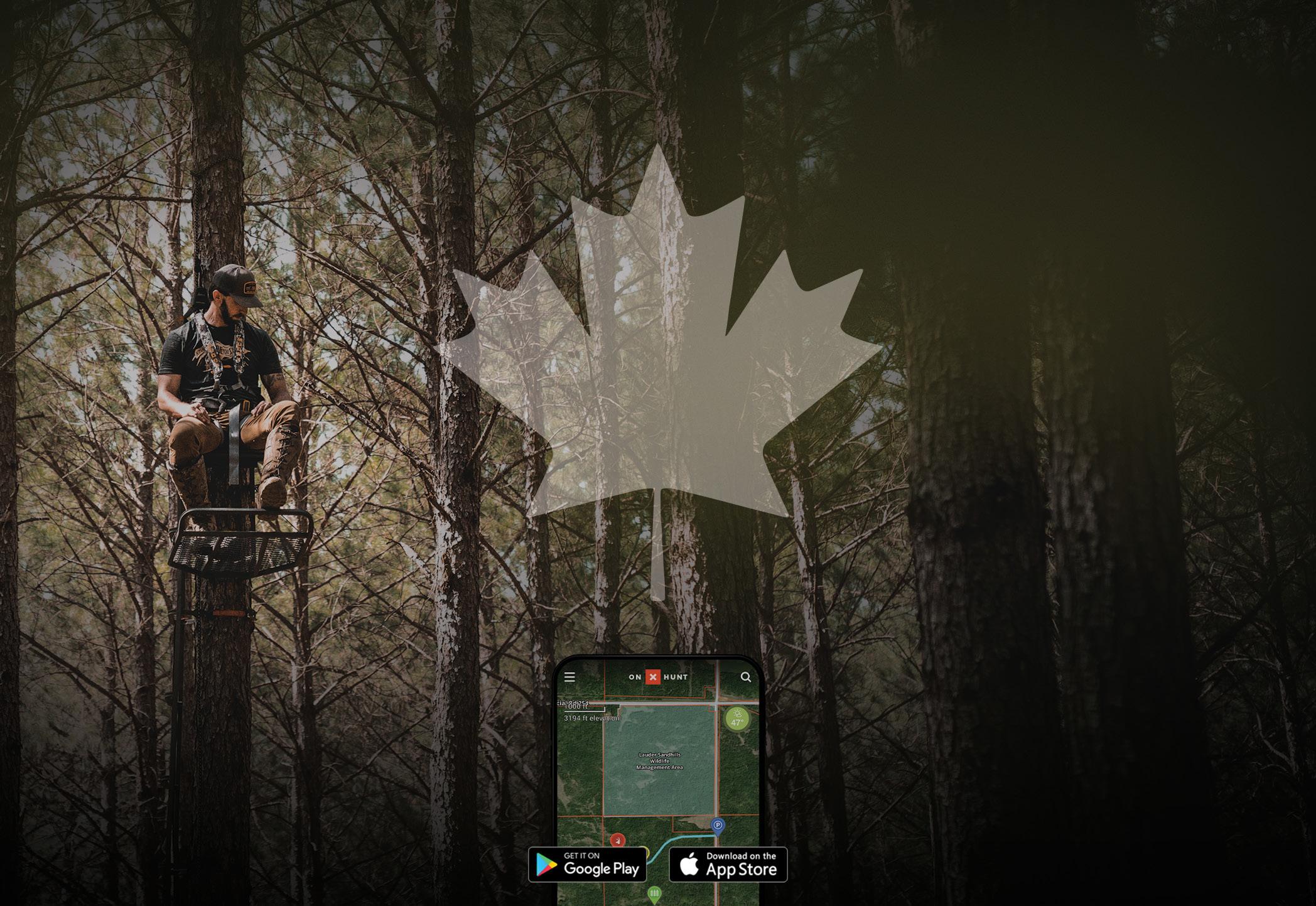 JOE SCHMUTZ SASKATOON, SASKATCHEWAN
JOE SCHMUTZ SASKATOON, SASKATCHEWAN
Guest columnist Phil Morlock replies: The evidence is unequivocal and clear about the unprecedented threat to Canadian anglers and hunters through foreign and domestic ENGOs successfully lobbying Ottawa for the arbitrary zoning of access over vast areas of public land and water. The Outdoor Caucus Association of Canada, the Canadian Sportfishing Industry Association, members of Parliament and the U.S. Congress, and a coalition of 70 U.S. fishing, hunting and conservation organizations have been engaged in addressing public access and the 30x30 issue for years (see www.huntfish3030.com). In the U.S. process, federal agencies are cooperating with stakeholders to maintain the important nexus among hunters, anglers, trappers and science-based conservation. For Canada, the 30x30 and 50x50 initiatives to protect land and water are mandated by the prime minister to his ministers, while science and stakeholders are shut out. OC
YOUR COMMENTS TO EDITORIAL@OUTDOORCANADA.CA. YOU CAN ALSO CONNECT WITH US ON TWITTER (@OUTDOORCANADA OR @OUTDOORCANADAW), INSTAGRAM (@OUTDOORCANADAMAGAZINE) AND FACEBOOK (FACEBOOK.COM/OUTDOORCANADA).SCAN THE QR CODE FOR A FREE ONE-MONTH ONX HUNT ELITE TRIAL. BY PATRICK WALSH
HUMBLED. PROUD. GRATEFUL. Energized. And completely gobsmacked. So ran my range of thoughts and emotions when I learned I was this year’s inductee into the Canadian Angler Hall of Fame. After all, the honour certainly wasn’t warranted by my angling prowess—there are far hotter sticks out on the water than me in Canada. Rather, the Hall of Fame alumni voted for me to join their ranks based on my 23 years of media and advocacy work in the world of Canadian sportfishing, and for that I am deeply honoured. I’m also extremely thankful, as there are countless fantastic people in the fishing community also worthy of this wonderful award. So, cheers to my fellow Hall of Famers!
Thank you also to the entire crew at Outdoor Canada, particularly my immediate team of managing editor Bob Sexton, art director Sandra Cheung and associate editor Scott Gardner. I share this honour with them, because without these three, the magazine would not have been able to accomplish all that it has to promote angling (and hunting) in Canada. Finally, thank you also to all you amazing people in Canada’s sportfishing community for giving us so much to write about and look forward to—and for also doing your part to make fishing such a vibrant and essential part of Canadian culture. OC
FOR MORE ON THE HALL OF FAME, GO TO WWW.OUTDOORCANADA.CA/HOF2023
When we learned federal Conservative Party leader Pierre Poilievre wanted to voice his support for Canada’s hunterconservationists, we promptly invited him to contribute this issue’s guest opinion column. On page 22, he pledges to defend hunter rights and traditions in the wake of Ottawa’s Bill C-21 gun grab.

With a strong focus on sustainability, self-reliance and healthy oudoor living, outdoorsman Stephan Lukacic of Haliburton, Ontario, offers workshops on foraging for wild edibles. In “Hunt. Fish. Gather” (page 48) he explains how anglers and hunters can augment their springtime pursuits by collecting delectable wild plants and fungi along the way.
Burlington, Ontario, writer and editor Craig Ritchie has contributed to dozens of publications over the past 30 years on a variety of topics, among them the recreational boating industry. Turn to page 66 for his considered advice on how best to select the perfect fishing machine to meet your specific angling needs—and your budget.
When not visiting another far-flung fishing locale, our associate editor, Scott Gardner, is hard at work editing and writing content for our website and magazine, including features about the various places he’s wet a line. For the tale of his latest adventure, see “The Triple Crown of the Far North,” starting on page 36.
ESTABLISHED 1972
EDITOR-IN-CHIEF & BRAND MANAGER Patrick Walsh
MANAGING EDITOR Bob Sexton
ASSOCIATE EDITOR & WEB EDITOR Scott Gardner
ART DIRECTOR Sandra Cheung
FISHING EDITOR Gord Pyzer


HUNTING EDITOR Ken Bailey


PUBLISHER Mark Yelic

NATIONAL ACCOUNT MANAGERS
Rosemary Bubanovich, Dave Harkley
RETAIL AND CLASSIFIED ACCOUNT MANAGER Chris Holmes
MARKETING MANAGER Desiree Miller
DIRECTOR OF RETAIL MARKETING Craig Sweetman
AD TRAFFIC COORDINATOR Michaela Ludwig
DIGITAL COORDINATORS Lauren Novak and Blaine Willick
CIRCULATION & CUSTOMER SERVICE: Marissa Miller and Lauren Novak
CONTROLLER Anthea Williams

OUTDOOR CANADA IS PUBLISHED BY OUTDOOR GROUP MEDIA LTD.
Outdoor Canada magazine (ISSN 0315-0542) is published six times a year by Outdoor Group Media Ltd.: Fishing Special, May/June, July/August, Hunting Special, November/ December, January/February.
Printed in Canada by TC Transcontinental.
SUBSCRIPTION RATES: Canada, one year (six issues), $24.95 plus tax. U.S., one year, $39.95. Foreign, one year, $69.95. Send name, address and cheque or money order to: Outdoor Canada, 802-1166 Alberni St., Vancouver, B.C. V6E 3Z3.
MAIL PREFERENCE: Occasionally, we make our subscriber list available to carefully screened companies whose products and services may be of interest to our readers. If you want your name removed, contact us via the subscripton contact below.





Publication Mail Agreement No. 42925023. Send address corrections and return undeliverable Canadian addresses to Outdoor Canada, 802-1166 Alberni St., Vancouver, B.C. V6E 3Z3



USPS #014-581. U.S. Office of publication, 4600 Witmer Industrial Estates, Unit #4, Niagara Falls, N.Y .14305. U.S. Periodicals Postage paid at Niagara Falls, N.Y. Postmaster: Send address changes to Outdoor Canada, P.O. Box 1054, Niagara Falls, N.Y. 14304-5709. Indexed in Canadian Magazine by Micromedia Ltd.
EDITORIAL SUBMISSIONS: We welcome query letters and e-mails, but assume no responsibility for unsolicited material. Distributed by Comag Marketing Group. ©2023 Outdoor Canada. All rights reserved. Reproduction of any article, photo or artwork without written permission of the publisher is strictly forbidden. The publisher assumes no responsibility for unsolicited material.
Subscriptions and customer service 1-800-898-8811
Subscriptions e-mail service@outdoorcanada.ca



Customer service website www.outdoorcanada.ca/subscribe

MAILING ADDRESS: Outdoor Canada, 802-1166 Alberni St., Vancouver, B.C. V6E 3Z3




General inquiries (604) 428-0259
Editorial e-mail editorial@outdoorcanada.ca
Members of the Manitoba Wildlife Federation, Saskatchewan Wildlife Federation and Alberta Fish & Game Association must contact their respective organizations regarding subscriptions.
NUMBERS GAME
95th
Anniversary this year of the Ontario Federation of Anglers and Hunters, Ontario’s largest non-profit fish and game conservation organization. Founded in 1928 as the Ontario Federation of Anglers, the group adopted its current name in 1947 when several hunting associations joined its ranks.


6,050
Invasive goldfish removed since 2020 from B.C.’s Dragon Lake using electrofishing. Thought to have originated from released pet goldfish, the burgeoning population has been competing with the 225-hectare lake’s coveted rainbow trout, and disrupting the local ecosystem.

241
Unwanted firearms surrendered to police and conservation officers last year through Saskatchewan’s annual firearms amnesty program, during which no charges are laid for unlawful possession. If firearms are found not to be part of an active investigation, they are destroyed.

$25 million Money Ottawa has earmarked over the next five years for crucial freshwater research at northern Ontario’s Experimental Lakes Area, run by the International Institute for Sustainable Development. Announced in March on World Water Day, the funding will focus on threats to aquatic ecosystems.
50th
Anniversary this year of the South Carolina, U.S.based National Wild Turkey Federation, founded in 1973 to promote wild turkey conservation, habitat restoration, hunter recruitment and public access. Its 250,000 members are also committed to preserving America’s hunting heritage.

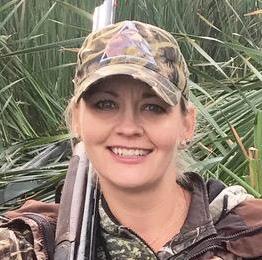
Hey, wait up! An elk calf tags along behind its mother near Bancroft, Ontario, last June, a positive sign for the area’s wild elk reintroduction program. The first elk were released in 2000, and limited hunts began in 2011.

Speaking to Winnipeg’s CityNews, the Manitoba Wildlife Federation’s managing director, Carly Deacon, reacts to news Manitoba is putting a seven-day cap on hunting licences for visiting American waterfowlers. Along with other measures, the move is meant to stop dwindling access to hunting grounds for residents. Says Deacon: “It’s getting ahead of a growing problem.”
“We’re
about all of this.”
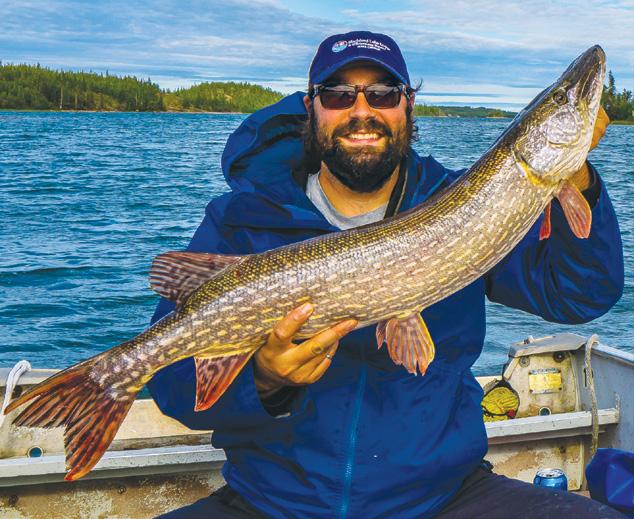
 BY CRAIG MITCHELL
BY CRAIG MITCHELL
PORTAGES ARE THE shortcuts of the backcountry, the various overland routes connecting one body of water to another. Depending on where you’re paddling, they can be busy places, too. And portaging isn’t just the act of transporting your canoe and gear in the most efficient way possible—it’s also about how you carry yourself while engaging with other outdoor enthusiasts. Here’s what to keep in mind to ensure trouble-free portages on your next backcountry fishing or hunting adventure.
PACE YOURSELF Washed out trails, ankle-breaking rocks, fallen trees and other obstacles can be hazardous when you’re portaging a canoe, heavy pack or harvested animal. So, don’t be afraid to carry less, make multiple trips and take breaks. That way, you’ll be steadier on your feet and less likely to trip or fall. Remember, a portage is not a contest to see who can carry the most gear, or finish first.
YIELD TO OTHERS Portages are natural bottlenecks in the backcountry, so if you’re going to run into someone, it will likely be on a portage. If you meet others carrying canoes or heavy packs who are travelling in the opposite direction, move to the side and let them pass. If there are obstacles or tricky stretches along the way, meanwhile, always let those facing the higher risk go first.
BE RESPECTFUL If you meet others on a portage, it can be a great opportunity to share information, trade gear or just catch up on weather reports. Not all people in the backcountry are hunters and anglers wanting to chat, however, so be mindful of their sensibilities and their time. If you’re travelling with a dog, meanwhile, keep it safely on a leash to avoid tripping up others.
MIND YOUR GEAR When you reach the end of an exhausting portage, place your canoe and gear off to the side of the trail so you don’t impede others while you rest. Plus, loose paddles, packs, PFDs and fishing poles can be tripping hazards. If you’re carrying a rifle or shotgun, take extra care to store it safely.
LEAVE NO TRACE Nothing spoils a remote outdoor experience more than seeing other people’s garbage, such as food packaging, spent shotshells and old fishing line. You don’t want others—or animals—to find your trash, so clean up after yourself and take it home with you. Worse yet is seeing another person’s washroom waste, so don’t be that surface pooper. Instead, dig a hole and bury your business, as well as any soiled toilet paper. OC
Emerging cabbage beds are northern pike magnets during late spring and early summer, but it can be a chore keeping big soft-plastics and swimbaits free of weeds. So, instead of casting them out, try trolling them on a short leash. That way, you can weave your way along a weedline, or over the tops of the weeds, and never hang up. And when you troll with a short line, the baits will instantly respond to every zig, zag and speed change you make. I like to let out enough line to keep my bait just behind the prop wash—25 to 30 feet is usually ideal. Muskie anglers have long trolled lures in the frothy water behind the boat, and it’s just as effective for gargantuan northern pike.
—GORD PYZERAmong the most perceptive freshwater fish that swim, common carp can be quickly conditioned to show up when you chum with corn. The trick is to chum at the same time every day for three or four days so the fish will be waiting for you (if you change the routine and show up at a different time to fish, however, they often won’t be there). When you first arrive, throw a few handfuls of corn into the area you plan to target, then periodically sweeten the fringes as you fish. The trick is to keep the carp snooping around your fishing area like children on an Easter egg hunt, rather than allow them to quickly eat up everything and move on.
 —GORD PYZER
—GORD PYZER
WE ENJOY SEEING pictures of your fishing and hunting accomplishments—and learning the stories behind them. Please e-mail us your images, along with any relevant details (who, what, where and when), and we’ll post them on Instagram and publish our favourites here.
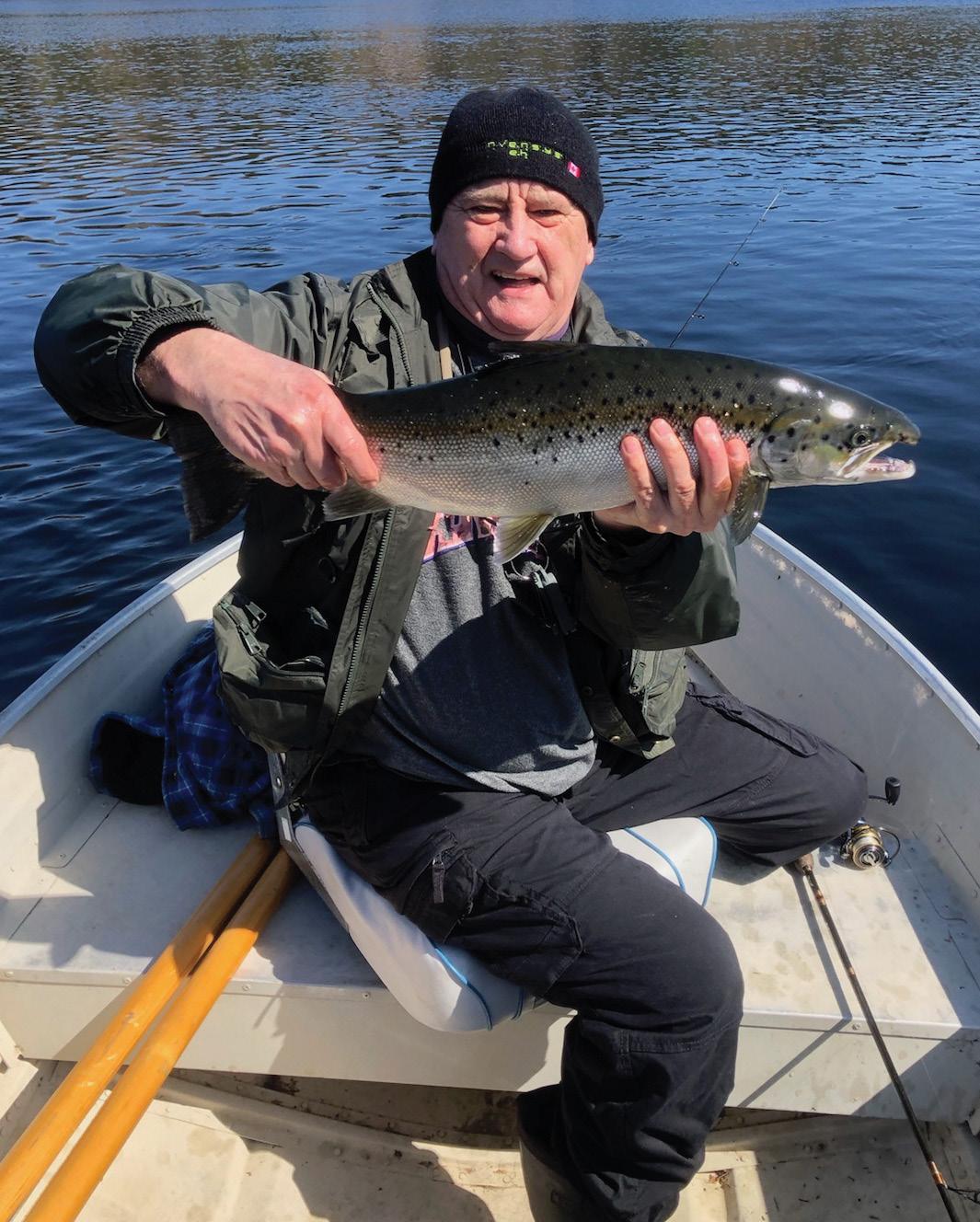
It was at 6:30 p.m. on the last day of the spring bear hunt last year when Mike Berdusco connected with this big bruin “in the middle of nowhere” north of Kenora, Ontario. “I had pretty much accepted I wasn’t going to shoot a bear this year!” says the Grimsby, Ontario, hunter, whose best friend Ryan Stelter took the photo and helped pack out the 380-pound dressed bear.
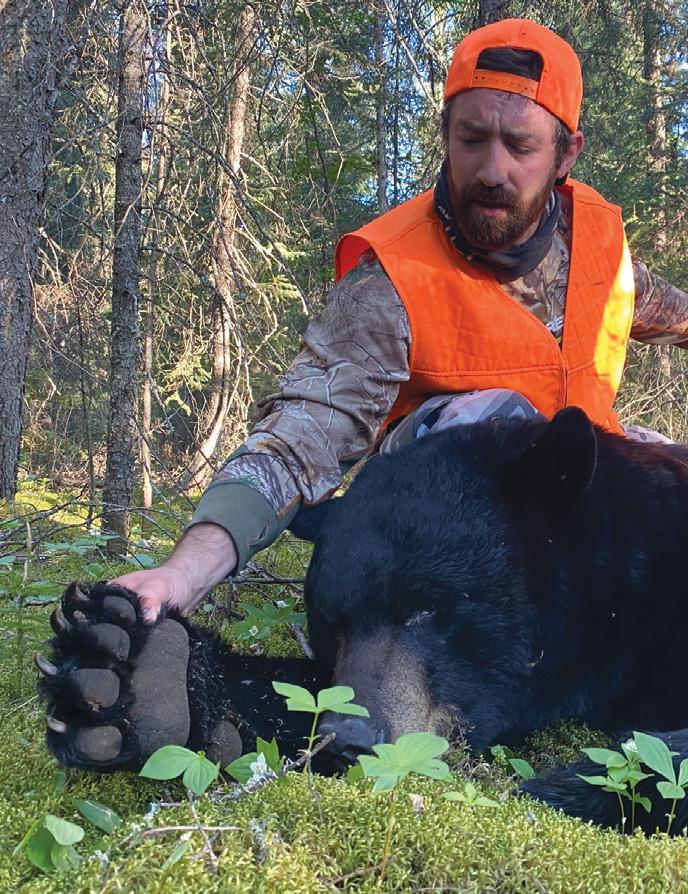
Start ’em young! Five-year-old Joseph Chamberlain was happily on hand to help retrieve birds during the first goose hunt of the season with his father, Brad, and friends early last September. Tenderfoot Joseph and his crew were hunting near the Chamberlain family home in Beaver County, Alberta.
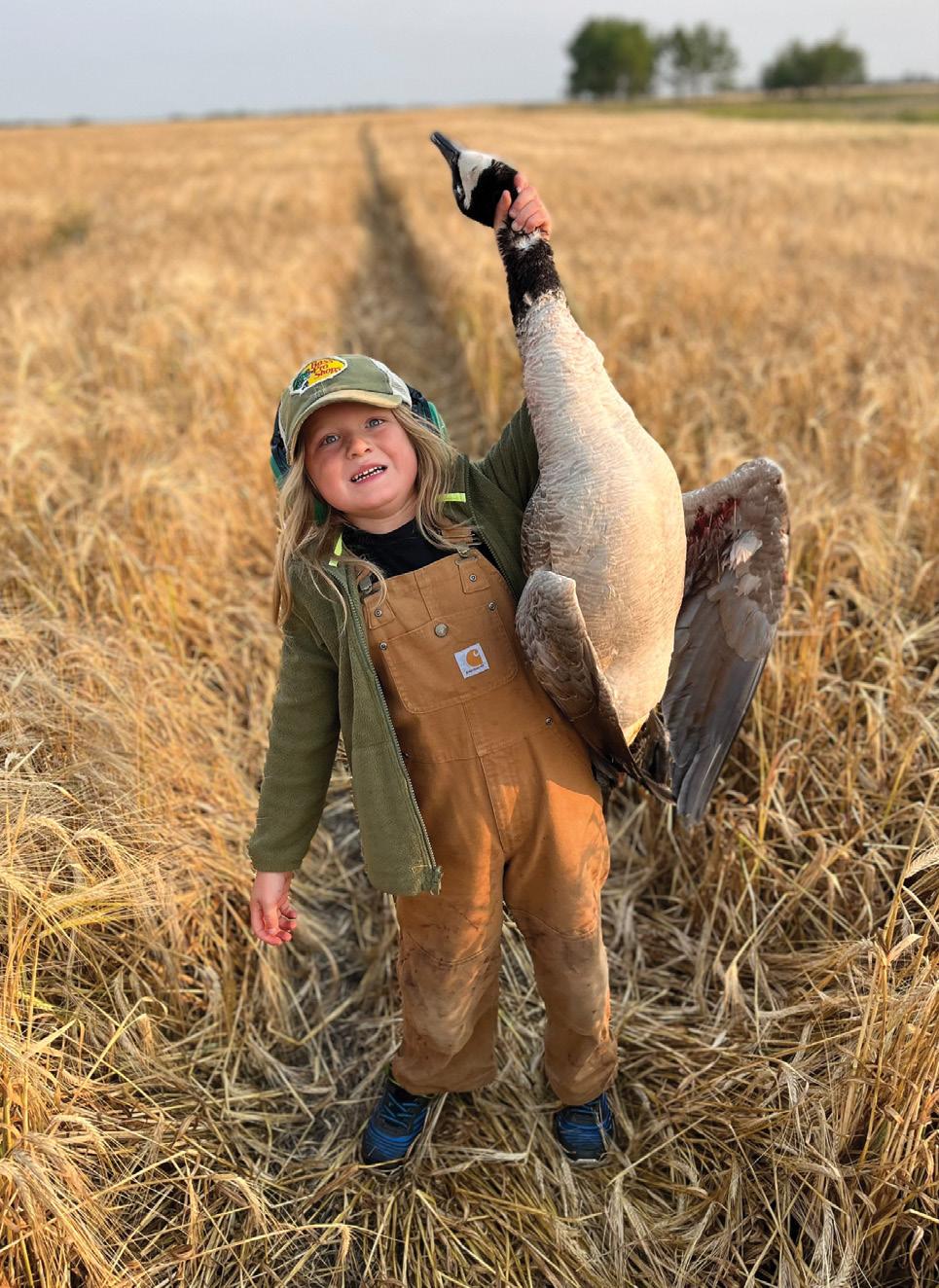
Rocky View County, Alberta’s Chantal Gregory was with her young son, Jack, and husband, Jesse, last September when she took this fine mule deer with her compound bow near Drumheller. As a bonus to the successful family day afield, the gorgeous buck was still in full velvet. Says Chantal: “It was a fun hunt.”
While trolling on Quebec’s Lac Gagnon in the Papineau-Labelle Wildlife Reserve last May, angler Alan Chaif pulled in this beauty 5.2-pound Atlantic salmon. “It was one of four I caught that day,” says the Pointe-Claire, Quebec, angler. “And it was the biggest landlocked salmon I have ever caught! OC
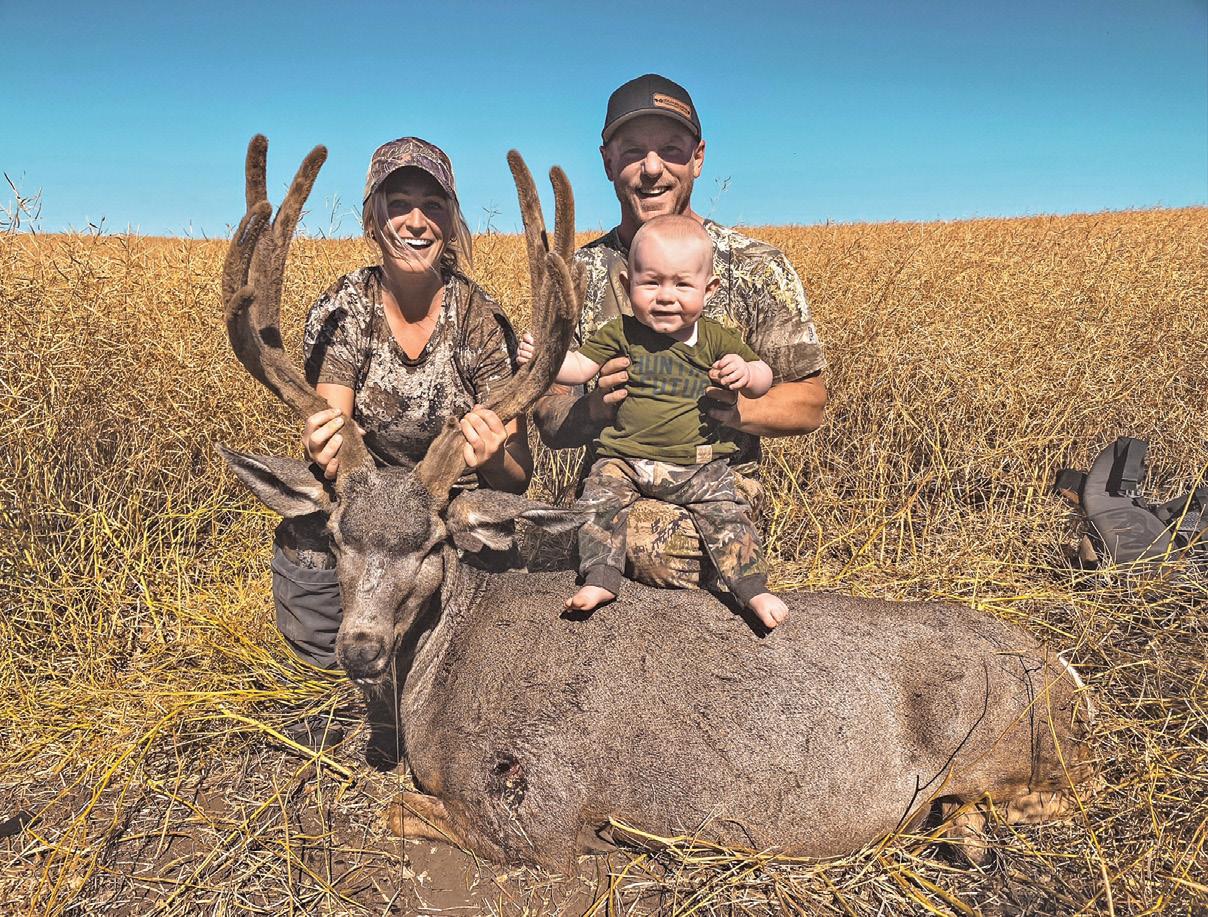
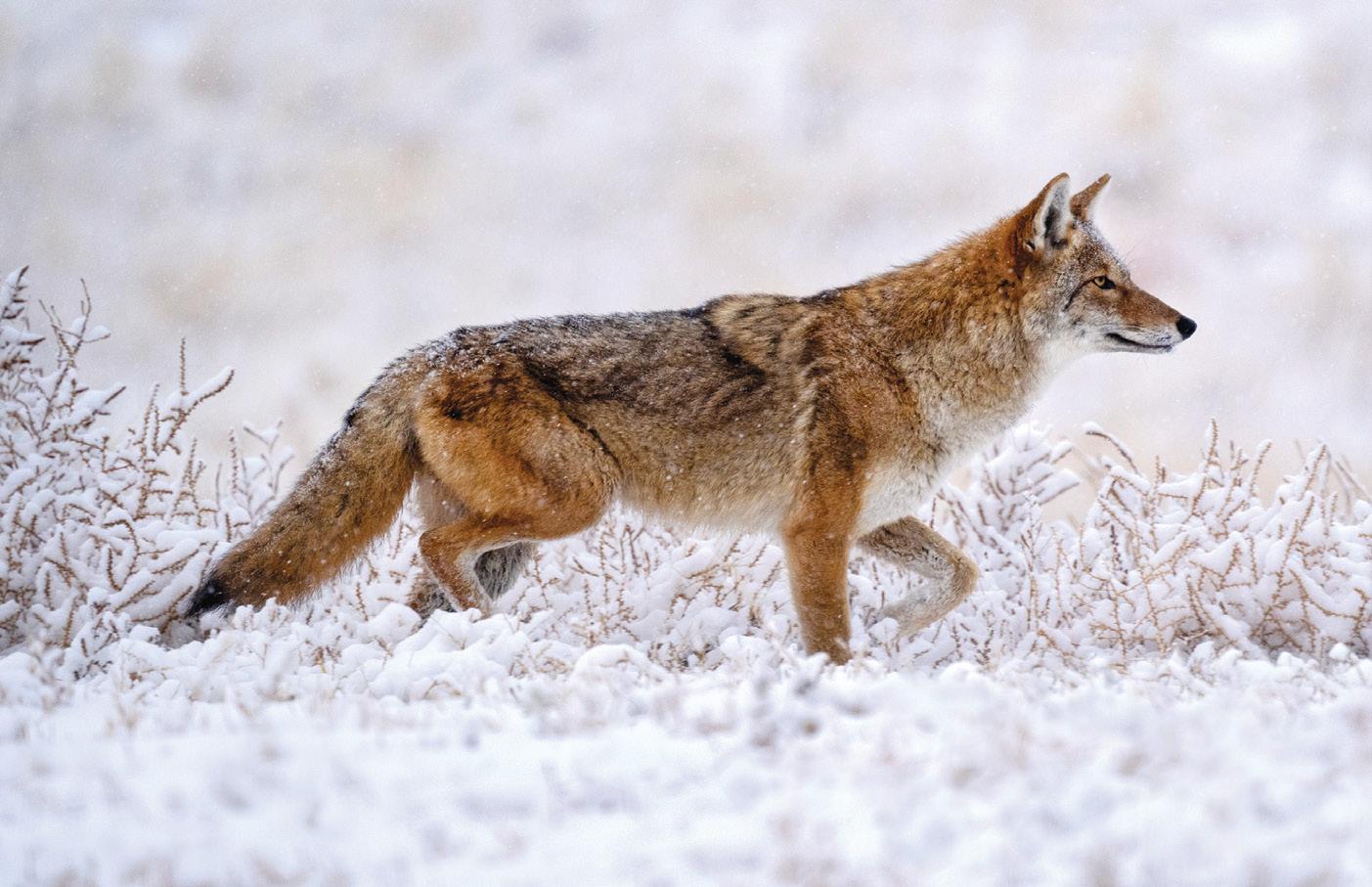 BY PETER JEKEL
BY PETER JEKEL
ASMALL, HIGHLY dangerous tapeworm with a big name—Echinococcus multilocularis (EM)—that can jump from wild canids to domestic dogs and humans has taken firm root in southern Ontario. Cases of the potentially fatal disease are most prevalent in a cluster along the north shore of Lake Erie and the south end of Lake Ontario, where there are significant populations of coyotes and red foxes.
Prior to 2012, the province was considered free of the tapeworms, but in 2019, University of Guelph researchers were surprised to find them in 23 per cent of the coyotes and foxes they tested. The disease is now considered an “immediately notifiable hazard” under Ontario law, with mandatory reporting of cases to the province’s chief veterinarian.
Infected wild canids and their domestic cousins (and in rare circumstances, cats) carry EM in their intestines, shedding the parasite’s eggs in their feces. The eggs are then potentially consumed by small mammals, such as mice, chipmunks and squirrels, where they hatch and move to the animal’s liver, and possibly other organs.
In the liver, the eggs forms cysts, which act like cancerous tumours that can invade other organs, such as the brain and lungs; this is known as Alveolar echinococcus (AE). When a wild canid or dog eats the infected rodent, the cycle continues. Just this past December, residents in Durham region were warned not to touch wild animals after an infected chipmunk was found in Port Perry.
Typically, canids are infected in their intestines, thereby not causing any real harm to the animal. Sometimes, though, the parasite may leave the intestines and form cysts in the animal’s liver. At the very least, a dog can serve as a bridge to human infection by bringing the parasite home—and that’s when the danger starts. Pet owners can become infected with AE by inadvertently getting the eggs on their hands and ingesting them. Predator hunters and trappers are also considered at risk.
When the eggs hatch in humans, they grow ever so slowly, taking from five to 15 years for symptoms such as headaches, vomiting and cramping to appear. Individu-
als typically remain unaware they are infected unless the disease is discovered through routine screening for other illnesses.
The doubly unfortunate part is that the longer AE remains undiagnosed, the more difficult it is to treat, often involving surgery to remove the tumour-like mass. In cases where there is no treatment or treatment occurs too late, the fatality rate can be as high at 94 per cent.
To break the chain of transmission, dog owners should have their pets screened for parasites at least annually by a veterinarian; treatments are readily available to get rid of the parasite. Owners should also prevent their dogs from eating rodents, which is not as easy as it sounds, hence the regular screening. And after they clean up their pet’s feces, they should thoroughly wash their hands. As for hunters, they should avoid letting their dogs eat the offal from gut piles. In addition to rodents, animals such as elk, deer, sheep and caribou can also become infected by the parasite.
Pet owners should also keep in mind that the parasite’s microscopic eggs can still be present after the infected feces has been discarded. The hardy eggs can survive in temperatures as low as -50°C and as high as 85°C. Therefore, regular handwashing after playing with or patting your dog is also recommended.
It remains unclear how EM reached southern Ontario. One likely source was through the importation of domestic dogs from other countries, since the strain of the organism in the province points to Europe. That’s not to say the disease didn’t arrive from neighbouring Michigan or northern or western Canada, where it was already present. Alberta has confirmed 15 cases in humans since 2013, including 13 dog owners.
Whatever the case, the disease is making inroads into areas where it was never seen before, and it’s impossible to predict where it is going. What we do know is that the invader is in Ontario to stay. Concludes Jonathon Kotwa, lead researcher in the University of Guelph study: “Transmission of E. multilocularis tapeworms should be considered a public health risk.” OC
AS FACILITATOR AND events coordinator with the Orillia District Chamber of Commerce, Doug Bunker has been organizing the Ontario community’s Perch Festival for 36 years now on Lakes Couchiching and Simcoe. That makes the affable 70-year-old, known simply as “Bunker,” more than qualified to provide early-season perch-fishing tips, and explain why perch are the perfect species to target when fishing with kids.

APPEAL Not only are perch tasty table fare, they also make for great sport, says Bunker, especially when you use light gear. “They’re pretty aggressive little guys and put on a good little fight.” And since perch are a schooling fish, he adds, you can almost be guaranteed more will follow once you catch one.
LOCATION As soon as the ice goes out and the water temperature rises in the spring, Bunker says to look for perch in the shallows near the mouths of creeks and streams before pike and other fish get more active. The perch will be close to the shoreline, he notes, because they’ll be chasing minnows. “That’s their main food in the spring. They’re hungry because the warmer water kicks their metabolism into high gear.”
PRESENTATION When it comes to baits, smaller perch will pretty much go after anything, Bunker says, while bigger fish will be a little more choosy. With that in mind, he sticks with a simple, but effective, splitshot rig with a minnow. To make the rig, he attaches a minnow to a small octopus hook, then pinches on a couple of splitshot a foot or two above the hook. “If you put the weight too close to the bottom, it can get buried in debris or weeds,” he says. “You want it to look like the minnow is feeding, bouncing along just above the bottom.” The key is to make sure the minnow is well hooked, as perch are notorious for stealing bait. “You don’t need to cast it out 50 feet. Just drop it down, let it hit bottom and bring it up. Perch are very curious, and will follow it up to bite”
Given today’s advancements in cameras and growing interest in social media, strapping a video camera to your bird dog not only captures fun memories, it could also make your four-legged friend the next viral video star. Here’s how to get the best dog’s-eye footage.
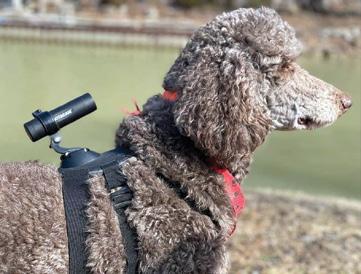
MOUNTING Action cameras are compact and lightweight, complete with various options for attaching them to dogs. First, you want to harness the camera to your dog where it allows for an unobstructed line of sight without encumbering the dog. Also, consider the terrain in which you’ll be hunting—a sidemounted camera can get snagged in brush or cattails, for example. (A side-mounted set-up can also affect your dog’s balance, so consider a counterweight on the opposite side if you go that route.) A chest mount works well on larger breeds, but it may get dirty faster; it’s also a poor choice for waterfowl dogs. For overall video quality, a shoulder harness is best. To keep your dog comfortable, use a padded harness and watch for chaffing in high-friction areas, especially during warmer weather.
PERSPECTIVE Action cameras can record the dog’s point of view as it retrieves or flushes, creating jaw-dropping videos. And by changing the zoom, you can alter the field of view and the resulting video’s look and feel. A wide-angle perspective shows more of the surroundings, for example, but it lacks the details of a zoomed-in viewpoint. Zoom in too much, though, and you risk missing the action if the bird quickly flies or runs out of the frame. Finding the right field of view is simply a matter of experimenting.
PRODUCTION While capturing video of an entire hunt is tempting, it requires a lot of data storage. Reviewing and editing is also onerous. So, to save both memory and time, use a remote control to only record short bursts of action.
—LOWELL STRAUSSFOR MORE ON THE ORILLIA PERCH FESTIVAL, GO TO WWW.ORILLIA.COM/PERCHFESTIVAL
MENTORING The action can be steady when you’re perch fishing, making it a great way to spend quality time outdoors with children—as long as you properly plan for it, Bunker says. That starts with getting the kids familiar with the gear well before they step into the boat. He says he first got his children to practise casting in the backyard, for example, which prevented frustration once they were actually out on the water. OC
FOR THE BEST TIMES TO FISH AND HUNT, CONSULT OUR SOLUNAR CHARTS AT WWW. OUTDOORCANADA.CA/TIMES.
BOB SEXTON (BUNKER); TACTACAM (DOG CAMERA); FISH’N CANADA (BOWMAN AND VIOLA); JUDY GALLAGHER (SOUTHERN ALBERTA); JOHN JAKOBS (CEDAR LAKE); RON SCHAAL (LOCH LEVEN)HITTING THE WATER WITH TV’S FISH’N CANADA SHOW

 BY ANGELO VIOLA & PETE BOWMAN
BY ANGELO VIOLA & PETE BOWMAN
BACK IN THE spring of 2015, we took a trip to New Brunswick to go fishing, as well as cover the inaugural Miramichi Striper Cup, a new and unique style of bass tournament. In both cases, striped bass were the focus of the resulting Fish’n Canada episode. Not only did we get great coverage of the tournament, we also caught so many stripers it was downright ridiculous (in a good way, of course).
Since then, we’ve picked up a trick or two more about targeting striped bass. We’ve also learned it’s not just a springtime fishery. On our most recent visit to hit New Brunswick’s fabled Miramichi River for striped bass, we arrived in October instead, a week before closing day.
Joining us in the City of Miramichi was part-time co-host Steve Niedzwiecki, along with the founder of the Striper Cup, Jeff Wilson. They anchored themselves on the river a few hundred yards from our hotel, the Rodd Miramichi, and proceeded to catch a whack of stripers on cut-bait rigs (imagine heavyduty drop-shot rigs using cut mackerel as bait). Some of the fish they caught, by the way, ended up on our dinner plates that night.

Meanwhile, we started way upriver from the city with the goal of getting into some big stripers using topwater baits. After multiple casts, numerous bait changes and hundreds of fish, we finally struck topwater gold, with YoZuri’s 3DB Pencil Poppers giving us some of the best topwater footage we’ve ever recorded.
Among the four us, we caught so many fish it would have been impossible to keep count, making this fall trip every bit as productive as our spring 2015 visit—but with the exciting topwater twist. The Miramichi’s striped bass fishery offers a truly incredible spring and fall angling experience, and one that we highly recommend. OC
LEARN MORE ABOUT MIRAMICHI STRIPER FISHING AT WWW.MIRAMICHI.ORG, WWW.TOURISMNEWBRUNSWICK.CA AND WWW.MIRAMICHISTRIPERCUP.COM. FOR MORE ON FISH’N CANADA, SEE WWW.FACEBOOK.COM/FISHNCANADA, WWW.FISHNCANADA.COM, WWW.INSTAGRAM.COM/FISHNCANADAOFFICIAL AND YOUTUBE.COM/@FISHNCANADA.
LOCH LEVEN
Located in southwestern Saskatchewan’s Cypress Hills Interprovincial Park, Loch Leven is home to phenomenal trout fishing. In addition to being stocked with brook, cutthroat and rainbow trout, this small, 14.3-hectare lake also supports natural reproduction thanks to an artificial spawning reef. Angling educators Jeff and Jason Matity can provide more local fishing information and tips. www.getfishing.ca
 —GORD PYZER
—GORD PYZER
CEDAR LAKE
The only problem you’ll have fishing on northwestern Ontario’s Cedar Lake is deciding what you want to catch. Located along highway 105, a half-hour south of Ear Falls, Cedar is well known for its walleye and muskie fishing. However, I like to target the lake’s less-pressured smallmouth bass, northern pike and black crappies. Local fishing guide John Jakobs can put you on the right spots. (807) 220-0860
—GORD PYZERRichardson’s ground squirrels (aka gophers) are found in native shortgrass prairie and overgrazed pastures all over the southern half of Alberta. Gopher hunting is a fun and affordable way to hone your shooting skills, as well as introduce newcomers to hunting. And landowners love it when you help control gopher populations. The Alberta Discover Guide is a good resource for finding hunting spots. www.albertadiscoverguide.com
 —KEN BAILEY
—KEN BAILEY
 BY MARK HOFFMAN
BY MARK HOFFMAN
THE FIRST TRIP to the range with my trusty old smoothbore and a box of shotgun slugs was an abysmal failure. I set out with the idea of hunting whitetails with that do-it-all 12-gauge, but every time I squeezed the trigger, I only rattled a few molars and was lucky to hit a paper plate at 30 yards. In them good ol’ days, you just went with what you had, and in my case, it was a lightweight pump and Foster-style slugs.
If I learned anything from my early years, to quote Winchester, it was “don’t try to turn your duck gun into a buck gun.” If you can’t hit a paper plate at 100 yards, in other words, you best change your ammo or your gun. So, rather than missing a buck at 50 yards, I ended up swapping the slugs for SSG buckshot.
Meanwhile, an evolution in guns and ammo had begun, driven by urban expansion and the creation of more shotgun-only hunting zones. The result was the introduction of sabot slugs and rifle-barreled slug guns, which continue to improve. Take the semi-auto SX4 Cantilever Buck, the new generation of slug gun from Winchester that replaces the SX3.
Mechanically, it features a 22-inch rifled barrel that’s chambered to handle 2¾- and three-inch sabot slugs. The barrel includes a Weaver-style cantilever rail for attaching a red dot or conventional scope; if you prefer open sights, it comes equipped with a TruGlo fibre-optic front sight and an adjustable rear sight.

The SX4’s matte black receiver is made of a strong, lightweight aluminum alloy, while inside the self-adjusting valve system automatically allocates the exact gas pressure to reliably cycle a wide range of loads—and reduce felt recoil. Other mechanical features include a drop-out trigger group, an enlarged bolt handle, an oversized release button and a larger ambidextrous cross-bolt safety.
As for the synthetic stock, it includes improved ergonomics, a rounder grip and textured surfaces for a non-slip grip in nasty weather. Finished in a nonglare matte black, the stock includes length-of-pull spacers and a recoil pad designed to direct felt recoil down and away from the shooter’s face.
The first thing that caught my eye on my 20-gauge test model SX4 was just how
high the cantilever rail appeared to be when sighting down the barrel. While it still allowed me to utilize the iron sights, I could not attain a cheek weld, despite the low-profile Bushnell 4500 1-4x24 scope and the lowest mounts I could find. Together with the scope, the gun tipped the scales at eight pounds one ounce, a manageable weight for most hunters.
As for the trigger, it had a pull weight north of six pounds, which is typical for a shotgun, but a pet peeve of mine when it comes to riflebarreled slug guns. I would have preferred a rifle-like trigger with a consistent pull weight of around three or four pounds. Otherwise, the SX4 spit out hulls with plenty of vigour and cycled flawlessly on the range.
While this gun wasn’t a tack driver, I did’t expect it to be. For the most part, it delivered respectable groups between two and three inches, although Federal Premium Trophy Copper (below) did produce one sub-MOA group (then expanded to two inches in the next group). Overall, the Trophy Copper had the best two-group average at 1.53 inches, followed by Hornady SST at 2.2 inches and Winchester Deer Season at 2.42. A single group of Remington Premier AccuTip holed out at 2.47 inches.
While that is not centrefire-rifle accuracy, it’s a far cry from the old days when I couldn’t hit a paper plate at 30 yards. I certainly wouldn’t hesitate to take a shot at a buck out to at least 125 yards with any of those four varieties of ammo. Note that none of them grouped in proximity to one another, so if you were considering switching brands, plan another trip to the range before heading off to your favourite deer woods. OC

• Gauge: 20
• Chamber length: 3″
• Barrel length: 22″
• Overall length: 43″
• Length of pull: 14¼″
• Weight: 7 lb 4 oz
• Drop at comb: ¾″
• Drop at heel: 2″
• Magazine capacity: 4 x 2¾″ shells
• 4 trout fillets, skin on (4 oz each)
• Kosher salt and pepper, to taste
• 2 tbsp canola oil
• ½ cup Sauvignon Blanc
• 3 cloves garlic, chopped
TYPICALLY ONLY ENJOYED in upscale fine-dining establishments, this savoury dish is packed with protein, omega-3 fatty acids, B vitamins and more thanks to the nutrient-rich trout. Health benefits aside, the combination of trout, salty capers, creamy butter and fresh lemon makes for flavourful perfection. Serves 4

1] Lightly score the skin side of the fillets with a sharp knife, then season with salt and pepper.
2] Heat oil in a non-stick pan to medium-high, then sear trout skin side down. Once the skin is crispy, flip the fillets and reduce heat to medium.
3] Add the wine and garlic to the pan. Once the wine is reduced by half, add the capers and lemon juice and bring to a simmer.
4] Add the butter and almonds, swirling the pan to melt the butter. Finally, sprinkle with parsley, adjust the seasoning if necessary, and serve immediately. OC
• 2 tbsp capers
• Juice of half lemon
• ¼ cup butter, cubed
• 3 tbsp slivered almonds, toasted
• 1 tbsp chopped fresh parsley
A refreshing white wine from Canada’s Peller Estates, Private Reserve Sauvignon Blanc 2021 VQA offers a fine accompani ment for this exquisite fish dish. Serve chilled, and expect lingering aromas of grapefruit, gooseberry, passionfruit and lemony herbs.
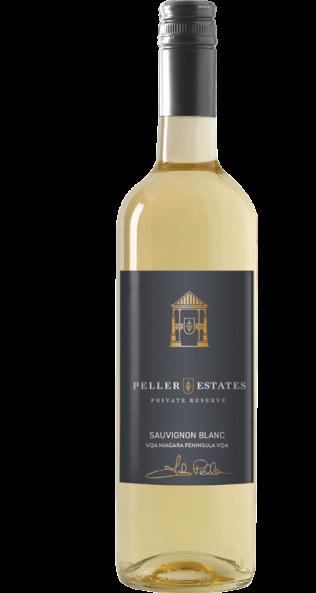
THE EDITORS
KAYAK FISHING REMAINS increasingly popular in North America as both casual and hardcore anglers continue to discover the enormous benefits and opportunities. While still at a fraction of the cost of big boats, kayaks are also becoming more sophisticated, with pedaland paddle-powered models now available for almost any angling style, as these latest offerings reveal.
BONAFIDE RVR 119 (US$1,649)
Bonafide Kayaks, www.bonafidekayaks.com
Key features: River-specific hull for stability in current, and easy dragging over shallow spots; anchor channel and roller; removable, watertight sonar/storage pod. The promise: “Ultimate fishability meets the river.”
DORADO V2 (US$3,199)
Feelfree, www.feelfreeus.com
Key features: Forward/reverse pedal drive; integrated wiring for electronics; four rod holders with tie-downs; large storage areas; LED deck lights. The promise: “Performance and features to dominate your tournament circuit.”

12T SIT-ON (US$750)
Ascend, www.ascendkayaks.com

Key features: Wide, tunnel-style hull and flared bow for stability; deluxe adjustable seat; accessory-ready dashboard; optional RedHead waterfowl blind. The promise: “So stable, you can stand up and cast.”
SHOALIE (US$1,599)
Crescent Kayaks, www.crescentkayaks.com
Key features: Multiple sonar mounting options; padded two-position seat; upright and horizontal rod storage; anchor channels. The promise: “Signature paddling performance, with systems designed specifically for fishing.”


MIRAGE PASSPORT 10.5 R (US$1,799) Hobie, www.hobie.com
Key features: New one-piece rotomoulded hull; Mirage pedal drive with fins that collapse on impact with obstacles, then automatically redeploy; stowable rudder. The promise: “Versatile and quick on the water.”
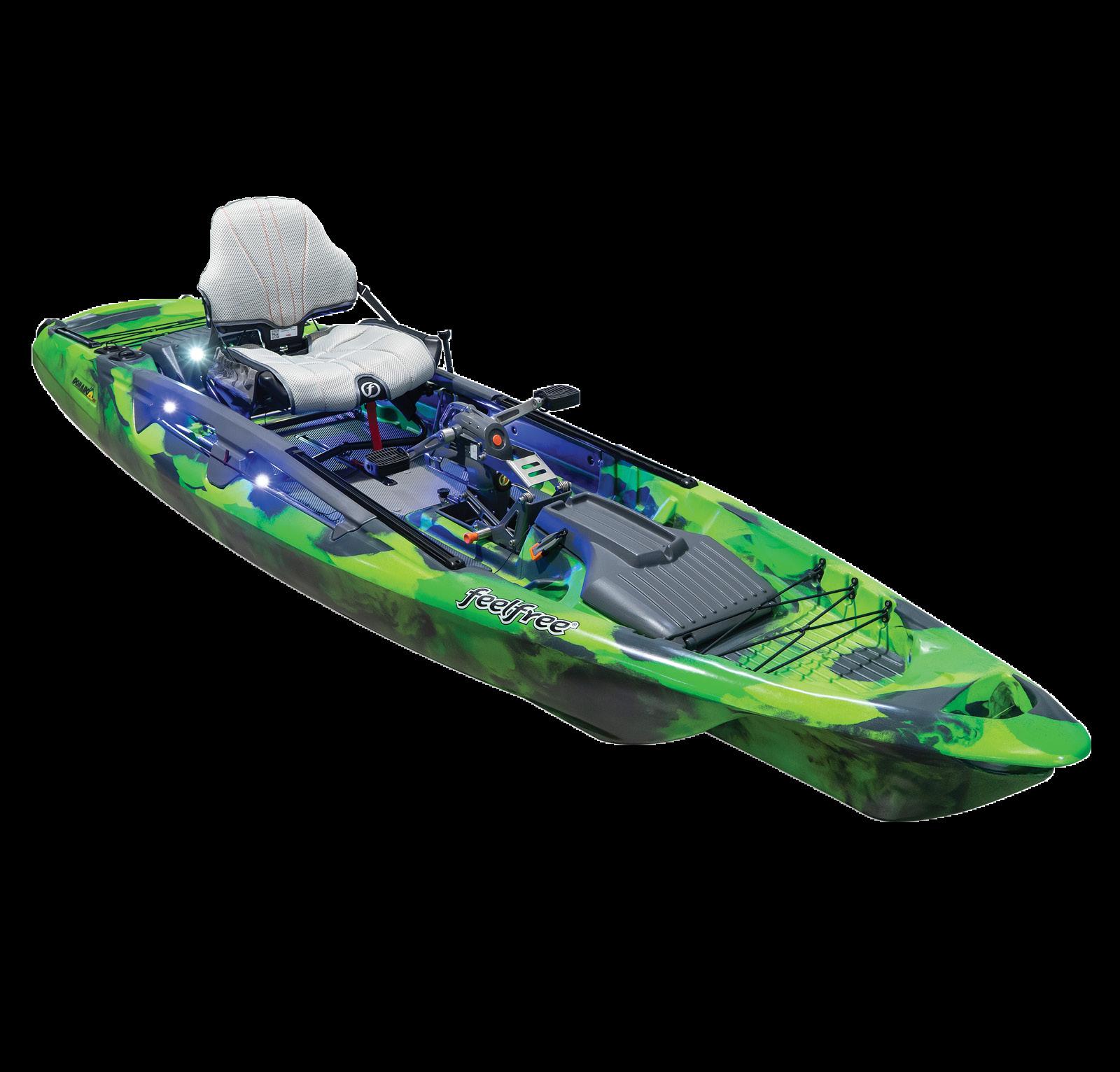
KNARR FD (US$4,199)
Jackson Kayak, www.jacksonadventures.com
Key features: Long and wide design for moving quickly on oceans and large lakes; all-new pedal and rudder system; storage for six rods; accessory tracks. The promise: “Built for surf, current, wind and the elements.”

WHETHER YOU FISH RECREATIONALLY OR YOU’RE A COMPETITIVE ANGLER, THERE’S A KAYAK FOR YOU
FALCON 11 (US$1,049)
Native Watercraft, www.nativewatercraft.com
Key features: Compact and stable; twoposition high and low seating; console with battery and transducer access; deck pads for standing; dual rod holders. The promise: “Affordability and fishing-ready features.”
Vibe Kayaks, www.vibekayaks.com
Key features: Compact pedal boat; quick-dry, dual-position seat; two rod holders; four accessory tracks; oversized tankwell; protected transducer port; noise-cancelling deck pads. The promise: “Featurepacked, bite-size kayak.”
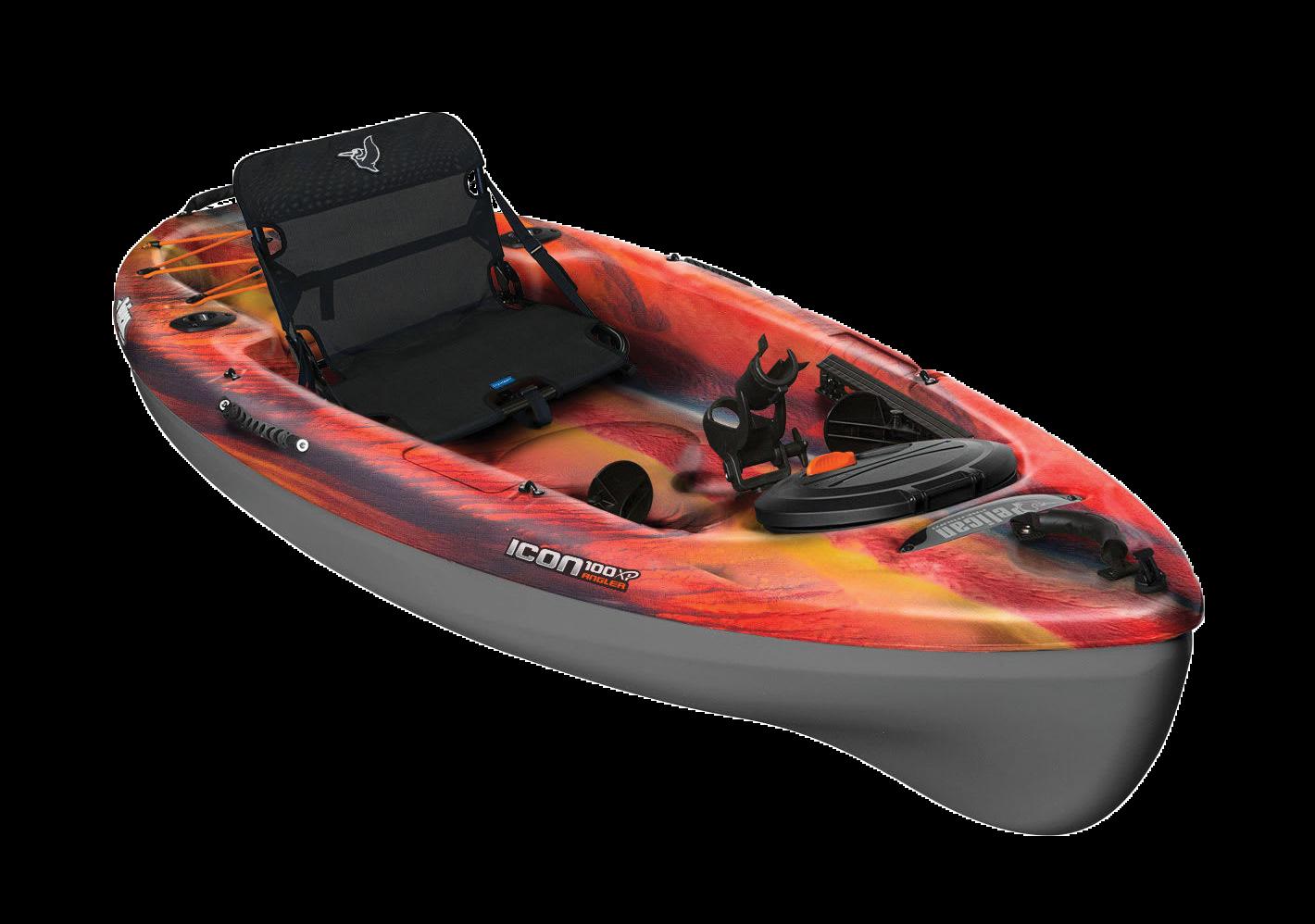

ICON 100X ANGLER ($814.99)
Pelican International, www.pelicansport.com
Key features: Compact, lightweight, Quebec-made boat; adjustable-tension seat; three upright rod holders, plus horizontal storage for two paddles or rods. The promise: “Easy to transport, carry and store.” OC

A MAN AND HIS RIVER
In his 16th book, A Man and His River ($24.95), veteran angler and author D.C. Reid chronicles his 25 years of fishing solo on Vancouver Island’s Nitimat River, sharing his fascination with the river’s natural cycles and the wildlife that call it home. Included are his top tips for tackling West Coast trout and salmon. Hancock House Pub lishers, www.hancockhouse.com

THE VAULT
This durable 65-litre duffle bag ($220) is designed to be completely air- and watertight, right down the zipper. It features one external and two internal pockets, an air valve for compressing puffy gear, ergonomic shoulder straps, and multiple attachment points for lashing the bag to vehicles. It can also be worn as a backpack. Uncharted Supply Co., www.unchartedsupplyco.com

FISHE®WEAR LEATHER SHARKBYT E
Xtratuf has added a nubuck leather offering to its Sharkbyte line of women’s deck shoes, featuring Fishe®Wear’s eye-catching Groovy Grayling design ($135). The water-resistant shoes sport removable cushioned insoles, slipresistant chevron outsoles and pull tabs for slipping them on and off with ease. Xtratuf, www.xtratuf.ca

When choosing the right kayak for your angling needs, first consider the type of water you fish, your preferred style of fishing and, of course, your budget.
SIZE For an adult angler, 10 feet is the minimum practical length for a fishing kayak. Shorter boats in that range are light and nimble, and good for rivers and smaller lakes. Kayaks in the 12- to 14-foot range are faster and roomier, and they can handle larger water. They are significantly heavier, however, which is an important factor when it comes to transportation and storage.
BUDGET Inexpensive kayaks get you in the game, but as models increase in price, they offer more sophisticated designs, better components and much more comfortable seats. Used kayaks can offer excellent value, but act fast because they quickly get snapped up.
GS50 PORTABLE PROJECTOR
Designed for outdoor use, Benq’s drop- and splash-proof GS50
Portable Projector (US$799) is ideal for viewing your fishing and hunting videos while still at camp. Along with universal inputs for playing media from a variety of devices, it can also stream Android TV services. Powered by a rechargeable battery, the unit doubles as a Bluetooth speaker. Benq, www.benq.com

FOR THE MILLIONS of people who love the outdoors, Canada is nothing short of utopia. Our country is a paradise of lush woodlands, crystal-clear lakes and landscapes that have inspired Canadians and visitors from around the world. Over the years, the abundant natural beauty of our great nation has been admired and enjoyed by millions of proud and decent hunters and anglers, and you have persistently worked to preserve this bounty for future generations.
Unfortunately, the current Liberal government has targeted hardworking people like you—hunters, in particular—with its blatantly ideological policies. The government’s attempted hunting rifle ban, Bill C-21, is the most recent example of Liberals demonizing hunter-conservationists in this country for cheap political point scoring. While violent crime continues to plague city streets across our country, and illegal, smuggled handguns are flooding across the border, the Liberal solution has been to target millions of legal rifles and shotguns that Canadian hunters use every single day.
The current government’s abysmal record on crime only makes this approach more galling. Since Justin Trudeau took office, violent crime in Canada has increased by 32 per cent. Gang-related homicides have risen by 92 per cent. And in 2021, there were 124,000 more violent crime incidents than when Conservatives were last in government, in 2015.
Instead of taking real action to keep our cities safe, however, the Liberals have chosen to go after the millions of Canadians who use firearms for hunting and shooting sports, as well as for dealing with farm pests and keeping their property safe. They have also ignored Indigenous leaders, who have denounced C-21 for encroaching on their constitutionally protected hunting rights. Instead of listening to these important voices, Liberal MPs snuck in a 478-page amendment at a parliamentary committee after the legislation had been through a full round of debate in Parliament.
Thankfully, after months of sustained pressure from Canadians such as you and advocacy from Conservatives, the government has temporarily paused its hunting rifle ban. But the damage has already been done. Trudeau’s attempted firearms grab was the largest in our history, and it has exposed his government’s disdain for Canadian hunters. It has also shown C-21 for what it is, a cynical, ideologically motivated scheme to distract from the Prime Minister’s failures on public safety. Undoubtedly, the Liberals will try this again if they ever get the chance. In an interview with CTV just this past December, Trudeau himself
said his plan was to “take away” guns from people using them to hunt.
While the Liberals were forced to temporarily withdraw their expansive amendments, C-21 remains a deeply flawed piece of legislation. It retains bans on many popular guns covered in the government’s unilateral Order in Council from May 2020, and it continues to target millions of law-abiding gun owners.
Notably, the withdrawal of the amendments also fails to address the Liberal government’s intention to confiscate the millions of guns that still fall under C-21. In September last year, Ottawa announced a confiscation program with scant details, leaving Canadian hunters wondering if they would eventually be put on the wrong side of the law. Questions around implementation and compensation have also yet to be addressed. While the entire country is suffering from out-of-control inflation fuelled by government overspending, the Liberal’s proposed confiscation program would tack on a minimum of $756 million.
It is an outrage that at a time when our cities are being held hostage by thugs who use illegal handguns smuggled in over the border, and as millions of Canadians are forced to use food banks just to get by, Justin Trudeau is planning to spend millions in taxpayers’ money to confiscate guns from those least likely to commit crimes.
The irony in all of this is that, despite the government’s attempts to sing its own praises when it comes to protecting our natural environment, the Liberals are targeting some of the strongest champions of conservation. Hunters have always been on the front line of ethical and sustainable hunting practices. They have worked tirelessly to keep our lakes and rivers clean.
Conservatives recognize that penalizing these patriotic hunters, who are vetted, trained and licensed, is not the way to address the concerns of Canadians around public safety. We will continue to defend the rights of hunters—and defend their timeless Canadian traditions. OC

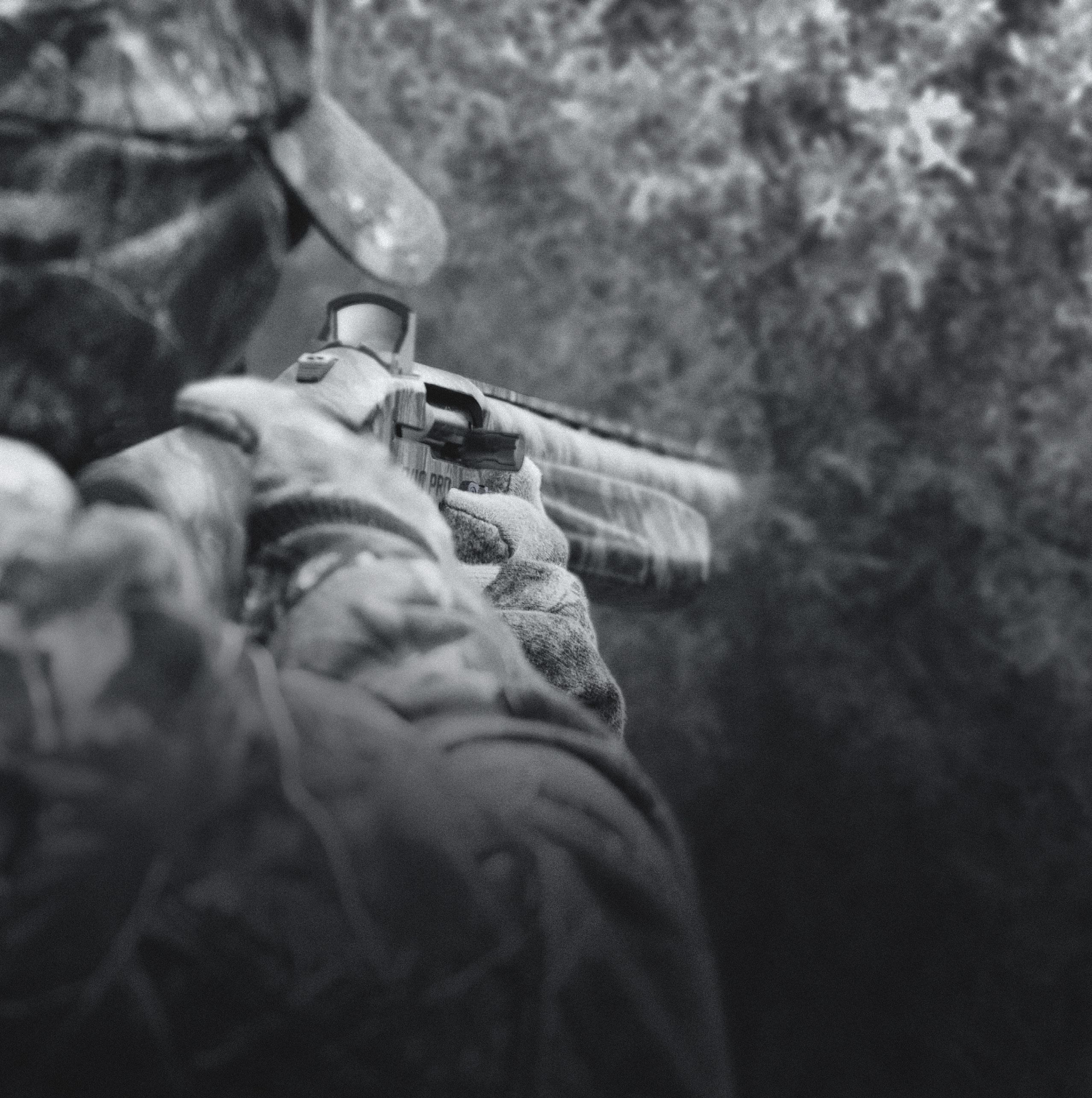



















TO CATCH WALLEYE, YOU NEED THEM TO BOTH SEE AND FEEL YOUR BAIT
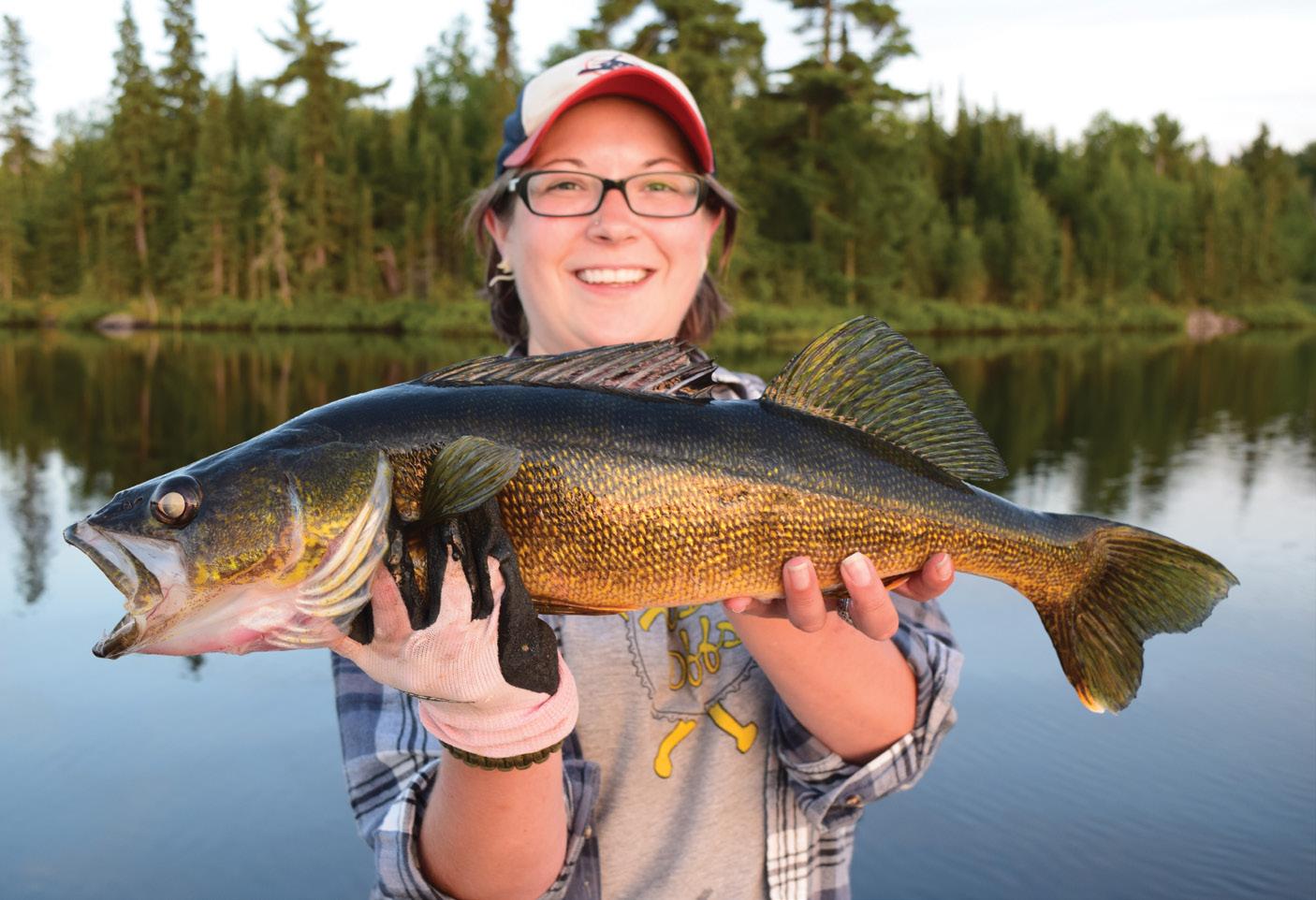
AS ASTUTE WALLEYE anglers, we know Canada’s most popular sportfish are negatively phototactic and crepuscular, meaning they see and feed better in dim conditions than they do in bright light. That’s why we often catch more and bigger walleye at first and last light, during overcast days and when a breeze creates that much sought-after “walleye chop.”
That’s also why we’ll plow through waves to get to the windy side of a lake to increase our chances of catching fish. And if the water is stained with algae, clay or mud once we arrive, so much the better. When we’re forced to fish in clear water, meanwhile, we know we’ll generally find the walleye down deep where the sunlight doesn’t penetrate the water column, or on the shady side of structures and cover.
While knowing all of this helps eliminate unproductive water and put us in the right location to catch fish, many of us still stumble when we open our tackleboxes to select baits and presentations. Why? Because we figure the walleye will carefully scrutinize our offerings and reject anything that doesn’t look quite right. If you understand how walleye detect prey and what triggers them to bite, however, the best choices will become clear.
A walleye’s big peepers are dominated by large cone cells that enable the fish to detect shapes and colours—red, orange and green, in particular—but in a perpetually blurry world. As strange as it seems, they can’t actually see any of the fine details on our baits. It can even be argued walleye don’t use their eyesight at all when deciding whether to bite. Instead, they only rely on their vision to lead them to the possibility of food—or our lures—then switch over to their lateral line.
Fisheries folks refer to a walleye’s lateral line as its sixth sense, that of distant touch. Made up of hundreds of tiny receptors, it amplifies low-frequency vibrations so well it can even detect where a chub or shiner recently swam through the water column. It’s a brilliant detection system that explains why pulsating lures, including crawler harnesses, spinner rigs, cork-screwing slow-death hooks, lipless crankbaits and, especially, soft-plastic paddletails are so effective.
Thanks to my good friend Doug Stange, the host of In-Fisherman TV, I was fortunate to be part of the small group of anglers who got in on the early swimbait scene more than 20 years ago. A pioneer of the technique, Stange was the first angler to use half-, 3⁄4- and one-ounce saltwater bullet jigs and five- and six-inch softplastic swimbaits for walleye.
I will never forget watching him experiment with those heavy jigs and soft-plastics in the giant aquarium at the In-Fisherman headquarters in Brainerd, Minnesota. Walleye would spot the offering, come over for a look, follow as it thumped along, then suddenly lunge and devour it. Since fish have binocular vision, the walleye clearly weren’t relying on their eyesight when they were that close to the bait. Instead, it was their lateral line sensing the thumping lure that convinced them to bite.
Coincidentally, it was around the same time that another group of anglers began ripping lipless vibrating crankbaits under the ice of Lake Winnipeg to attract and trigger mammoth walleye into devouring their lures. Again, it was the lateral line picking up the vibrating cranks that did the trick.
So, yes, it’s important to select lures and presentations that match the size, shape and profile of the food the fish are targeting. Incorporating their favourite colours can further heighten the attraction. Ultimately, though, it’s the lure’s throbbing vibrations detected via the walleye’s lateral line that seal the deal—and lead to ’eye-popping results. OC
FISHING EDITOR GORD PYZER SHARES HIS PROVEN TROUT TIPS ON PAGE 28.
The term “lux” is an international unit of measurement for the amount of illumination that is present in any given scenario. Without getting too technical, one lux equals the amount of illumination on a one-square-metre area that’s one metre away from a candle. To put that into perspective, the amount of illumination on a sunny day is nearly 25,000 lux, while on an overcast day, it’s 1,000 lux. As for walleye, they prefer approximately 300 lux.
your fly was an instant earlier, leaving
FISHING THE HANG IS A SIMPLE TRICK FOR CATCHING A LOT MORE FISH

WE’VE ALL EXPERIENCED it, the tap, swirl or flash of colour made by a fish trying to eat your fly—at the exact moment you pull it away for your next cast. This kind of agonizing near-miss is especially common when fishing a sinking line in still water. At the end of a long retrieve with no strikes, you’re understandably eager to make a fresh cast, but then end up kicking yourself for doing it a split-second too soon. For 20 years, I thought this was just an inevitable, exasperating part of fly fishing. It’s not. There’s an astonishingly simple and effective technique called “fishing the hang” for hooking those last-moment biters. Here’s why it works, and how to do it.
To understand fishing the hang, it’s helpful to think about how a sinking fly line—and thus your fly—behaves. When a sinking line hits the water, the whole length descends at the same rate, sweeping the fly and leader down with it. As you strip in line, the fly follows a roughly horizontal path until it’s almost back to you, then it rises steeply toward your rod tip. (The same thing happens with a weighted fly and a floating line, but since the fly doesn’t go very deep, the final rise is less dramatic.)
Now consider how fish behave. Thanks to underwater camera footage, we know that trout in lakes and ponds often follow baits for a long time without striking. Bass, pike, walleye and other fly-rod gamefish do the same thing. However, these followers are sometimes triggered to bite if the bait changes speed and direction, like a baitfish or insect moving toward the surface.
So, picture how a subsurface fly on a sinking line moves at a relatively consistent depth until near the end of the retrieve, when it scoots up toward your rod tip. That triggers the fish to attack, just as you’re flicking the line up and away. Instead of hitting steel, though, the fish strikes the spot where
The fix for this scenario is facepalmingly simple. Near the end of your retrieve, when you still have one and a half to two rod lengths of line out, stop pulling in line. Then hold the line tight to the handle, smoothly lift the rod tip to the 10 o’clock position, and wait for five long seconds. This is “the hang,” that moment when the fly is motionless below your rod tip. More times than you’ll believe, that is when a fish will strike.

And since you’ve got the line pinched against the rod, and the rod is only halfway raised, you can easily set the hook. Often, though, the fish will hook themselves, especially bigger ones that have turned on the jets to grab the disappearing meal. Believe it or not, this simple technique will hook at least 20 per cent more fish; even doubling your hookups isn’t out of the question.
Fishing the hang consistently does present two minor problems, however. How do you know the right spot to pause? And (if my experience is anything to go by) how do you even remember to pause? The solution is a hang marker, a short, highly visible or textured spot on your fly line marking the pause point. When you see or feel this spot while stripping in line, you know it’s time to hold still for a moment. Some fly lines come with a hang marker (as pictured above), or you can simply mark the spot with a Sharpie or slide a piece of old fly line onto the spot. Using basic fly-tying skills and materials, you can also wrap a bit of thread or floss to the line as a marker.
It’s just that simple. Fishing the hang is one of the few techniques that fly anglers of any skill level can easily do, and it will instantly catch you more fish. And as a bonus, you won’t be haunted by 20 years of missed strikes, like those of us who were slow to catch on. OC
ASSOCIATE EDITOR SCOTT GARDNER IS ALWAYS SEEKING TO UP HIS FLY GAME.
WITH EACH YELP I made, the big Merriam’s tom responded with a sharp gobble. He was coming in hot, every exchange drawing him closer through the deep timber high up on the mountainside. Then he hung up at 40 yards and started pacing back and forth—no matter what calls I used, he just wouldn’t step into view. Finally after 20 minutes, he spotted our decoys, raced in and went into full strut. As soon as he fanned and turned away, my wife drew and waited until he pivoted broadside, then released. Tom down. When bowhunting, you need to get close to your target species, and that’s where today’s incredibly lifelike decoys come into play. When used properly, they can lure a wide variety of game into bow range, as well as distract your quarry to give you a better chance at a shot. Here’s how to decoy effectively when bowhunting.
Most game animals are attracted to decoys that resemble their own species, lulling them into a false sense of security. If a whitetail sees another deer standing in a field or clearing, for example, it tends to relax, assuming there are no nearby threats. The same goes for other ungulates, as well as game birds. And when you combine decoys with natural vocalizations such as estrus calls, grunts, bugles and even distress sounds for hunting predatory species, you can close the deal in a hurry.
When setting up, I often employ portable one-dimensional fabric decoys, such as those pioneered by Montana Decoy. A strategically positioned cow moose or elk facsimile will routinely catch the eye of an incoming bull, drawing him in on a string. Similarly, I like using Flambeau’s three-dimensional deer decoys when I’m sitting in a stand or ground blind. Both flocked and straight plastic 3-D decoys work, but the more realistic they appear, the better.
For spot-and-stalk scenarios, one of the best tools for a bowhunter are the innovative Heads Up Decoys. These are ultra-lightweight, one-dimensional dekes, typically picturing only the animals’ head and neck. Available for a variety of different species and configurations, these lifelike decoys mount directly to the front of your bow (just be aware of other hunters in the vicinity).
Drawing your bow when game animals are up close can be tricky because
they’re usually on high alert and can easily detect your movement. Every bowhunter knows this is a risky moment, but it’s part of what makes the sport so much fun. It’s also when decoys really shine. By providing a distraction, they give the bowhunter an undeniable advantage when it comes to getting to full draw and taking the shot.
Knowing how to correctly set up decoys, as well as when to use them, makes all the difference. In all situations, the shooter should be positioned downwind of the decoy or, if that’s not possible, at least in a crosswind set-up. Whether I’m hunting from a stand or on the ground, I typically place my decoy within 20 yards of my position, which is ideal for an archery shot.
It’s also important to understand that not all decoys will have the same effect on your quarry. Both feeding and standing doe decoys can be used effectively throughout the entire season, from August to the post-rut. Buck decoys can also work well, but in my experience, they’re most beneficial during the pre- and peak-estrus periods.
As a rule, bucks, bulls and even rams will most often approach females from behind, sniffing them to check them for breeding readiness, especially during the rut. With that in mind, position your doe decoy so you have the best possible shot when a buck comes in.
You can even add some estrus scent—I’ve actually had bucks try to mount my fake doe. You can also use a lone buck decoy, which most bucks will approach head on. Again, position the decoy accordingly.
In all decoying situations, with every game species, visibility is essential. (One-dimensional popup decoys, in particular, should be positioned to provide incoming game animals with a broadside view.) Just remember, though, that deer, moose, elk and other ungulates don’t like surprises, so placing decoys in tight spaces can often do more harm than good. OC
ALBERTA BOWHUNTER KEVIN WILSON ROUTINELY SETS OUT GAME DECOYS.
THERE’S MORE TO OUTDOOR SUCCESS THAN FILLED TAGS AND CAUGHT FISH
DURING THE FIRST year I hunted big game, I shot a beautiful chocolate-phase black bear and a trophy antelope that took first place in my local fish and game club awards. I also took a mule deer with my bow, but best of all was the amazing day when I had a first-light limit of mallards and geese, popped a brace of pheasants midday and, that evening, collected my first white-tailed buck. Beginner’s luck? Maybe.
More than 40 years later, however, I’ve learned that while, to some degree, you make your own luck in the outdoors, there are times when events seem to conspire against you. And that’s exactly how last year went for me.
It began on my annual spring turkey hunt in Ontario. We’ve had pretty good luck over the years, but last May we saw very few birds, and those we did didn’t like what we were offering. On the only morning I had an opportunity, I snuck in to a field in the dark, set up my decoy and hunkered down behind some willows along a fenceline. Half an hour after first light, seven turkeys marched towards me—three hens and four toms, one with the longest beard I’ve ever seen. Ultimately, they hung up and puttered around for five minutes, not wanting to close the last 20 metres to my decoy, then scurried away. So ended my turkey season.
On my way home, I stopped in Manitoba to fish with my oldest buddy. We’d rented a cabin near the Red River with plans to fly fish for the big pike we knew spawned in the shoreline cattails. On the second morning, we woke to find the water rising; by that evening, we had to wear waders to reach the cabin. At one point, we watched a fish swim across what, two days earlier, had been a dry road. With the river blown out, our pike program had come to an end.
September’s opening morning found my partner and me at duck camp, motoring around the lake scouting for sago pondweed, a preferred food of div-

ing ducks. That day, we saw more bluebills than we’d ever seen before on an opener. Unfortunately, once those birds pulled out, we saw few other bills—or canvasbacks—for the rest of the season. Despite the early promise, we had our worst autumn in 30-plus years.
Later in September, a friend and I headed to our favourite spots to hunt for snipe. But it had been a poor breeding season and, coupled with the dry summer and fall, there was no snipe habitat to be found. After three days, we packed it in. We did manage to collect a few Huns, but the snipe body count stood at a paltry one.
My whitetail season was also a bust. I shot a freezer doe on the first day at my camp, but spent most of season elsewhere trying to fill a hardto-pull mule deer tag. I returned to my camp for the last two days with my son, but couldn’t find a reasonable white-tailed buck.
As for that mulie tag? I hunted for three consecutive days on three consecutive weeks, turning down well over 100 bucks. I was holding out for a deer that would make the eightyear wait worthwhile, and eventually I found him. Following a series of unfortunate events, however, I ended up shooting the wrong buck, which was smaller than the dozens I’d passed on earlier.
I was also fortunate enough to draw a December cow elk tag for southern Alberta, where it’s usually a pretty sure thing. But with two deer already in the freezer, ugly weather, poor elk reports and too much work on my desk, I ended up not going. At least I had meat in the freezer in my son’s garage—that is until someone unintentionally pulled the plug while he was away. We lost my two deer, his whitetail, some pheasants and a bunch of ducks and geese.
By all accounts, the entire year could not have gone much worse. Yet still, I thoroughly enjoyed it all, being able to spend quality time with family and great friends in the outdoors. Such is the nature of hunting and fishing.
And why we love it so much. OC

abou jig (inset)? The author displays the living proof
IAM NOT A morning person, but what I’m watching unfold makes getting out of bed in the earlymorning darkness worthwhile—the sun is poking its head over the blue horizon and waking up the big brook trout. I can see small scouting parties of two and three fish cruising the shallow margins of the lake, their reddish-orange bellies contrasting brilliantly with their white-trimmed black fins. It’s a sight to behold, and I wonder if I should disturb it with a cast. Oh, what the heck.
I pitch my lure beside the halfsubmerged bald branches of a red pine tree that long ago toppled into the water. A stout brookie hears the subtle splash and feels the ripples. It immediately whirls around, spots the falling lure and charges in without hesitation. In the blink of an eye, I feel
it hit, then I set the hook and watch the water boil.
I could have just as easily picked up one of the fly rods I have with me, but I chose the spinning outfit instead because it’s much faster, more accurate and—on more days than I care to admit—more productive. And my lure of choice? A minuscule 1⁄16-ounce black marabou jig.
Yes, the same deadly piece of fluff that has taken the smallmouth bass world by storm over the last seven or so years is also a highly effective lure for trout. Along with Ned rigs and blade baits, marabou jigs are among my favourite, though untraditional, trout lures. Try these outlier baits yourself and you’ll also see how it pays to fish differently for brookies, bulls, cutties, rainbows, splake and tigers.

TO CATCH MORE TROUT THIS SPRING, TIE ON MARABOU JIGS, NED RIGS AND BLADE BAITS INSTEAD OF YOUR TRADITIONAL OFFERINGS

THE MARABOU JIG craze first gained its Canadian foothold more than two decades ago on my home waters of northwestern Ontario’s Rainy Lake and Lake of the Woods. Rimmed with fishing lodges, these immense U.S. border waters see so many visiting American anglers, it was inevitable Midwest finesse techniques would arrive there first. And once savvy Canadian guides saw marabou jigs work such wonders, it didn’t take them long to modify and improve upon the presentation. It remained the bestkept bass secret for years, until the word finally started leaking out.
The very first time I shared details on how to fish with marabou jigs was in 2016, during my presentations at the Spring Fishing and Boat Show in Mississauga, Ontario. There were 17 bass swimming around in the huge “Hawg Trough” demonstration
aquarium, and I hooked up 27 times while conducting my two seminars, clearly catching some of the fish more than once.
Not surprisingly at the end of each seminar, folks rushed to the stage to look at the miracle lure I had been using. Since the marabou jig is so small and made from feathers, many thought it looked like a trout bait. Little did they know how right they were. The truth is, marabou jigs don’t distinguish—they’re equal-opportunity fish catchers that attract and trigger trout as well as, and often better than, they fool smallmouth bass.
I’m sure I would have come to that conclusion on my own, but it was my good friend Ned Kehde of Ned rig fame who put me on the fast-track to trout success. Around 15 years ago, Ned and I were staying at Big Cedar Lodge on Missouri’s Table Rock Lake,
fishing for bass. Over dinner one night, he told me about the incidental rainbow trout he’d been catching back home in Kansas using the same marabou jigs.
Since angling opportunities are limited on the Great Plains, the local fishery agencies often stock trout in bass waters for anglers to catch during the fall, winter and spring, when the water is colder. So even though Ned had been targeting bass with his marabou jigs, he couldn’t keep the rainbows from also taking the bait. With all this in mind when I returned home, I fine-tuned the jigs to suit my local trout waters and met with great success.
It’s relatively easy to make your own marabou jigs. The key is to keep everything balanced and light, tying the fluffy marabou around a quality 1⁄16- to 1⁄8-ounce mushroom or ball-head jig poured on a small, short-shank, razorsharp #4 or #6 jig hook. Just be sure to use choice marabou plumes featuring delicate, whisker-like fibres. Alternatively, you can buy ready-made marabou jigs from many different tackle makers. In my opinion, the best are “Big” Jim’s Jigs, handmade by Ontario’s Big Jim McLaughlin himself.
I like to say that any colour of hair jig will work for trout, so long as it’s black, which is also true when you’re fishing for smallmouth bass. That said, I’ve also had many days when I produced more and bigger trout by swimming olive, brown and, especially, green pumpkin fluff for brookies, rainbows and splake.
If your experience with marabou jigs is limited, you might think they’re too light to cast, but keep in mind they get much heavier once the moplike hair soaks up water. For even more weight, I add a tiny segment of a soft-plastic worm that matches the colour of the marabou.
I slide it onto the hook behind the hair, adding a drop of super glue to the shank to hold it in place. This also causes the marabou to flare like the mane on an angry lion, further inciting the trout to bite.
All that’s needed to complete this set-up is a seven- to 7½-foot, medium-light- to light-action spinning rod with a 2500 series reel loaded with a quality four- to six-pound, gel-spun, super-fine line. I also add an 18inch monofilament or fluorocarbon leader that’s the same strength as my main line.

Early in the morning and later in the afternoon and evening, there’s no deadlier approach than casting a marabou jig around shoreline cover. Fallen trees are obvious, but it’s doubly deadly to swim the jig over sunken stumps and logs littering the area in front of a beaver lodge.
If you’re fishing at high noon, especially during the warmer summer months, the fish will typically pull out into deeper, cooler water and drop down closer to bottom. That’s when many anglers think the fishing gets tougher, but I beg to differ. It actually concentrates the trout, creating a highly competitive atmosphere you can exploit for all that it’s worth.
That’s especially true if there’s a slight breeze blowing parallel to a shoreline featuring a knee- to waist-deep boulderstrewn flat, or sparse weed or reed bed.

The bigger and more isolated the structure is, the better, as long as it juts out and quickly dips into the mainlake basin. When I’m fly fishing on a spot like that, my favourite tactic is to drift a Balanced Leech under an indicator, with the purist in me hating to admit a marabou jig is even more efficient and effective.
Whether you use a Frog Boat like me, or a canoe or kayak, anchor from the stern so you’re casting downwind and aligned with the sloping break. Rather than use a strike indicator or float, I instead cast the jig parallel to the edge of the drop, working each successive cast out further from the lip into deeper and deeper water. As the jig sinks, I also count it down. That way, when a trout hits, I can replicate the count on each follow-up presentation to get the lure back in the strike zone.
Finally, don’t be in a rush—the marabou jig is so subtle, it will rise at a 45degree angle if you retrieve it too quickly. Instead, you want the lure to travel horizontally through the water column each time you bring it back to the boat.


MY FRIEND NED Kehde’s like-named Ned rig is so effective at catching bass it has accounted for millions of dollars in winnings for numerous tournament anglers over the years. But here’s a secret I haven’t written about until now—it works just as well for trout. In fact, I’ve yet to find a trout species that won’t devour a Ned rig.
The 1⁄15-ounce Z-Man’s Finesse ShroomZ mushroom head is my go-to jig. It’s in a class of its own, especially when you team it up with a four-inch Hula StickZ, also from Z-Man (I nip off an inch, making it a slightly smaller three-inch stick).


Z-Man’s 2.75-inch Finesse TRD is my next favourite soft-plastic for trout

Ned rigs, while the three-inch TRD HogZ bats cleanup.
What makes these incredibly soft, squishy baits so effective is their buoyancy—when you let one fall to the bottom, the tail stands up and sways effortlessly. Better yet, when you retrieve it back to the boat, the tail glides in a life-like horizontal manner, rather than droop. They’re also so durable you can catch 100 sharp-toothed trout on a single bait, and you’ll swear
Fish Ned rigs close to bottom, and be prepared for trout to hit on the initial drop


When targeting trout, I fish my Ned rig on the same earlymorning and late-afternoon shoreline feeding flats that I swim my marabou jig over. I also love working it down sloping breaklines at midday. However, I retrieve my Ned rig much differently than I retrieve my marabou miracle.
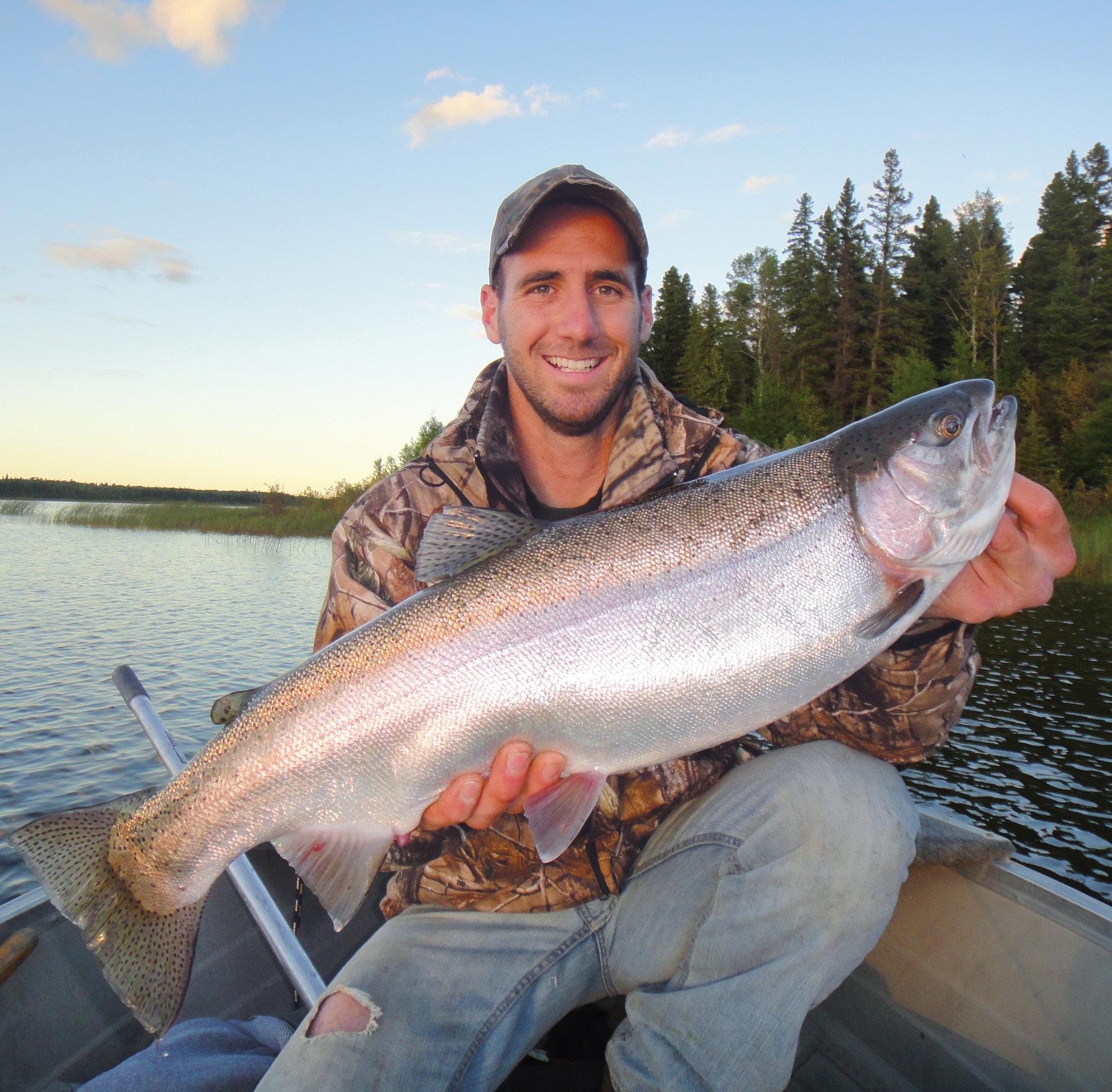
The biggest difference, I suppose, is that I tend to keep my Ned rig close to bottom, while I use a marabou jig to cover the water column. I also don’t impart any extra motion on my jig as I retrieve it. I simply cast it out, count it down, then slowly swim it back to the boat. The less you do, the more trout you catch. Not so with a Ned rig.

After pitching it out, I almost always let my Ned rig fall to the bottom. Then I slowly lift my rod tip, feeling for a trout that might have hit the rig on the drop, or sucked it up from the mud. If I don’t feel
any weight, I turn the reel handle a couple of times as I slowly lift the rod tip. Then I pause and let the jig pendulum towards me as I shake it ever so subtly. If I don’t get a bite, I repeat the process.
When the trout are being stubborn, on the other hand, I like to cast out my Ned rig, let it fall to the bottom, then slowly drag it a foot or two before deadsticking it in the mud for five to eight seconds. If you don’t get a bite doing this, you’ll typically tighten up on a trout when you drag the rig a second, third or fourth time. It’s also uncanny how many trout will eat the bait on the initial drop, so be prepared.
If I’m fishing a Ned rig on a sloping breakline, meanwhile, I prefer to position the boat so I can cast towards shore, up and over the edge of the break and onto the shallow rock, weed or reed flat. Then I swim, glide and shake the jig back over the break and down the drop.
PRESENTATION My go-to blade bait is the ¼-ounce Acme V-Rod with the Goby One or Big Muddy colour scheme (pictured, left). I simply search for a goodlooking, soft-bottomed area, then cast out the compact lure as far as I can using a 6' 10" to 7½-foot, medium- or mediumlight spinning rod spooled with six-pound monofilament, fluorocarbon or microdyneema super-line.
the surface, slurping up hordes of emerging mayflies, caddisflies and midges. The trout become so fixed on the abundant insects that they seemingly turn a blind eye to everything else. Since I relish this bite so much, I almost always bring along a fly rod rigged with floating line, ready to cast an emerger or dry fly. You don’t need to be a fly angler, however, to catch these feeding trout, especially when the water’s surface is littered with the thin, skin-like cases of insects that have hatched, usually the previous afternoon and evening.
Giant mayflies, or hexagenia
limbata, are the darlings I love to see, as they are sweet, plump and juicy trout candy. Where I live, the prime hatches occur in late June and early July, with clouds of giant mayflies—many anglers call them shadflies or fish flies—swarming lakeside light standards on evennumbered years. That’s when as many as 120 nymphs per square metre will emerge from the soft lake bottom.
In those cases, I look for mudand clay-bottomed areas of the lake in front of weedy bays, coves and shoals, where I’ll prospect during the morning and midday hours with a small #3 or #4 brown- or copper-coloured Mepps or Blue Fox in-line spinner. I like to cast it in and around shoreline cover, especially where I see the intermittent surface activity of trout sipping in flies. For the bulk of the heavy midday lifting, however, I rely on a blade bait.
The key here is to let the blade bait fall all the way to the mud bottom, regardless of the depth. Once the lure is on bottom, engage the bail and retrieve it, maintaining the speed at which you first felt it begin to vibrate. Don’t hop, pop or jerk the lure. Instead, keep it wobbling side-to-side as though it were the first emerging giant mayfly of the day, swimming slowly but frantically to the surface. Other than that, just don’t forget to hold on for dear life. OC
up their noses at the idea of using “garden hackle.” But if you’re flexible and enjoy catching trout, especially as you leisurely paddle a canoe or kayak around a serene lake, try trolling a nightcrawler skewered to #4 or #6 Tru-Turn hook.

For this slow-death set-up, leave a longish tag when you tie on the hook. That way, when you thread on a nightcrawler all the way up to cover the hook eye, the tag end will
lock it in place. You also want to clip the worm so only an inch remains trailing behind the hook as you troll the rig behind a light 3⁄4- to one-ounce finesse bottom bouncer, three-way rig or Slinky weight.
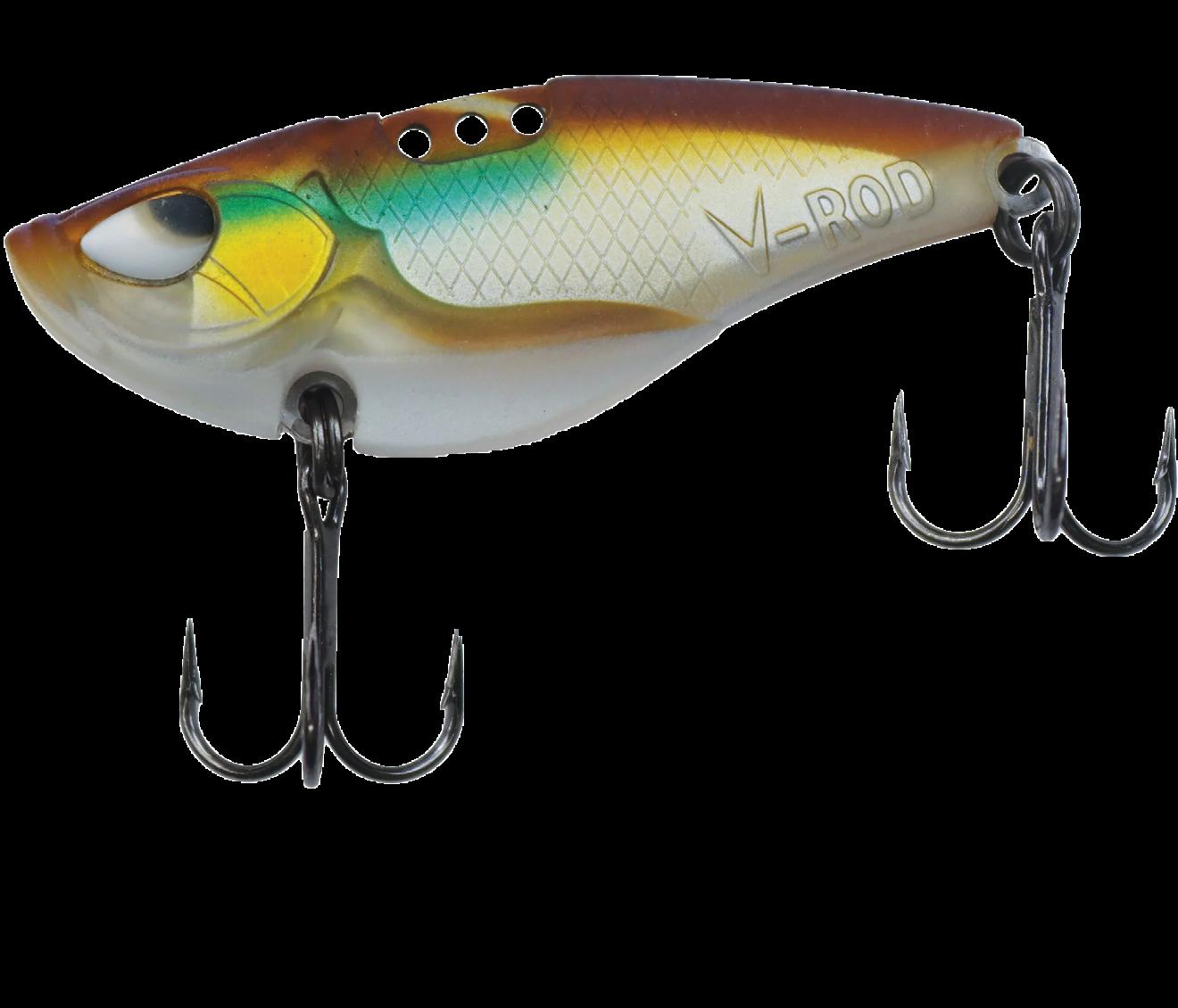
Now as you slowly paddle along the lakeshore, the worm will rotate in a tight corkscrewing pattern. It will also look, smell and taste like an emerging mayfly struggling to get to the surface to fly away. Only in this case, there’s little chance it’s going make it.

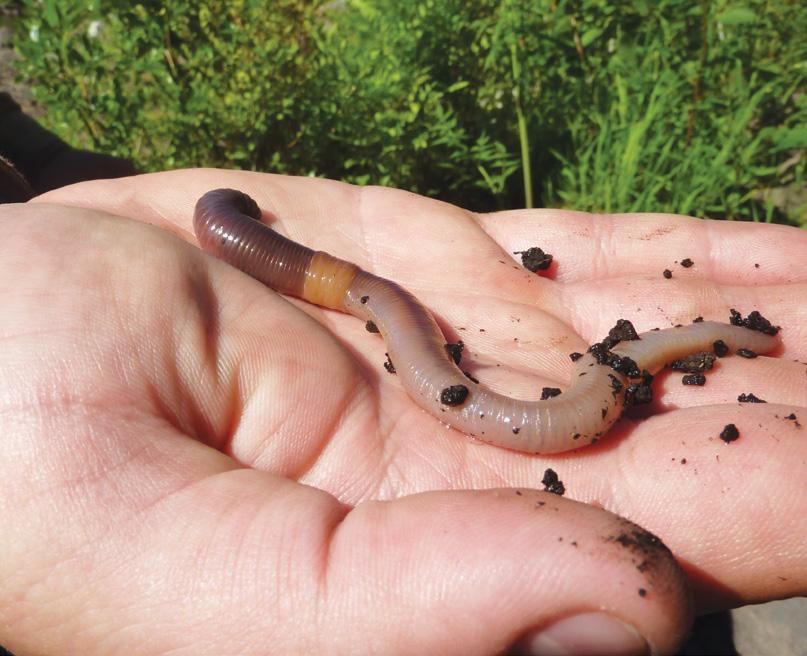

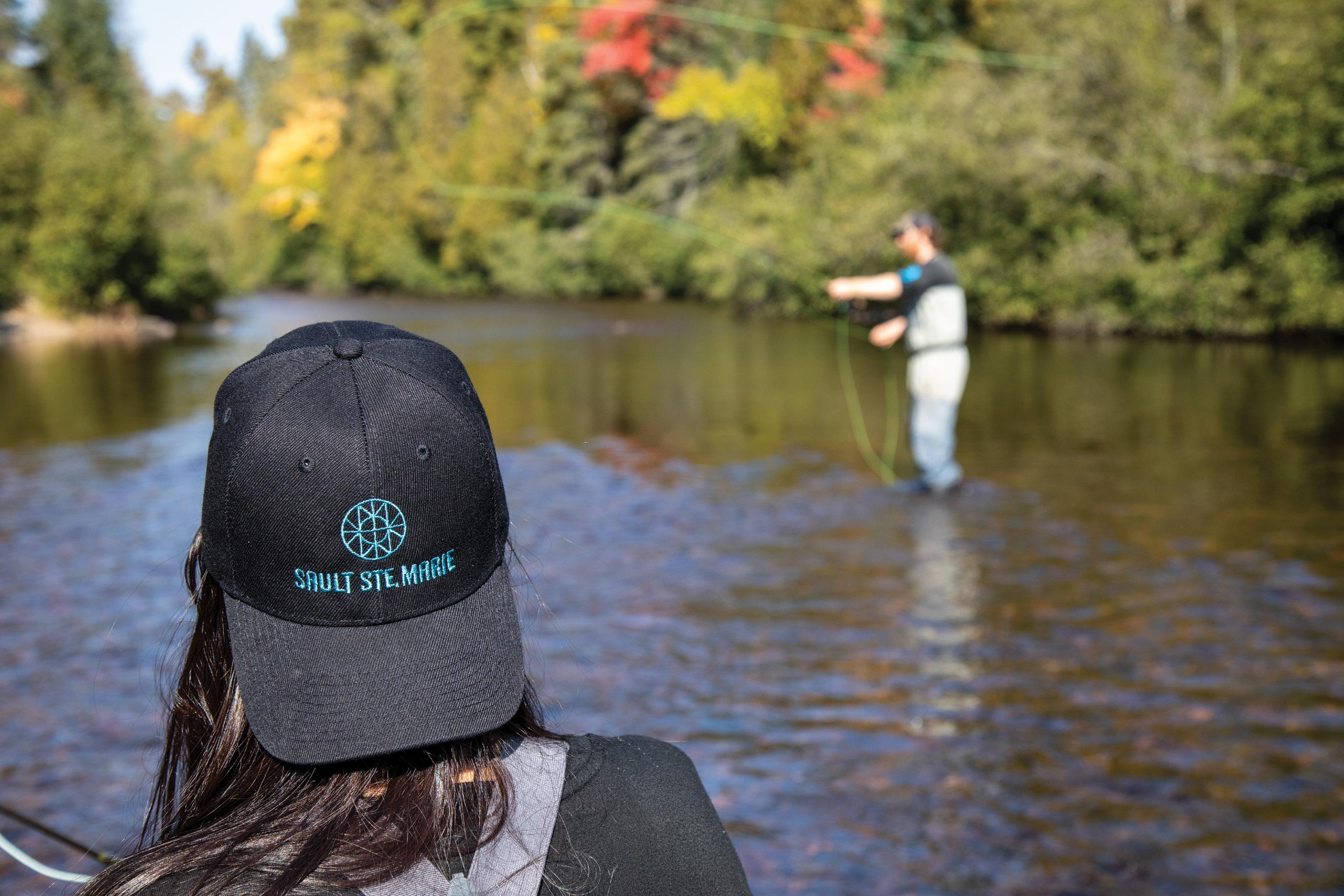





To catch trophy lake trout, northern pike and Arctic grayling in just one trip, head for the N.W.T.’s remote and wild Kasba Lake
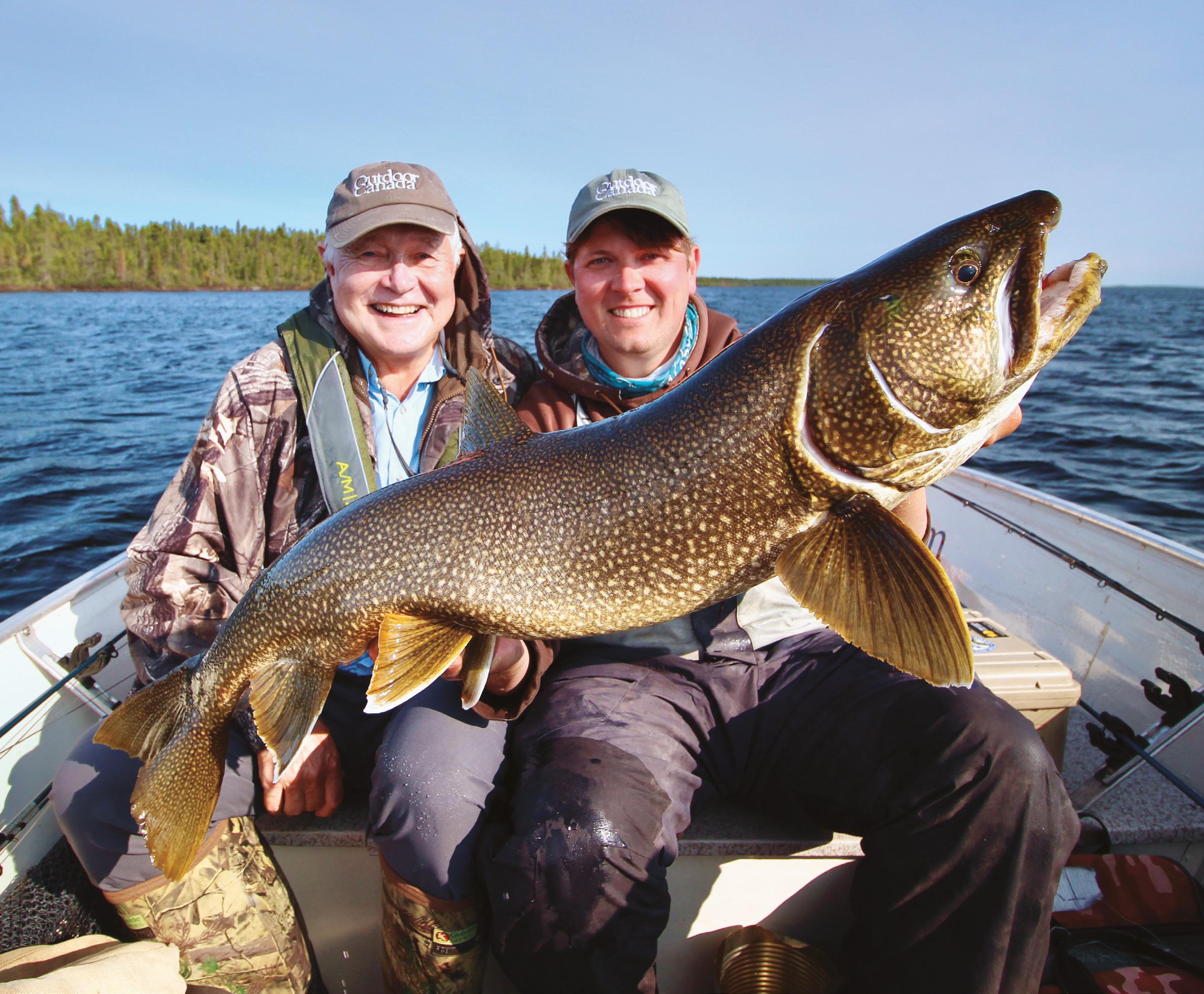 BY SCOTT GARDNER
BY SCOTT GARDNER
PUMP AND CRANK , pump and crank. On it went as my friend Lynn Henning steadily reeled another lake trout up from the cold, rocky depths of the N.W.T.’s Kasba Lake. Periodically, his rhythm was interrupted by the harsh, yet magical zinging of his drag as the fish powered away, taking back yards of hard-won line. For anglers who value the destination more than the journey, this probably sounds frustrating, but it was exactly what Lynn and I had travelled so far to experience.
After the fish’s third run, it was clear Lynn was connected to his largest laker of the trip so far, and he continued the battle with a combination of determination and something close to glee. Eventually, we saw a flash from his big silver spoon, followed by a shadowy outline. Then it was in the net—just over 20 pounds of huge-headed, deep-bodied lake trout, a truly formidable-looking predator. Moments later, the fish was back in the water and swimming away. Along with our guide, Tyler Jones, we toasted the completion of our goal. Capturing that trout meant both Lynn and I had, after just four days on the water, completed the triple crown of Far North fishing. As life goals go, striving to catch a 20-pound lake trout, a 40-inch northern pike and a two-pound Arctic grayling on a fishing trip is pretty arbitrary, bordering on frivolous. Yet we found it oddly meaningful—complete with some wild and occasionally improbable adventures along the way.
Situated in the southeast corner of the N.W.T, Kasba is vast and remote, with the eastern portion edging over the border with Nunavut. At 70 kilometres in length, and 40 kilometres across, it so dominates the surrounding landscape of scrubby boreal forest, wetlands and tundra, that it generates its own microclimate. This renders forecasts, other than what you see out the window, useless. That’s not an exaggeration—pilots bringing in guests have to call the lodge office to learn about the landing conditions.
There nothing manmade on the lake’s 250-kilometre-long shoreline except the buildings of Kasba Lake Lodge. The first and only camp on the lake, it was established in the mid-1970s. Soon after, the owners introduced a 100 per cent catch-and-release policy for large fish, making it the first lodge in Canada to do so.
Kasba’s expanse includes both plunging depths and shallow bays— often next to each other—along with numerous inflows, outflows and channels, all criss-crossed by sunken eskers and dotted with dozens of islands. You could fish the lake for a lifetime and never cast a line in the same place twice. We had less than a week.
On our first full day in camp, Lynn and I set out to sample the entire Kasba fishing menu. We were in good hands with Tyler, who’d been fishing and guiding on Kasba and the surrounding waters since 2011. From Omemee, Ontario, Tyler was affable, often hilarious, and a triple threat: a trained fisheries and wildlife biologist, head guide and, in the off-season, Kasba’s sales manager.
We started in a classic pike bay near the lodge, where Lynn stuck a 36-inch fish. Switching gears (or rods, actually) we trolled our way out of Kasba’s large west-side bay, toward the main-lake basin, nabbing trout along the way. Greeted by stable conditions, we headed for a mid-lake hot spot called the Dome. The trout fishing there was a little frosty, but the water was so unusually calm, Tyler suggested we run all the way

across the lake to a pike spot known as Gordo’s Bay. It was July 11, still early in the Kasba calendar, and we’d be the first boat of the season to fish there.

A broad, shallow bay with a creek tumbling in, scattered sunken logs and the green highlights of emerging weeds, Gordo’s certainly looked like a prime pike spot. After a couple of casts with my 8-weight fly rod, I knew the bay had the goods when a 40-inch pike snapped up my Supercharger fly, a swishy, suspending, all-tinsel eyesore beloved by northerns. As we took a quick photo, it was exactly 3:45 p.m.
Peering more keenly into the water, we then realized that many of what we thought were logs were actually very large pike, slowly cruising all around us. A few casts later, I hooked another northern. While I landed the fish, Lynn clipped a larger, lighter spoon to his leader. On his first cast into the swirling water below the inflow, a trophy pike smacked his clown-coloured Williams Whitefish. Then, unbelievably, we were landing big pike on every third or fourth cast.
Once the action slowed, Tyler backed us into slightly deeper water, where Lynn made a long cast, let his spoon flutter down, and hooked up yet again. Lynn is a long-time Detroit sportswriter, now retired and living in the sunny south. Still a wordsmith, he said this pike felt like a “serious fish” compared to the 40-inchers. He was right—the 45-inch gator ended up being the biggest pike caught at the lodge that week.
As Tyler was carefully releasing Lynn’s trophy, I spied another big fish off the stern. It was just a boat-length away, apparently unconcerned by the commotion. A little unhinged by this sight, I artlessly plonked my fly on its snout, but still ended up tight to my biggest fish of the day, measuring 42 inches.
At 4:45 we headed back to the lodge. In 60 frenzied minutes on our first day, we’d landed five trophy pike, plus eight more fish longer than 34 inches—the kind of fishing I’d be thrilled with during an entire week in camp.
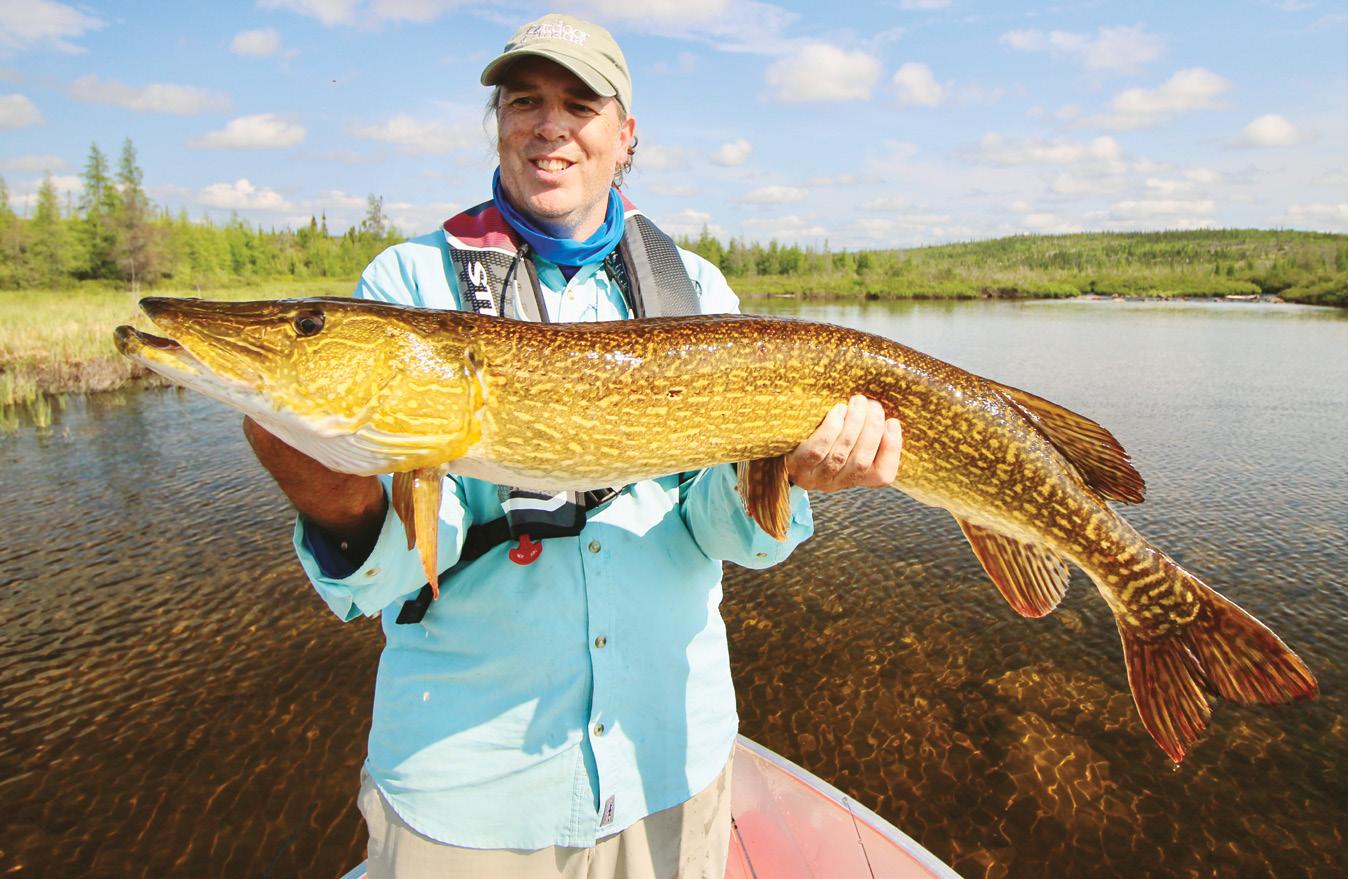
Flowing out of Kasba’s north end over a daunting set of rapids, the Kazan River is the lodge’s most popular fly-out destination. In 1990, it was designated a Canadian Heritage River in recognition of its unique natural, cultural and recreational values, including the sportfishing. It’s home to large pike and trout, but the abundant, football-sized Arctic grayling are the real draw.
Cigar-shaped with a sail-like dorsal fin, grayling range in colour from a shimmering silver to iridescent pink or mauve. And they’re not just pretty. To avoid predators, grayling spend most of their lives in the current, making them very strong for their size. On some days, they gorge indiscriminately, but other times, catching them on a rushing, boulder-strewn river requires some finesse.
That’s how our second day began, as we anchored below the rapids known as the First Set. With light spin tackle, Lynn tapped tiny panfish jigs along the bottom of the plunge pool, while I fruitlessly tried to tempt the fish with dry flies before switching to a subsurface pattern. The action was sporadic, but within an hour, we’d both landed a few fish well over two pounds, giving us the second point of our triple crowns.
We were also fascinated by the huge lake trout that would ghost up in twos and threes from deeper in the pool, ominously following our hooked grayling. They were clearly attracted to the distressed fish, and the chance of an easy, two-pound meal.
As the day progressed, we continued landing hefty grayling here and there along the river, on both jigs and flies. That included a magnificent specimen Lynn caught from shore, weighing in at 3½ pounds. Then in the early afternoon, we returned to the First Set. Now showing a real touch with the tiny jigs, Lynn cheerfully picked off even more grayling.
Meanwhile, I swung a large, heavily weighted fly through the deep water below the rapids, hoping for one of the trout we’d spotted earlier. Kazan River trout rarely bite artificials, presumably since their bellies are so full of actual grayling, but amazingly, I got one on. Deeply flexing the same 9-weight rod I use for tarpon, I slowly cranked it into view. In the waist-deep water behind the boat, we saw it was easily three feet long, with my bright white fly clearly visible in its mouth.
Then another trout emerged, half again as big as my hooked one and following it almost nose to tail. Tyler and I gawked as seven feet of lake trout sliced back and forth across the current. Moments later, the bigger trout shot forward and rammed my fish in the jaw, dislodging the fly. Stunned, I stood there with a slack fly line, and an even slacker expression. I should have been disappointed, but I just marvelled at the display of aggressive and competitive behaviour.
We finished the day downstream
at the so-called Fourth Set of rapids, where we lucked into one of those times when grayling feed heavily. With his spin tackle, Lynn had been catching twice as many as me all day, but these fish were near the surface, devouring bugs. It was perfect for my 6-weight fly outfit, and they greedily pounced on both wet and dry flies. By day’s end, we’d caught and released 60 fish. A twopound Arctic grayling is considered a trophy, yet on this remarkable water, we only landed a handful of fish under two pounds.
After such sterling pike and grayling fishing, on our third day we focussed on the final point of our triple crowns. Lakers weighing more than 20 pounds come out of Kasba almost every day of the season, but the lake is not known for colossal fish, such as those caught on Great Bear, for example. It does, however, boast a dizzying abundance of trout in the five- to 10-pound class. The 358 days of the year I’m not in the Territories, I’ll dance a jig over a five-pound trout. But Lynn and I were after bruisers, so we trolled heavy spoons the size of a man’s hand. Doing this you will still catch some smaller fish, but big lakers enjoy a big meal, so it ups your odds.
Just after lunchtime, I
got a wrenching hit on my orangeand-copper Huskie Devle. My spinning rod nearly doubled over as the fish headed deep and began peeling line off my saltwater-class reel. We knew right away it was big. For 10 minutes I could not move that fish. By the 15-minute mark, it finally started coming in, and Tyler— who’s guided anglers to hundreds of trophy-class trout—cautiously speculated about the size of such a brawler. Could it be 30, even 40 pounds? With immense relief, I led the fish into the net.
At 40 inches in length, and weigh-

ing 22 pounds, it was certainly a trophy lake trout, but not record-book big. It was just a donkey of a fish, one of those specimens you encounter from time to time, possessed of way more power or fighting spirit than others in its class. As with the Kazan trout I lost the day before, I just felt lucky for the experience.
It was almost exactly 24 hours later when Lynn landed his big trout of the trip, and I boated another 20-pounder (of normal strength, this time). Throw in a shorelunch of grilled laker tacos, and we’d more than completed our Kasba goals. With one day left, we decided to roll the dice on a unique final adventure.
Our final fishing spot was a section of the Eagle River, reached via a quick 30-kilometre flight south of the lodge. There, the river widens and slows, splitting around islands into a twisting maze of channels, points and bays before pouring down rapids and emptying into Kasba Lake. First fished in just 2010, this water quickly produced numerous huge fish, earning it the nickname Pikeasaurus Lake.
After just two seasons, however, the area was closed to guests because there was no safe place to consistently dock the floatplane. That all changed last year after the lodge staff installed a mooring platform—Lynn and I would be the first

anglers to fish Pikeasaurus in a decade. It was a tantalizing prospect. Still, no one really knew what to expect.
It was, in a word, outstanding. We caught pike almost everywhere, from flats, bays and weedbeds to humps, narrows and rapids. At one point, we putted past a huge bull moose chomping on vegetation, probably seeing his first humans.


Around midday, Lynn had a 40-inch pike on his beloved Johnson Silver Minnow, while my high point was hooking a 42½ northern in the slack water beside a rapid, then battling it in around numerous obstacles. It had a head like a dire wolf, and a massive, bulging body. It wasn’t the longest pike I’ve ever caught, but it was almost certainly the heaviest. I imagined it spending the last 10 years in that very spot, growing fat on baitfish addled by the current.
And the high point of the


trip? It was that donkey lake trout. Or maybe it was those sparking grayling. Or come to think of it, the fleshy pike. No, it was definitely our triplecrown pursuit. Actually, it may have been the great company in the boat, or swapping stories back at the lodge over a specially brewed Kazan River Ale. Or maybe the high point
KASBA LAKE LODGE is open from late June through August, offering four-, six- and eight-day visits, welcoming anglers on personal, group and corporate trips. Rates include a charter flight to the lodge from Winnipeg, as well as all meals, accommodations and guiding. Learn more at www.kasba.com.

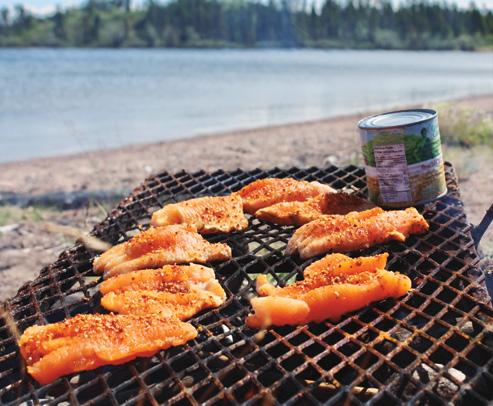

was just being on the water, in a place so epic and unspoiled. What was the high point, you ask? How much time do you have? OC

WITH EXTENDED RANGE FOR OPEN WATER




HIGH HOPES FOR an avid outdoor family’s future often start well before newborns soil their first camo onesies. Then soon enough, changing diapers turns to changing lures, and before parents know it, they’re being outfished and out-hunted by the same children who learned everything from them. Somewhere right now, in fact, there are plans coming together for daughters and sons who can’t wait to ride shotgun on their first spring turkey opener.
I first embraced fatherhood with the anticipation of doing all the cool outdoor things with my own kids that I learned from my dad, regifting his teaching techniques and lesson plans for the trout stream and grouse trail. When it finally came time to introduce my two sons to the world of turkey hunting, however, it was something I would have to figure out on my own—a sustainable wild turkey population just didn’t exist yet in my neck of the woods when my dad was teaching me about hunting.
If you’re planning to take youngsters on their first gobbler hunt this spring, I hope what I’ve learned can help make your own outing a success, and save you some frustration afield in the process. And as an added bonus, many of these tips can also apply to other hunts.
MY SONS WERE hammering out yelps on a box call from the time they were buckled into front-facing car seats. They had the Pye family minivan rocking like a lonely hen every time we slowed down to watch a field full of gobblers during the morning commute to daycare. But the boys also enjoyed a conservation connection that brought them even closer to the outdoors than a mere drive through the countryside.
They were raised on nature hikes, for starters. Their fascination for things such as mud and bugs, and trees and tadpoles shaped their outdoor confidence and gave them an early environmental education. It also gave them an appreciation for wildlife and outdoor places, and sparked their genuine early interest in hunting.
Building forts and make-believe hunting blinds instilled habitat awareness. Flinging arrows and plinking targets created respect for the shooting sports. And tagging along with a hunting role model led to their understanding of personal ethics, firearms safety, hunting regulations and the privilege of taking home wild food for the dinner table.
BY PROMOTING ACCESS to these kinds of outdoor experiences, mentors can cover a lot hunting ground with children before a conversation about »
formal hunter education even begins (see “Higher learning”). And the decision to take up hunting must always be the child’s—knowing a hunting invitation will always be there— not the result of parental pressure.
So, by the time my eldest son, Charlie, was eight, he was ready to wake up early and join me for all the great opening-day action he’d heard about his entire life, including the first day of the spring turkey season here in Ontario. He couldn’t wait.

CHALK THE CALLS. Pack the decoys. Purchase the tag. I had everything prepared for Charlie’s first turkey hunt. Or so I thought. The warm and sunny late-April season opener I’d imagined turned out to be a miserable day, with a mix of rain, snow and freezing temperatures. Charlie’s lightweight rubber boots—suitable for the schoolyard but not the turkey woods—just weren’t going to cut it.
After a long walk across a sopping wet pasture, his boots were like ice packs around his little feet. When we reached the blind, he didn’t say a word but the agony of cold feet was becoming real. He
was already too cold for an immediate retreat; turning back to the warm truck would feel twice as far, even though I offered to carry him.
My dad-fail called for a dadsolution, so I hunted that morning without a coat and in bare feet. Charlie’s boots were replaced with my warm socks, as well as my knee-high insulated hunting boots that went to the top of his little legs. And my thick hunting coat covered him like a blanket. While he played Angry Birds on my phone, I played frustrated bird on my box call.
TIME IT PROPERLY
DURING ONTARIO’S FIVE-weeklong spring turkey season, there’s always a sunnier day ahead (although the bug-free window is short). In retrospect, Charlie and I should have gone back to bed on that blustery opening morning. Lesson learned. Save the hunts that require hardcore stamina and technical apparel for days without a young person in tow.
Of all hunts (particularly for deer and ducks), the pursuit of spring turkeys provides the greatest opportunities for midday action. That means an apprentice doesn’t necessarily need to set the alarm for 4 a.m. In fact, kids can get off
To help ensure success in the turkey woods and fields this spring, here are some all-new gear options for the well-equipped hunter. THE EDITORS
835 ULTRA-MAG
If you’re planning to advance to a 3½-inch platform, this Mossberg pump shotgun (US$693) boasts a reliable, powerful punch and tight patterns. www.mossberg.com

Made for running and gunning, this lightweight, easy-to-pack tom deke (US$129.99) promises to lure in wary long beards without intimidating them.
www.primos.com

Equipped with three light reeds, this latex mouth call (US$9.99) is designed to belt out crisp hen yelps to catch the attention of distant gobblers. www.quakerboy.com
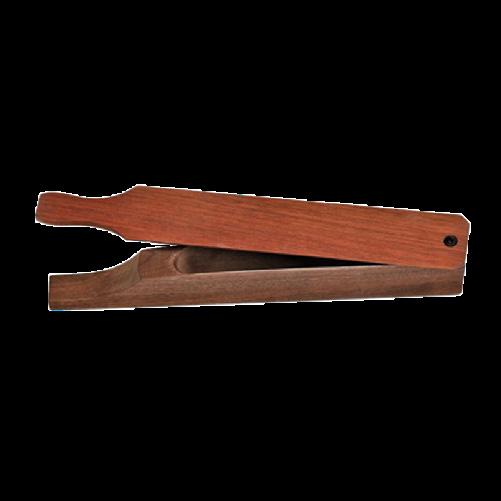

RUN-N-GUN 200
This 1.5-pound vest (US$99.99) is made for mobile turkey hunters, complete with a 198-cubicinch backpack, decoy sling, padded seat and nine compartments. www.knightandhale.com

the school bus and still have plenty of time to join their parents for an action-packed afternoon in the turkey fields and woods.
LITTLE LEGS CAN’T keep up with a run-and-gun approach across acres and acres of land, so
(US$49.99) for long-distance yelps and cutts, as well as close-quarter hen talk. www.hsstrut.com

POT LUCK GLASS
Featuring a glass calling surface and soundboard, this rugged carbon pot call (US$12.99) promises crisp, extraloud hen calls, even when it’s raining.
www.flextonegamecalls.com
set up within a manageable walk from your vehicle. And for those days when the weather doesn’t cooperate, have a hunting blind option at the ready.
ECHOING THE SAME timeless advice for getting kids into fishing, keep the outing short. Also be sure to manage expectations. It’s important to stress you may not even see a turkey, but that an encounter of any kind with nature is still a measure of hunting success. The distant drumming of a grouse, the discovery of a turkey track in the dirt or the sight of a sandhill crane, for example, provides opportunities for great questions. I love taking kids hunting for that particular reason—it’s a time to slow down and contemplate subtle outdoor observations through their youthful curiosity.
ATTENTION-SPAN PLANNING
is certainly the best advice for both fishing and hunting mentors. With turkey hunting, however, you have a distinct extra advantage—a duffle bag full of decoys and vest pockets full of amusement. Take a kid
Compatible with a variety of shotguns, this tempered-steel choke tube (US$49.99) accepts steel, tungsten, bismuth and lead loads for tight, long-range patterns. www.avian-x.com

With its mesh back, seat cushion and hands-free game bag, this multipocketed vest (US$129.99) is made to keep you cool and comfy on day-long hunts.
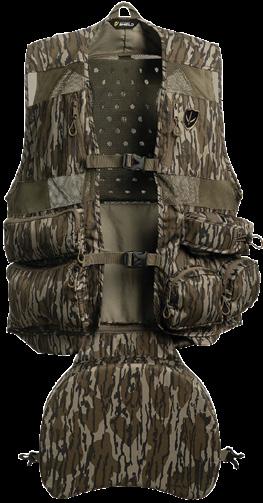
www.blockeroutdoors.com

hunting with every turkey call you own, and present them one at a time. There could be an hour’s worth of undivided attention in just demonstrating how each call works, and how different turkeys respond to the various yelps, clucks, cutts and purrs. »
This 3-D camo combo (US$149.95 to US$169.95) features breathable lining, a waterproof coating and Velcro bugstoppers to keep the spring elements at bay. www.leafysuits.com

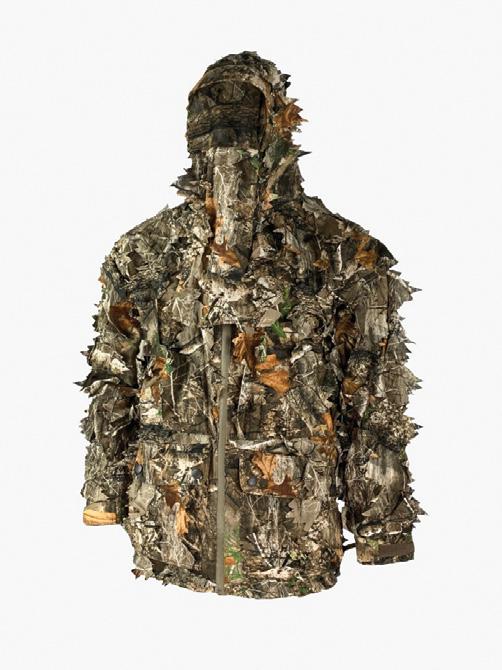
HERE IN MY home province of Ontario, it’s never been easier or more affordable for kids as young as 12 to complete the Ontario Hunter Education Program (www.ohep.net) to earn their hunting licence. My youngest son, Jack, was one of the first to participate in the new $60 online course, which includes the exam. Such web-based hunter ed options are also available in most other provinces (see link below).
Until grads such as Jack decide to also complete the Canadian Firearms Safety Program, they can still go hunting with archery gear. Charlie is already able to hunt with a firearm because he completed an instructorled, one-stop classroom training session that included both the firearms and hunter education programs. In Ontario, apprentice hunters can now also purchase their own turkey tags, which means they no longer must hunt off of a mentor’s tag.
As a proud hunting dad, I applaud everything we can do as a hunting community to encourage more mentorship and hunter recruitment. To that end, Ontario should consider allowing apprentice hunters to use their unpunched spring tags during the fall turkey hunt, as is the case with black bear tags for all hunters. That way, we can further encourage more family hunting time, and add more bang for a young hunter’s buck.

 ROBERT PYE (YOUNG HUNTERS); MANUFACTURERS (TURKEY GEAR)
ROBERT PYE (YOUNG HUNTERS); MANUFACTURERS (TURKEY GEAR)
Kids also love to have a special job of their own, so put them in charge of setting up and taking down the decoys. And while a pop-up hunting blind takes care of camouflage needs, I find that kids still enjoy dressing for hunting success, especially when it comes to accessorizing with camo face paint. These are great ways to help kids feel they’re truly part of the hunt.

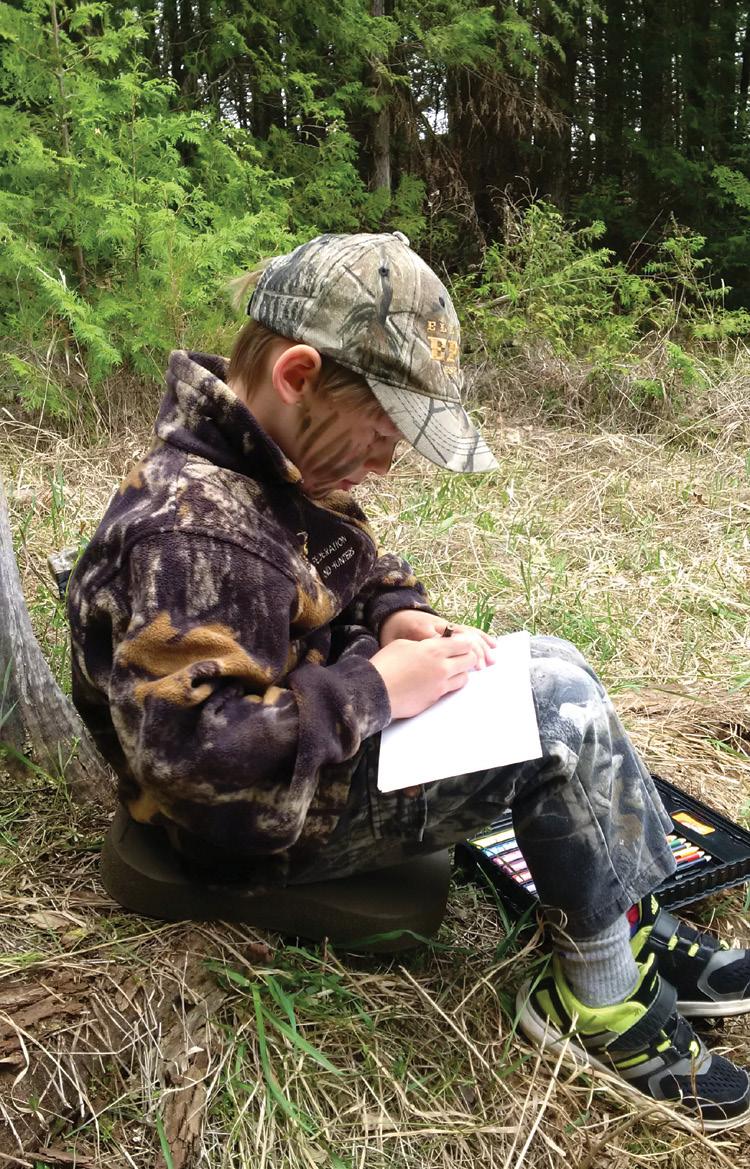

NOTHING ENDS A hunt earlier than a fidgeting child with a hunger on. That’s why all our family outdoor expeditions include a well-stocked snack bag. Another essential is a backup activity—preferably non-digital—for when the action slows down. One spring, for example, I surprised my youngest son, Jack, with a colouring set that kept him engaged during the hunting lulls (pictured, right).
TIME FLIES FASTER than a wary grouse. One day I was carrying Charlie through the turkey woods on my shoulders, then—Boom!—my outdoors protege was suddenly carrying a tagged turkey over his. And in the process, he was also carrying on with the hunting tradition.
As hunters, we must do our part in the succession planning for our collective conser-




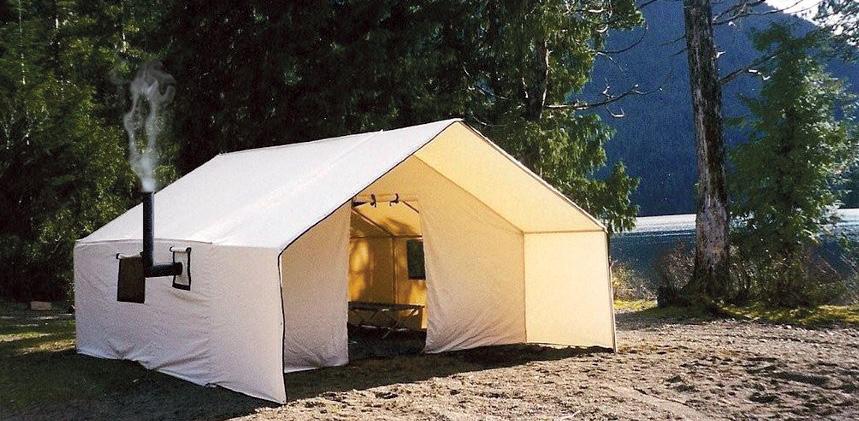
vation future. Aside from our own children, for example, my wife and I have introduced hundreds of young people to fishing and hunting through various outdoor education programs. But even if you can instill an enduring passion for turkey hunting in just one child this spring, you’ve made a resounding difference.
Just don’t forget to bring the proper boots. OC
WRITER ROBERT PYE IS LOOKING FORWARD TO ENJOYING THIS YEAR’S SPRING TURKEY OPENER WITH HIS TWO SONS.

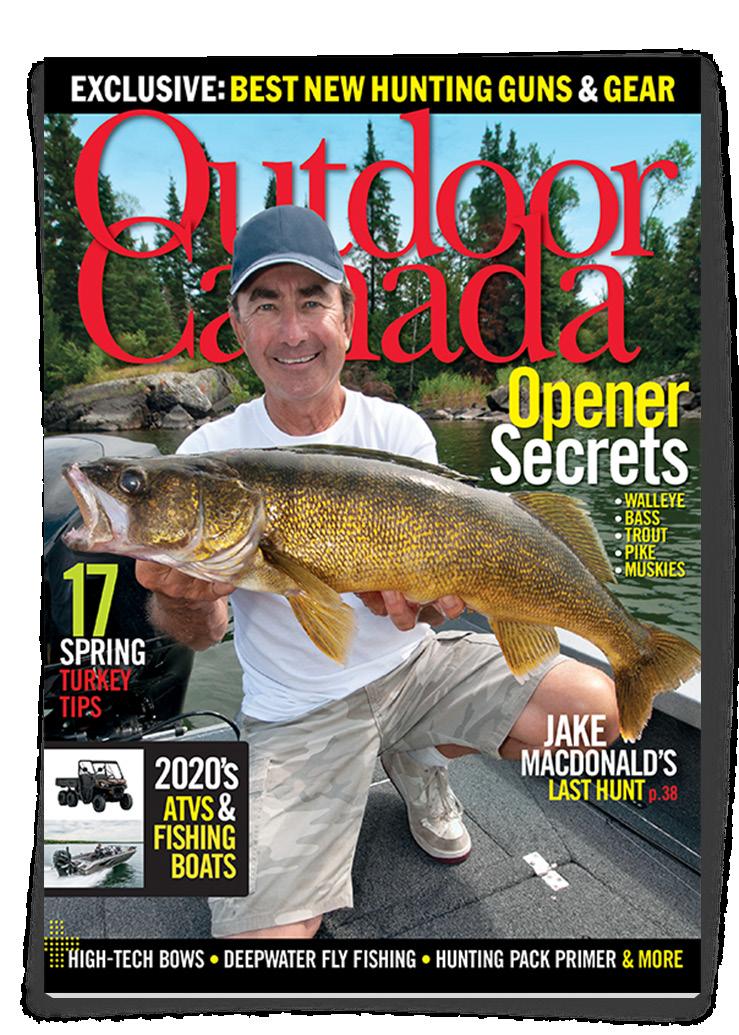

True morels in the Morchella genus are arguably the most soughtafter wild mushrooms out there. They appear between late April and mid-June, depending on the weather, as well as the latitude and altitude of the area in which you are foraging.

Most Morchella species have a symbiotic relationship known as mycorrhiza with specific tree types, so knowing which trees to key in on is half the ball game when morel hunting. You’ll find certain species (usually yellow morels) with deciduous trees such as elm, ash, poplar and aspen, and others (such as black morels) with maples, as well as apple or stone fruit trees in old abandoned orchards, and even white pines following a forest fire.
All mycorrhizal morel species
BY STEPHAN LUKACICTOGETHER WITH FISHING and hunting, there’s no better way to appreciate, understand and connect with Canada’s wild places than by getting your hands dirty foraging for edible wild plants and fungi. And as bonus, you rarely return home empty-handed, even if the fish and game don’t cooperate.
Just keep in mind that foraging in Canada is restricted to private property and general use areas on Crown land. It is illegal to forage in provincial parks, as well as in most conservation areas, public parks and nature reserves, so always check the local regulations.
It’s also important to get a good field guide to properly identify plants and fungi in order to avoid potentially toxic look-alikes. As well, always seek permission to forage on private land, and avoid harvesting wild edibles near busy roads or contaminated areas that may introduce pollutants.
Whether you’re out hunting spring gobblers, fishing the trout opener or setting up your bear stand, here are five of Canada’s most popular wild edibles well worth keeping an eye out for.
tend to fruit more prolifically when their host tree is stressed or dying, or it has recently died. Focus your search on forest clearings, the edges of woodlots and southfacing slopes, and start checking likely spots once daytime temperatures remain at 10° to 15°C for about a week. Rain helps.
The most identifiable characteristic of a true morel is the pitted, honeycomb-like exterior of the cap. And when you cut the mushroom in half, you can see that both the oblong cap and the stem are hollow, and the entire length of the cap is attached to the stem. There are many species of potentially harmful “false morels” that inhabit the same forests, but their caps are detached, and not honeycombed. They also have wispy, cotton-like fibres inside.
I’ve eaten morels prepared in many ways, but it’s hard to beat a
little butter in a pan with salt and pepper. The most important thing is to thoroughly cook raw morels to destroy the mild toxins they contain—four to five minutes per side on medium heat is usually sufficient.
This popular and abundant native wild vegetable appears in the

Make the most of your springtime outdoor pursuits by foraging for wild edibles along the way
spring in damp, low-lying areas of the forest near streams and drainages. It’s easily identified by its smooth, hairless green stem that features a prominent U-shaped groove down the centre, unlike similar-looking bracken ferns that occupy the same habitat. The edible part is the yet-to-unfurl frond, called a crozier or scroll, which is enveloped in a brown, papery husk.
Ostrich ferns grow in clumps called crowns, and they should be harvested within days of sprouting once the spring sunshine warms the soil. To prepare the croziers for the table, remove the husks, blanch them for a few minutes to deactivate the mild toxins, then cook thoroughly. Prepare them in the same way you’d normally serve asparagus, as both the taste and texture are similar.
aren’t required or recommended. It takes seven years for these plants to reach full maturity, and they’re threatened in parts of their range due to overharvesting (again, check the local regulations, as collecting ramps is prohibited in some regions). To reduce your impact, only take a few plants from each cluster, then move to the next patch.
Both the leaves and bulbs are edible, whether raw or cooked. They can easily substitute for both onions and garlic, as the flavour is somewhere in-between, but they’re also delectable when sautéed all on their own.
FOR MORE WILD EDIBLES, PLEASE GO TO WWW.OUTDOORCANADA.CA/WILDEDIBLES.
bath to stop the cooking process. This entirely removes the stinging hairs, making the leaves ready to use in soups, casseroles and so on, or to be frozen for later use. Nettles are also commonly eaten as a spinach substitute.
Allium tricoccum and Allium burdickii
Ramps grow in rich, loamy soil that has a sunny exposure. They’re identified by the two or three broad, dark-green elliptical leaves that sprout from the underground bulb. The pointed leaves, which have parallel veins, taper downward, and they’re often tinged red at the base (tinged green in the case of Allium burdickii, which also has thinner leaves). You can often smell wild leeks as you approach a patch. To confirm they are indeed ramps, crush a leaf between your fingers to release the mouth-watering, sulphury scent of onion.

This delicious wild member of the onion family is a springtime delicacy best harvested sparingly by hand—gardening implements

Widespread throughout North America, this naturalized, prickly perennial is among the most nutrient-dense plants on the planet. Nettles are packed full of vitamins, minerals and antioxidants, and they contain more protein than any other known green vegetable. This dark green plant is identifiable by its opposite, pointed, coarsely serrated leaves with tiny stinging hairs. The heart-shaped young leaves are used as an extremely nutritious potherb, while various other parts of the plant have been used in herbal remedies for centuries. Stinging nettles are best harvested for food in the early spring when they’re young. Wear leather gloves and a long-sleeved shirt to avoid getting stung, and use scissors to remove the newest leaves from the top four to five inches of the plant. Once home, blanch the leaves for five minutes in boiling water with a pinch of salt, then drop them in an ice
People who do not forage are often surprised that all species of spruce tree are edible. Specifically, the soft, pale green tips at the ends of the branches can be used in a wide variety of delicious ways. Spruce trees are differentiated from similar conifers by their pointy, four-sided needles, which roll easily between your fingers. The needles also attach to the branches individually (rather than in clusters), the cones are easy to bend, and the branches feel rough in comparison to other evergreens. The trees themselves appear bushy and full, and generally have upturned branches.
Harvest spruce tips sparingly from mature trees in the spring by simply pinching them off. They provide an excellent source of vitamin C, with the flavour varying from citrus to a bitter taste, depending on the species. The most savoury tips come from white, blue, and Norway spruce. They are typically used like a herb for making tea or syrups, or added to desserts, salads and other foods for flavouring. Spruce tips are also delicious on organ meats. OC
















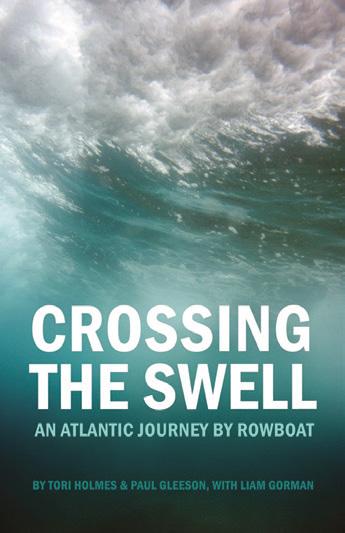






FOR A THRILLING
SUCCESSFUL!) SPRING BEAR HUNT, TRY THINKING INSIDE THE BOX WITH THIS DIY TACTIC
 BY GORD NUTTALL
BY GORD NUTTALL
BLACK BEARS ARE powerful and majestic animals, and any sign of their presence evokes a sense of awe. For hunters, bear sign also means the game is on, especially when daytime photos of these secretive, nocturnal beasts appear on our trail cams. What’s even better is when a quality boar you want to harvest shows up in the photos. Just because you have pictures of a target bear, however, it doesn’t necessarily mean the hunt will be a slam dunk.
Several times, I’ve had a large black bear appear during daylight hours on my bait-station trail camera, leading me to think it was only a matter of time before I could shoot or arrow him from my treestand. My excitement turned to frustration every time, however, as I was never able to harvest the bear. That was until three years ago, when my hunting partner


and I started discussing the problem and brainstorming solutions. We came to two conclusions. First, the larger mature black bears we target are smarter and more vigilant than other bears, clearly able to detect—and not tolerate—our scent at the bait station. Secondly, we realized that the longer we waited to start hunting our target bear, the worse our chances became. Our solution? Build a box blind and hunt choice bears as soon as they appear on our camera. Yes, we could have bought a ready-made ground blind, but we wanted something more solid and safer, and better at concealing our scent. In the end, we built four.
Hunting from one of these doit-yourself blinds has not only increased my success, it has also allowed me to hunt alongside my children as they’ve taken their first
black bears. I like these blinds so much, in fact, I no longer bowhunt black bears from a treestand if I can help it. It’s just way too frustrating to go through all the work and expense of setting up a bait station, then sit in a treestand and not have the target bears come in. If that’s what you’re also dealing with, try a bear box blind. Here’s how I constructed mine, and put them to good use.








WITH THE MAIN goal of concealing scent, I originally wanted to make the blinds out of a one-piece plastic shell, such as an old cistern or calf shed, but that would have been too difficult to get into the bush. So, I decided on plywood blinds with a sturdy frame of 2x4s that I could assemble at the hunting site.
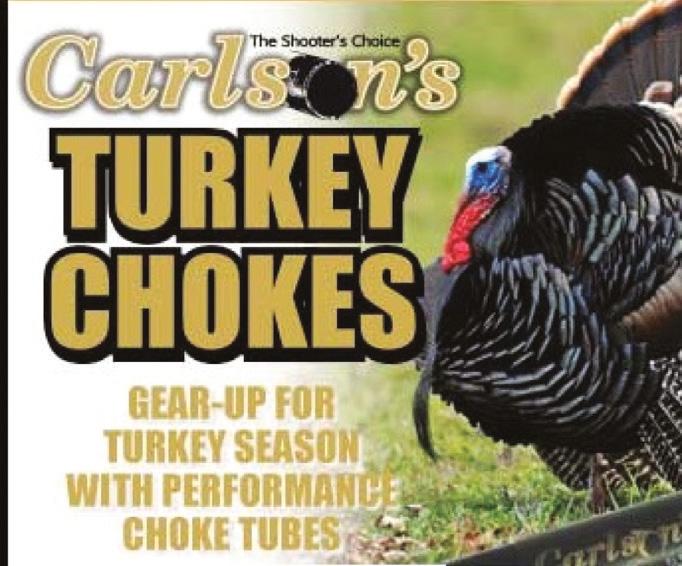
To make the blinds compact and portable, I kept the footprint to a width of five feet and a depth of six, which allows for a bowhunter to come to full draw. That provided space for two hunters to sit, but only enough room for one hunter to shoot at a time. Now that we’ve used that configuration for a couple of seasons, however, I’ve decided a width of six feet would be more comfortable for two people.

I first constructed the blinds in my garage, designing them so the components could be easily taken apart for transport and bolted back together at the bait site. Along with 2x4s for the frame, I used 3 8-inch plywood for the walls
for the roof. I designed the roof with embedded trusses, meanwhile, so it would slope from six feet at the front to five at the back, allowing for drainage and giving me and a hunting partner room to stand up in the front to stretch and break up the monotony of waiting.
As for waterproofing, I used an exterior dark grey stain for the walls and nailed tarpaper and shingles to the roof. Inside, I painted the front two thirds bright white and the back one third dark blue (black
AFTER I COMPLETED building and painting each blind in my garage, my hunting partner and I disassembled it, loaded the pieces into my pickup and hauled everything to one of our hunting locations, completing the journey with an ATV and tub trailer. I built jigs to hold the walls vertically in place in the tub trailer, as well as to square up the walls on the uneven ground at the bait site.



Before reassembling each blind, we cleared the ground of any vegetation, leaves or twigs that might make noise underfoot once we were inside the completed structure.
would also work). I then created shelves by nailing leftover 2x4 ends in between the studs, and for clothing and gear hooks, I pounded framing nails in halfway at both standing and sitting height.
For optimal scent control, meanwhile, I purposely did not make a man-sized door, planning instead to enter and exit through the two-foot by two-foot opening in the front, which sits two feet up from the floor. Finally, my family helped me paint the exterior with graffiti-like camouflage stripes (see previous page).
Next, I bolted the walls tightly together and attached the roof. Then my partner climbed inside and sealed up any visible cracks using a can of expanding foam. Finally, I installed a large hook in a roof truss to hang my bow, wrapping the hook in foam padding to dampen any noise.
AFTER SITTING IN one of the blinds a few times to try it out, I realized the shooting window was a little too large—since I could easily enter the blind through the window, a bear could, too. To make the set-up much safer, then, I added a hinged shutter and created a smaller, one-foot shooting window locked into the wall with a frame. This improvement allows us to easily enter and exit the blind with the shutter open, while protecting us inside when the shutter closed. Now if a bear tries to get in, the smaller opening gives me enough time to fend it off with bear spray or my shotgun, which I always bring along for insurance when I’m bowhunting for bears. For added deterrence, I also bring an air horn, and leave any strong-smelling food at home.
IT COULD BE any time of day when a bear first finds your bait, and he’ll usually hang around in the vicinity and keep returning day after day. If you’re not in your blind for those first few days, neither is your scent, so the bear will feel safe and comfortable. When you finally show up and bring your scent with you, however, the bear will know something is different and avoid your set-up.
With that in mind, it’s crucial to be diligent about frequently checking your trail cams, then getting into hunting position as soon as possible once you’ve identified a shooter bear. That’s exactly what my hunting partner and I do now, with trail cameras monitoring our multiple bait and box blind sites. We check the cameras every day, and to help keep the blinds free of human scent, we never approach them when we’re replenishing the bait.
One thing we didn’t like about our box blinds at first was the reduced field of view. It takes some getting used to if you’re already accustomed to hunting from a treestand with its panoramic view. We came to realize, though, that the benefits


outweigh the disadvantages. Namely, your movements and scent are completely concealed in a box blind— you simply have to sit back and wait in the shadows until a bear comes into your field of view through the shooting window.

On that note, remember that a bear looks larger when it’s 20 metres away and you’re on the ground, not perched up high in a treestand. As a result, field judging from a box blind takes some practice. And since box blinds force you to hunt from a stationary position, you also need to pay constant attention and be ready at all times. Otherwise, a bear can quickly appear and disappear without allowing you a chance to shoot.
The good news is, an approaching bear typically won’t delay his approach to the bait station. If you’ve done everything right with your box blind, he’ll just come strolling right in because he won’t sense any danger—giving you plenty of time to decide if your tag has his name on it. OC
EDMONTON, ALBERTA’S GORD NUTTALL PLANS TO NEVER HUNT BEARS FROM A TREESTAND AGAIN.

1| Remove the cubed venison from the fridge 30 minutes before you start cooking to get it to room temperature. Add the venison to a bowl and generously season with salt and pepper.
2| Heat a large fry pan on high heat, add the olive oil and fry the venison for 3 minutes to brown it. Try not to disturb the meat so it gets a nice crust.
3| Add the onion, carrot, celery, juniper berries, rosemary, garlic and lard to the pan. Give everything a good stir, then cover with a lid and let the mixture steam for 4 minutes. Remove the lid and cook for 5 more minutes, stirring occasionally.
4| Cover the mixture with an inch
of water, bring to a boil, then reduce to a simmer on medium-low. Slow cook for at least 90 minutes with the lid slightly askew, or until the meat easily falls apart. Add splashes of water if it appears too dry. Once the meat is tender, set the mixture aside to cool.
1| In a food processor, pulse the cassava flour and salt to combine.
2| Add the shortening and pulse until the mixture resembles coarse meal, with a few pea-sized bits of shortening remaining.
3| Add in the apple cider vinegar and cold water, then pulse until a dough forms. Shape the dough into a 1-inch-thick disk and wrap it tightly in plastic. Refrigerate the
FILLING
• 700 grams venison, cut into 1-cm cubes
• Salt and freshly ground pepper, to taste
• 2 tbsp olive oil (or lard or butter)
• 1 medium onion, chopped
• 1 carrot, chopped
• 1 celery stalk, chopped
• 1 tbsp crushed juniper berries
• 1 sprig of rosemary, chopped
• 2 garlic cloves, minced
• 1 tbsp lard (or butter)
• Filtered water, as needed
DOUGH
• 11⁄2 cups cassava flour
• 1⁄2 tsp salt
• 2⁄3 cup palm shortening (or butter)
• 1⁄2 tsp apple cider vinegar
• 1⁄2 cup cold filtered water
• 1 egg, beaten (for eggwash topping)
• Poppy seeds (for topping)
SAUCE
• 1⁄4 cup lard (or butter)
• 1 tbsp chopped shallots
• 1 tbsp chopped garlic
• 2 tbsp maple syrup
• 2 tbsp red wine
• 1⁄4 tsp salt
• 11⁄2 cups blackberries
• 1⁄2 tsp apple cider vinegar
dough until it becomes firm (at least 30 minutes).
1| While you wait for the dough and filling to cool, melt the lard in a saucepan over medium heat, then add the shallots and garlic. Cook until the shallots are translucent (about 5 minutes).
2| Add the maple syrup, red wine and salt, then let everything simmer for 10 minutes.
3| Once the mixture has reduced by at least half, add the blackberries and cook for an another 20 minutes, or until the blackberries have completely broken down. Then remove the saucepan from the heat and stir in the apple cider vinegar.
MICHAEL HUNTER AND THE FRANCHI FOOD ACADEMY (COMPLETED DISH); IVANA JURIC (JURIC)4| Let the mixture cool for a few minutes, then pour it into a blender and pulse until there is a smooth consistency. Set aside.
1| Preheat the oven to 400°F. Line a baking sheet with parchment paper and set aside.
2| On a surface covered with cassava flour (or between two pieces of parchment), roll the dough down to the thickness of a loonie. Then using a 5-inch circle cutter, cut out 10 pastry discs. Add roughly 2 tbsp of the filling to one side of each disc.
3| With each disc, fold the fillingfree side over top of the filling and stick it down to create a half-circle. Then use a fork or two fingers to crimp the edges firmly shut. Place the completed pasties in the fridge for approximately 30 minutes to firm up the dough.
4| Once firm, place the pasties on the lined baking sheet, brush with the beaten egg and cover with the poppy seeds. Bake for 30 minutes or until the pastry is golden brown and firm to the touch. Serve warm with the blackberry dipping sauce and enjoy!
CCONGRATULATIONS TO IVANA

Juric, the hands-down winner of our Franchi-sponsored wild-game recipe contest, Get Your Game On! Her creation, Venison Pasties with Blackberry Sauce, caught the attention (and tastebuds) of our two esteemed judges, Outdoor Canada’s wild cuisine expert Cameron Tait and Michael Hunter, author of The Hunter Chef Cookbook.
“This dish looks absolutely stunning,” says Hunter. “The combination of the sweet and savoury flavours of the juniperspiced venison, paired with the blackberry sauce, is delicious. This handheld pastry is fun and approachable, yet it displays mastery of technique with cooking and baking.”
Tait is likewise effusive in his culinary praise. “This is the epitome of comfort food with a twist,” he says. “There is simply nothing more satisfying than
freshly baked savoury pastry paired with a maple-accented berry sauce. It’s a truly Canadian feast!”
Hailing from Toronto, Juric is currently spending a year in London, England, to explore Britain’s culinary industry. Perhaps not surprisingly, she works as a chef catering to private functions when she’s not busy enjoying the outdoors. Her winning recipe presented here also appears on the Franchi Food Academy website (foodacademy.franchi.com).
Finally, congratulations also go to Daniel Salvatore, who placed second with his Pheasant Linguine recipe, and Cameron Bell, whose Bear Shank Terrine placed third. And a huge thank you goes out to Italian firearms maker Franchi for sponsoring this contest and offering the grand prize of two Franchi hunting long guns. OC

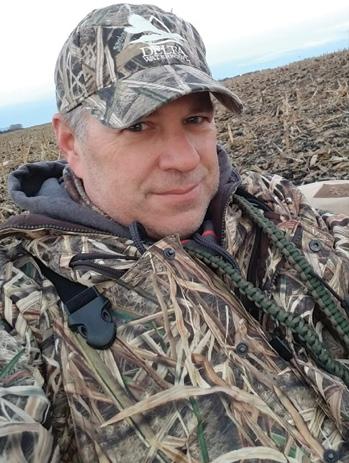
THIS PAST JANUARY’S 45th annual Shooting, Hunting and Outdoor Trade Show (aka SHOT Show) in Las Vegas attracted a whopping 52,000 firearms and hunting industry insiders from 115 different coun-
tries, and we were there to check it all out. In what was the largest SHOT Show yet, we prowled the 19 acres of exhibitors in search of the best new hunting products for heading afield in Canada. Here are our top picks for the year ahead.
The following products are new on the market, so please contact the respective manufacturers for pricing and availability.
•A400 UPLAND WOOD 28
•SX4 LH
ALSO SEE PAGE 62 FOR THE TOP NEW BOWHUNTING GEAR.
Beretta has responded to the growing popularity of small gauges with the addition of a 28-gauge model to its line of auto-loaders. Sporting a nickel-plated receiver, 28-inch vent-ribbed barrel and Beretta’s Kick-Off Plus system for 50 per cent less felt recoil, the gasoperated A400 Upland Wood 28 comes with three flush-mounted chokes. Chambered for three-inch shells, it accepts light to heavy loads. Beretta Canada, www.berettacanada.ca
Southpaw shooters will be excited to see this left-handed version of the SX4, available in 12-gauge in 26- and 28-inch versions. The large bolt handle and bolt release button allow for quick and simple use, while the drop-out trigger group makes cleaning a breeze. The barrel and receiver are finished in matte, while the walnut stock has a satin oil finish. Three Invector-plus choke tubes are included. Winchester Repeating Arms, www.winchesterguns.com


If you appreciate classic wood stocks, you’ll love the AA-grade walnut on the Benelli Lupo, available in 6.5 Creedmoor, .308 Win., .30-06 Springfield and .300 Win. Mag. This bolt-action rifle features 22-inch Crio-treated barrels, an adjustable trigger from 2.2 to 4.4 pounds, and the Benelli Surface Treatment for corrosion and abrasion protection. It also comes with the guarantee of three-shot sub-MOA accuracy. Benelli Canada, www.benellicanada.ca


•B-14
Designed for rugged mountain hunting, the B-14 Squared Crest boasts a carbon-fibre monocoque stock for improved rigidity and strength, and a 20- or 22-inch stainless steel barrel. Other features include a 90-degree bolt-throw, detachable magazine and a twoposition safety that allows the rifle to be unloaded while in the safe position. Finished in Sniper Gray Cerakote, the Crest weighs in at just 6.8 pounds. Bergara, www.bergara.online/us
•CASCADE
Touted as CVA’s new “precision-oriented” rifle, the Cascade XT has a heavy #5 taper fluted barrel for better stability and balance, as well as for rapid firing without excessive barrel heating. There’s also a radial muzzle brake to greatly reduce recoil, and a tacticalstyle bolt knob for faster bolt manipulation. Calibres include 6.5 Creedmoor, .308 Win, .450 Bushmaster, .350 Legend, 6.5 PRC, 7mm Rem. Mag., and .300 Win. Mag. CVA, cva.com
Browning has blended the rugged dependability and balance of its renowned Citori over/under with the durability of a weather-resistant composite stock and forearm. Complete with rubber overmoulding for an enhanced grip and ergonomics, the Composite also features a blued receiver and barrel, adjustable comb, and choice of three 12-gauge barrel lengths. Three choke tubes are included. Browning, www.browning.com •M3500

Stoeger has upgraded its reliable, budget-friendly M3500 autoloader with a redesigned forend, larger safety, and magazine cap that’s easier to grip and remove. Other improvements include a beveled loading port for quicker reloading, a new recoil pad and a removable cheek piece to customize the fit (not available on the walnut model). Available in seven finishes, the 12-gauge handles up to 3½-inch shells. Stoeger Canada, www.stoegercanada.ca


The new lightweight, weatherresistant Sako 90 features an adjustable fibreglass stock, a stainless steel barreled action with a Cerakote-tungsten coating, Picatinny rails, a fully adjustable trigger, a three-position safety and a detachable magazine. The rifle will be chambered in a wide variety of calibres, making it well-suited for a diverse range of game and hunting scenarios. Sako, www.sako.fi


New to Heritage’s popular Rough Rider Rancher Carbine line-up, this laminate-stocked model is ideal for plinking and handling pesky varmints. Chambered for .22 LR, the Heritage carbines bridge the gap between rifle and revolver in a simple, portable format. With a capacity of six rounds, a barrel length of 16.12 inches and a total length of 32 inches, they weigh just over four pounds. Heritage Manufacturing Co., www.heritagemfg.com
Responding to demand for a lighter rifle, the Impulse Mountain Hunter incorporates an aluminum receiver and a 22- or 24-inch carbon fibre-wrapped stainless steel barrel from Proof Research. At the same time, it retains beloved Savage features such as the AccuTrigger and AccuStock. Available in nine popular chamberings, it comes with a muzzle brake, dark-grey synthetic stock and one-piece Picatinny rail. Savage Arms, www.savagearms.com

one-piece, four-petal biodegradable wads look and perform just like traditional plastic wads. Offered in 12-gauge #7½ lead shot (1,200 fps) and #6 steel shot (1,325 fps), E-Tech is suited for both target shooting and bird hunting. Winchester, www.winchester.com
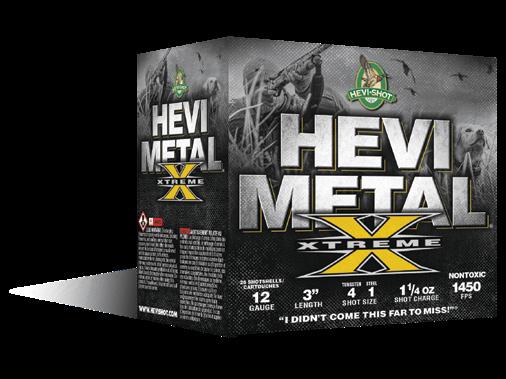
fps—translates to increased downrange energy. Both 20- and 12-gauge loads are offered. Federal Premium, www.federalpremium.com

•MAX POINT
Featuring CCI’s proven Clean-22 polymer bullet coating to significantly reduce copper and lead fouling in the barrel, the new Hyper Velocity .22 LR rimfire cartridge incorporates a 31-grain round-nose bullet travelling at a speedy 1,550 fps. Available in 50-round boxes, these economical and accurate loads are well-suited for small game hunters and target shooters alike. CCI, www.cci-ammunition.com


•E-TECH
Winchester’s environmentally friendly E-Tech shotshells feature compostable BioAmmo wads made from biopolymers. Designed to produce consistent patterns, the

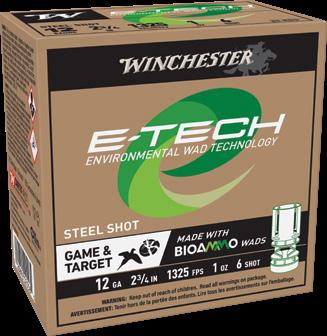
Promising devastating hits, these waterfowl loads punch out tungsten pellets (30 per cent) stacked over steel pellets (70 per cent). To ensure equal downrange performance, the dense tungsten pellets are three shot sizes smaller, while the Flitecontrol Flex wad helps guarantee consistent longrange patterns. The 12- and 20-gauge shells come with #6 tungsten and #3 steel, or #4 tungsten and #1 steel. HEVIShot, www.hevishot.com
Federal partnered with HEVIShot to produce its new HEVIBismuth loads for both waterfowl and upland bird hunters, available in #3, #4 and #5 shot in 2¾- and three-inch shells. The increased density of bismuth over steel when launched at equal speed—expect muzzle velocities of 1,350 to 1,450
Featuring a polymer tip to help ensure rapid expansion and maximum energy transfer, Max Point bullets are heavy-forcalibre with thick copper jackets to aid penetration, making them well-suited for a wide range of big game. Complete with a nickel-plated case to ensure smooth feeding, they come in 14 calibres, including popular new cartridges and classic loads ranging from .243 Win. to .300 Win. Mag. Browning, www.browningammo.com
•7MM PRC
Similar to the time-tested 7mm Rem. Mag., the updated 7mm PRC (Precision Rifle Cartridge) is designed to shoot heavier bullets with higher ballistic coefficients. As well, it has no belt to cause problems for reloaders, and it has slightly less case capacity, making long barrels unnecessary. For now, it’s available in 160-grain CX Outfitter, 180-grain ELD Match and 175-grain ELD-X Precision Hunter loads. Hornady Manufacturing, www.hornady.com
Impulse Mountain Hunter Rancher Carbine Laminate Clean-22 Hyper Velocity•SFL
Up to 30 per cent lighter than comparable binoculars, the compact new SFL (SmartFocus Lightweight) binos from Zeiss promise true colour reproduction and high-definition detail. And perfectly positioned SmartFocus focus wheel, users can quickly dial in a precise view, even while wearing gloves. The ergonomic SFL is available in four models: 8x30, 10x30, 8x40 and 10x40.
•GEOVID
With integrated sensors combined with Applied Ballistics software, these new compact rangefinding binoculars can factor in barometric pressure, the temperature and terrain features to calculate the equivalent horizontal range for both close and long shots. Available in 8x42 and 10x42 models, the ergonomic and waterproof Geovid Pro 42 also features GPS mapping capabilities. www.leica-camera.com

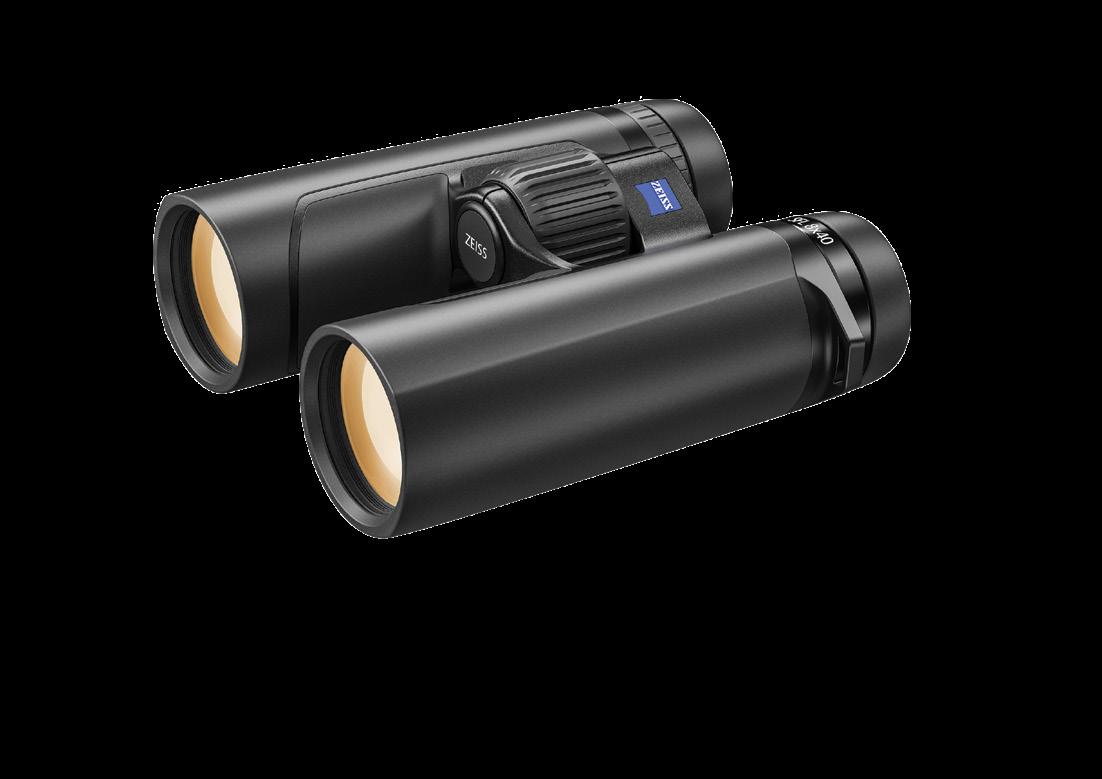
•DROPTINE
Designed for tough hunts when you don’t want to worry about your gear holding up, Burris’ latest binos are nitrogen-filled to ensure fog- and waterproof performance. They also sport rubber armouring for protection against hard use. Available in 8x42 and 10x42 models, they feature BaK-4 prisms and fully multi-coated lens for maximum light transmission and reduced glare. Burris Canada, www. stoegercanada.ca/brands/burris
•BX-4
Weighing 38 ounces, Leupold’s first rangefinding binoculars combine a laser engine with the com pany’s True Ballistic Range/Wind computations to provide highly accurate ranges at any angle. Able to range reflective targets at 2,600 yards, trees at 1,600 and deer-sized game at 1,100, the unit features left- and right-side programmable buttons, and fully coated optics for improved light transmission. Leupold, www.leupold.com

•PREDATOR 8
Boasting 8x zoom capability and built on a 30mm tube chassis, the Predator 8 comes in three models: 2-16x42, 3-24x50 and 4-32x56, each equipped with an illuminated reticle with 11 brightness settings. Hunters looking to take advantage of the scope’s precision reticle adjustment to compensate for bullet drop at extended distances will appreciate the audible and tactile ¼ MOA ballistic turret. Steiner Canada, www.steinercanada.ca
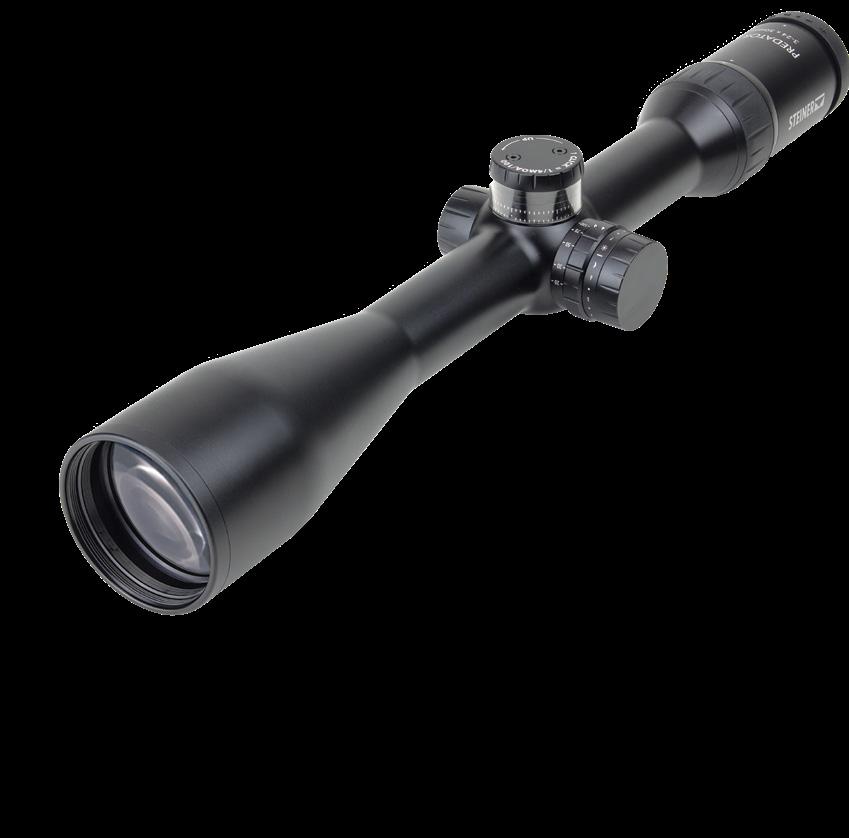
•FORCE-PRO-S
Spypoint has modified its popular Force-Pro trail cam by adding an integrated solar panel to charge the internal lithium battery, keeping the unit powered for months at a time. As with its predecessor, the Force-Pro-S captures still photos at 30 megapixels and records 4K video. It also features a trigger speed of 0.2 seconds, a detection range of 110 feet, and a flash range of 90 feet. Spypoint, www.spypoint.com

Purpose-built for long-range shooters, Bushnell’s latest laser rangefinders feature multi-coated glass lenses—described as totally waterproof—for maximum clarity. The 3000 model offers plus-minus one-metre accuracy out to 2,000 metres, and two metres to 3,000. The 4000, meanwhile, achieves the same out to 4,000 metres on reflective targets. Both include Bushnell’s Angle Range Compensation technology, Bushnell, www.bushnell.com
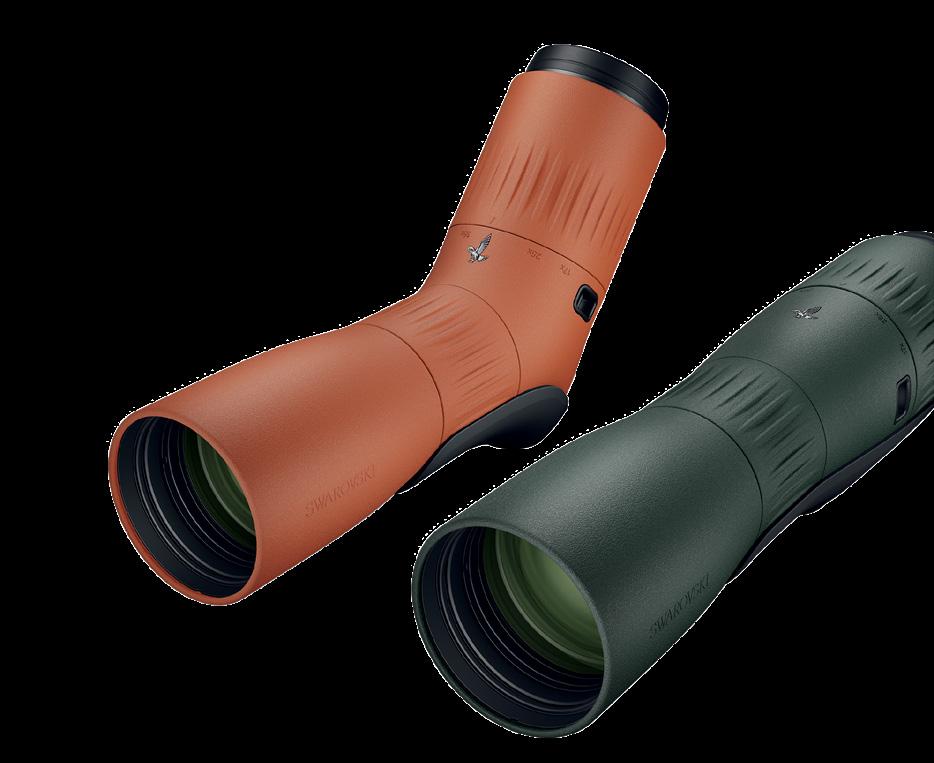
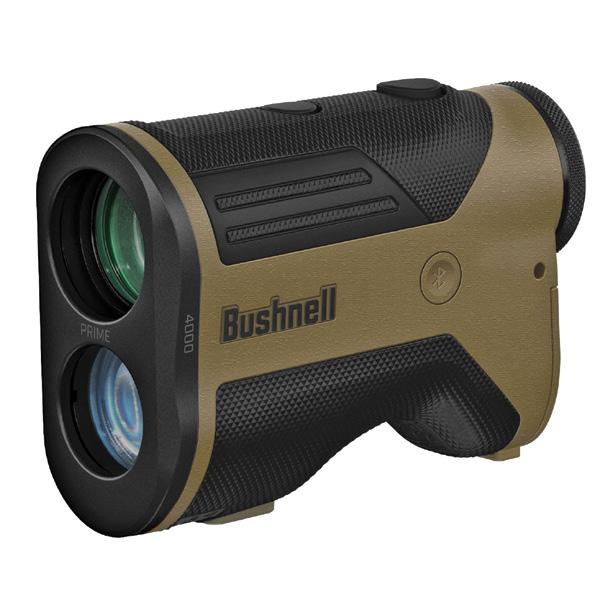

Swarovski’s new 17-40x56 lightweight spotting scopes are intended for those extended hunts when every ounce you pack is critical, but you don’t want to sacrifice optical quality. The ATC model features an angled eyepiece, while the STC’s eyepiece is straight. Designed to be used with or without a tripod, each is available in green or orange armour finish. Both models weigh approximately 35 ounces. Swarovski Optik, www.swarovskioptik.com
Droptine Geovid Pro 42VEST X 2.0
This feature-laden vest should meet the needs of every upland hunter, male and female. The expandable and removable belt fits 26- to 62-inch waists, while the wide shoulder straps can be adjusted for hunters of all sizes. Other features include oversized game pockets with 16 inches of adjustment, and shell pockets with a one-handed magnetic lid that doubles as a gun rest. Alps Outdoorz, www.alpsoutdoorz.com


Featuring Sportchief’s “The Ripper” camo matching Canada’s boreal forest, the quilted Wilson offers warmth and comfort thanks to the Primaloft insulation. The lightweight jacket can be worn on its own during spring and fall, or paired with an outer layer when temperatures plunge. Features include a zippered inside pocket, two outer front pockets and an integrated hood. It comes in men’s and women’s models. Sportchief, www.sportchief.com
Firearms cleaning, scope mounting and gunsmithing tasks should be a snap with the Master Gun Workstation. Creative features include a levelling knob that permits adjustments of plus-minus three degrees to help ensure your scope is mounted perfectly level. Other attributes include 18 storage holes for jags, brushes and oils, a chemical-resistant base tray and integrated storage for two cleaning rods. Real Avid, www.realavid.com

Engineered to both reflect back and amplify body heat for added warmth, Heatwave Base Layers for cold weather are available in three weights, with tops and bottoms for both men and women sold separately. The comfortable, four-way stretch fabric with integrated Spandex and chafe-free seams features thin wicking panels and anti-microbial venting to keep moisture and odours at bay. Seirus, www.seirus.com


With its three-inch clip-point blade made of strong D2 steel, this folding knife offers the utility and control required for precise tasks, including field dressing, and even caping, your big game. A ball-bearing pivot ensures the blade opens smoothly and reliably, while the included pocket clip allows you to carry the knife either on your belt or safely tucked away in your pack. Columbia River Knife & Tool, www.crkt.com
 Heatwave Base Layers
Wilson
Upland Game Vest X 2.0
Pilar IV
Heatwave Base Layers
Wilson
Upland Game Vest X 2.0
Pilar IV
•DAKA
Made of injection-moulded polypropylene, this lightweight rifle case has been designed for reliability, durability and ease of use. Features include lock able push-button latches, bumpers, rubber wheels and handles that stay extended when in use. In side, it incorporates Magpul’s fully customizable Daka Grid Organizer system for keeping your rifle and accessories securely in place. The case comes in three different lengths.

www.magpul.com
•BIG
ELK BUGLE
When you need to reach out and bugle across canyons or river valleys to find bull elk, this call of fers just the answer. With its large, resonating sound chamber, the Big Poppa is designed to make extremely loud, realistic bugles for long-distance calling. Primos’ mouthpiece and Blue Reed calling system are included, or you can use your own favourite diaphragm call. It comes with an integrated carrying strap.

Complete with a lightweight saw and two drop-point folding knives with replaceable blades, the RazorGuide Pak ensures you’ll have all the tools you need to process big game, from the field to the table. Five replacement blades for gutting, boning, filleting and caping are included, along with a waxed canvas roll pack that converts into a belt Outdoor Edge, www.outdooredge.com

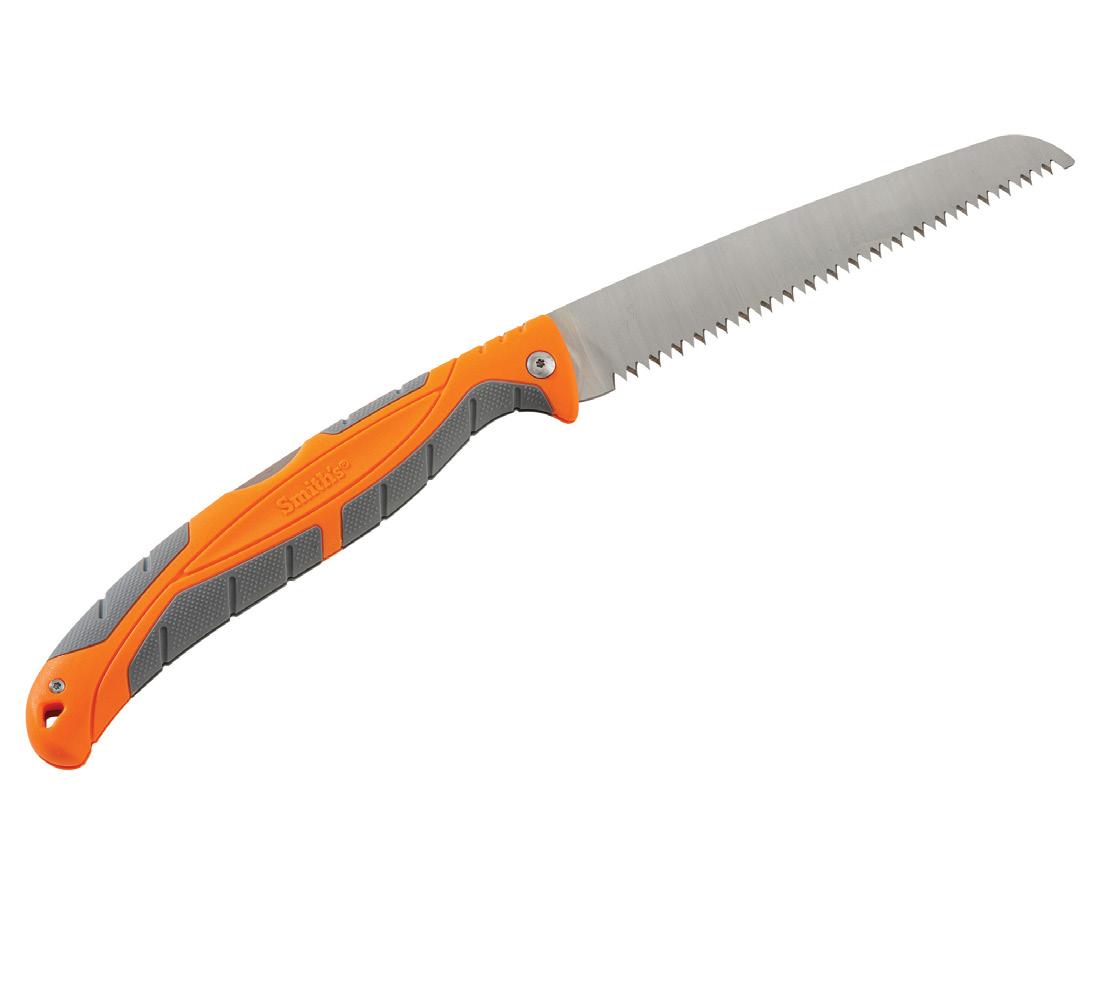

Made of lightweight aluminum and carbon fibre, the Javelin family of bipods includes three models with varying leg lengths, the shortest version weighing just 4.8 ounces. Designed to be easily carried afield in a pocket, holster or pack, these bipods both cant and pan, allowing you to level your scope on uneven ground and stay on a moving target. They come with an adapter to attach to any rifle. Spartan Precision Equipment, www.javelinbipod.com

The RAT 3 Skinner’s all-new blade design features a deep belly with great curvature for skinning game with ease, or for small chopping tasks. The 3.75-inch blade is made of phosphate-coated high carbon steel, while the handle is constructed of strong, yet lightweight Micarta. With an overall length of 7.75 inches, the knife comes with a leather sheath with a belt loop and retention strap. Ontario Knife Company, www.ontarioknife.com OC
ALSO TURN TO PAGE 27 FOR THIS ISSUE'S REGULAR COLUMN BY HUNTING EDITOR KEN BAILEY
•RAT 3 SKINNER RazorGuide Pak Daka Hard Case Bone Saw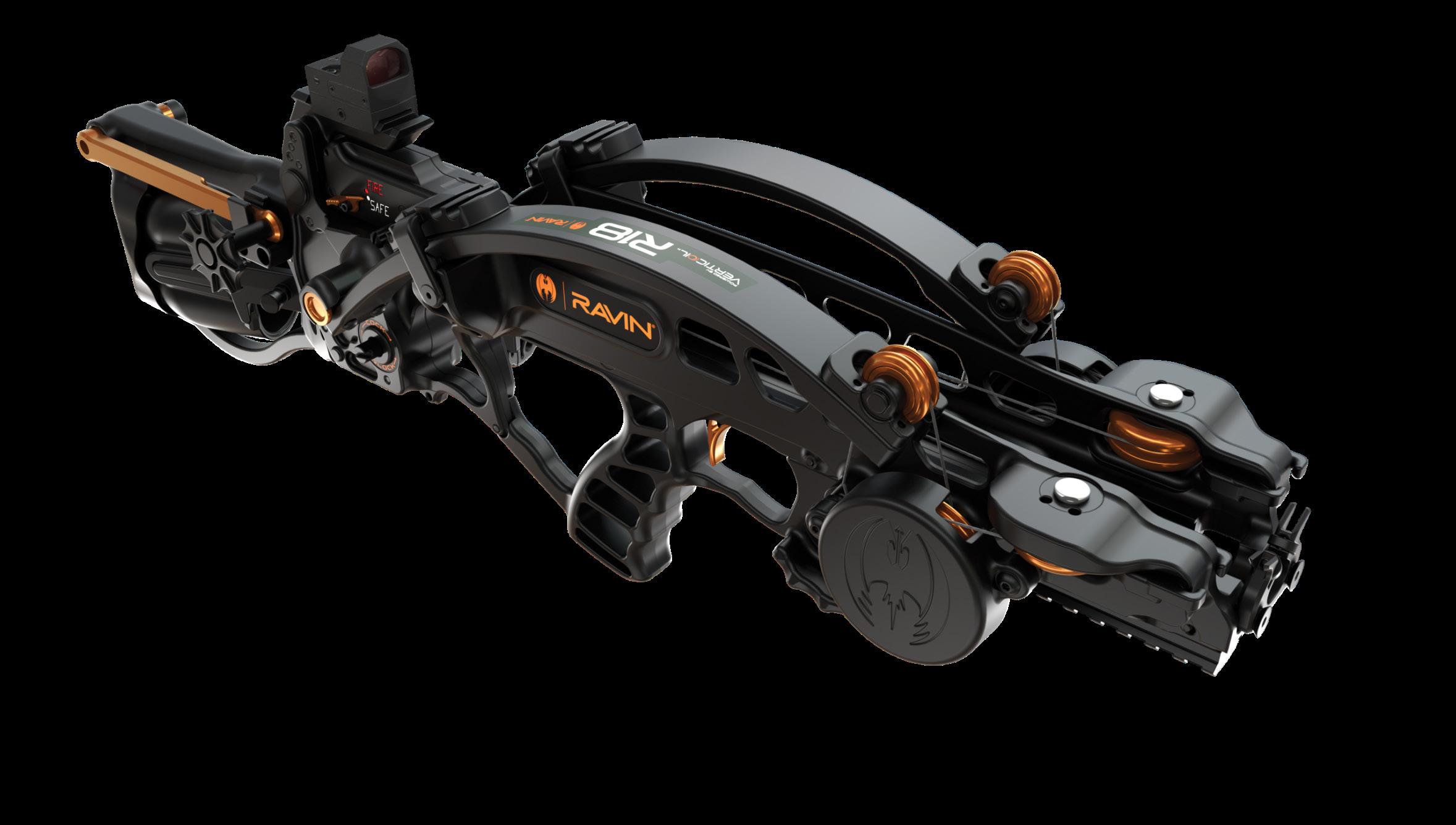
•RAIDER 400 DE-COCK
JUDGING BY JANUARY’S
Archery Trade Association Trade Show (aka ATA Show) in Indianapolis, Indiana, there is now more selection and better quality than ever before when it comes to bowhunt-
ing gear. Not only that, but bows, arrows and accessories continue to advance technologically. If you’re getting into archery or upgrading your equipment, here’s our annual roundup of the top new gear for Canadian bowhunters.
Shooting 400 fps and weighing just 5.8 pounds, the 31.5-inchlong Raider 400 De-Cock offers excellent value, complete with a custom-like trigger set at 3.5 pounds. It comes with the choice of an adjustable AR-style tactical stock with a rope sled for manual de-cocking, or the simple and safe ACUdraw De-Cock system. The crossbow also comes packaged with a lighted scope, quiver and arrows. Wicked Ridge, www.wickedridgecrossbows.com
•R18S
With limbs that retract vertically above the rail upon the shot, rather than horizontally, the R18S’s VertiCoil Cam System is designed for hunting in tight quarters. With an axle-to-axle height of just 1.3 inches when fully cocked, this unique, six-pound crossbow is just 18 inches long (25 inches with the removable stock) and 4.75 inches wide, producing arrow speeds of 360 fps. Ravin, www.ravincrossbows.com

The 26.5-inch-long Flatline 460 offers speed, accuracy and a compact design, with the reverse-draw limbs creating a 14-inch power stroke. Just 7.5 inches wide when cocked, the 7.5-pound bow delivers arrows at 460 fps, making it the fastest compact crossbow on the market. Features include an adjustable two-piece stock, adjustable speed scope, ACUslide cocking system, and a two-stage zero-creep trigger with a 3.5-pound pull. TenPoint, www.tenpointcrossbows.com
•WOLVERINE
Excalibur is celebrating 40 years of crossbow production with an anniversary edition of its first-ever offering, the Wolverine. Easy to manoeuvre, the 31.5-inch-long compact bow weighs 6.4 pounds without accessories, and shoots at 360 fps. The crossbow comes ready to hunt, complete with a custom-like trigger, a rope cocking device and safety features to prevent dry firing. Excalibur Crossbow, www.excaliburcrossbow.com




Lightweight and manoeuvrable with a composite riser, the Hyper Raptor measures approximately seven inches axle to axle when cocked. Featuring the new Halo system to eliminate cable crossing and cam lean for improved stability and accuracy, the bow fires smalldiameter HyperFlite arrows at up to 410 fps. It comes with a multi-reticle scope, quiver, arrows, rope cocking device and wax. Barnett Crossbows, www.barnettcrossbows.com

Measuring 32 inches axle to axle, the quiet and stable REVEX 2 has a solid back wall, a smooth draw cycle, a brace height of 6.25 inches and a speed rating of 338 fps. The draw length adjusts from 26 to 30 inches, while the draw weight adjusts from 40 to 80 pounds. The cam system reduces the need for tuning, and for better balance, the centre grip riser moves more mass below the shooter’s hand. Prime Archery, www.g5prime.com
Offering a smooth draw cycle, the Carbon RX-7 is lightweight yet strong thanks to the carbon construction, while the In-Line System of accessories keeps things quiet. The cams are adjustable, with two different modules to optimize speed and energy in the draw length. This 342 fps bow measures 30 inches axle to axle, with a 25- to 30-inch draw length and a draw weight of 30 to 80 pounds. Hoyt Archery, www.hoyt.com

Representing Bear Archery’s 90 years of bow making, the Execute 32 measures 32 inches between axles, with a brace height of 6.375 inches, draw lengths of 26.5 to 30.5 inches and a speed rating of 340 fps. Users can customize the let-off to one of four settings (75, 80, 85 or 90), while the aluminum riser and limb pockets keep the weight down, and a vibration-dampening system reduces noise. Bear Archery, www.beararchery.com
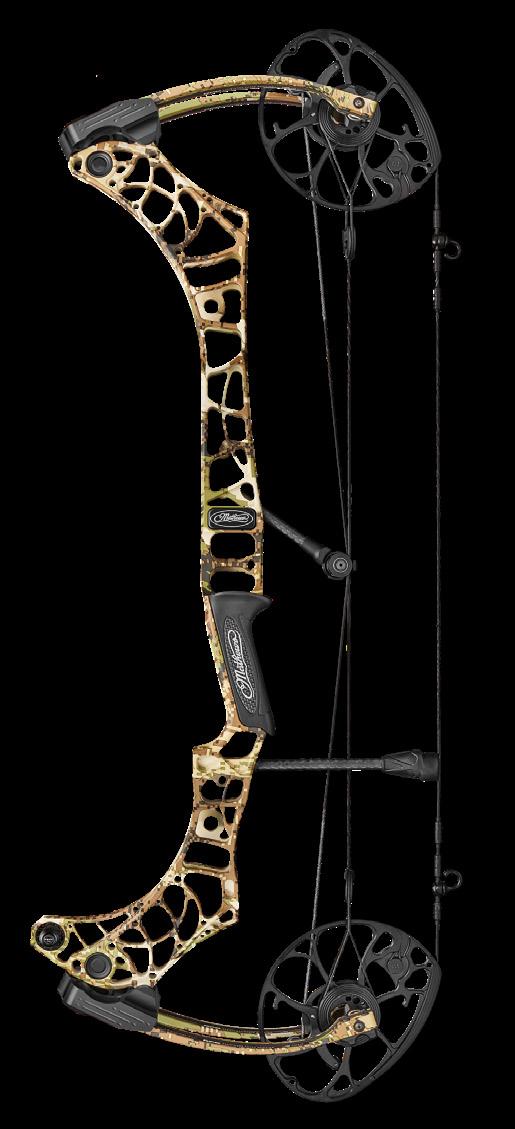
•SS34
Rated for 347 fps, the 4.9-pound MTX 29 offers stability with zero cam lean, angled dual rear stabilizer mounts, and a forged riser with a removable moulded grip. It also features dual mod and limb stops, a 61⁄8inch brace height and an axleto-axle length of 293⁄8 inches. The draw weight ranges are 45 to 55 pounds, 55 to 65, and 65 to 75, with draw lengths of 25 to 28.5 inches, and 28.5 to 30. Martin Archery, www.martinarchery.com
Featuring Bowtech’s DeadLock Cam System for consistent accuracy, the new SS34 is smooth to draw, with no felt vibra tion upon releasing the arrow. Measuring 34 inches axle to axle, the 4.7-pound bow has a 6¾-inch brace height and a draw-length range of 26 to 31.5 inches. The peak draw weight options are 50, 60 or 70 pounds, and the speed rating is 331 fps. Bowtech Archery, www.bowtecharchery.com


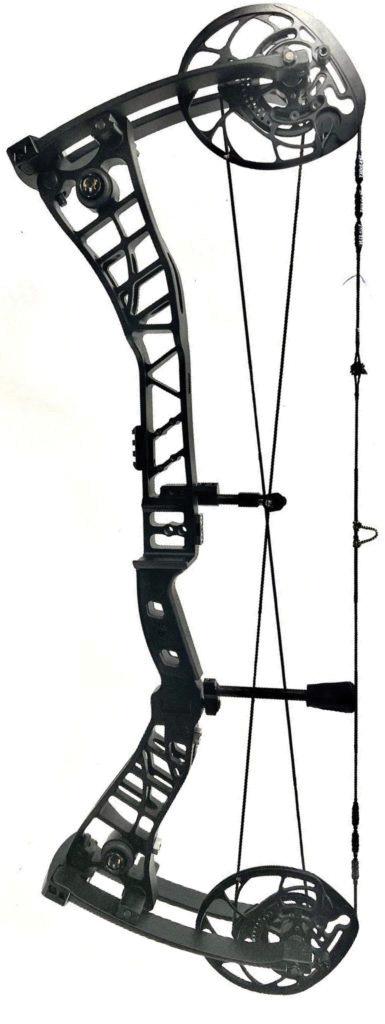
•MACH 34 (S2 CAM)
Equipped with PSE’s Full Draw Stability system, the 3.65-pound Mach 34 carbon bow provides power, stability and precision by resisting torque. The easy-totune S2 version has a drawlength range of 26½ to 30½ inches, and a 6¾-inch brace height. It also features PSE’s new axle system to prevent overtightening, a primary cause of bearing wear. Measuring 34 inches axle to axle, the Mach 34 shoots up to 340 fps. PSE Archery, www.psearchery.com
Available in 29- and 33-inch lengths, the Phase4 sports Resistance Phase Damping technology to stop vibration and deaden sound, as well as Bridge-Lock stabilizers for improved balance. The 29-inch model has a six-inch brace height and draw lengths of 25.5 to 30 inches, while the 33-incher has a 6.5-inch brace height and 27- to 31.5inch draw lengths. They shoot 340 and 336 fps, respectively. Mathews Archery, www.mathewsinc.com

What could be more fun for kids and adults alike than practising their bowhunting skills on Delta McKenzie’s monstrous 3-D Backyard Archery Targets? The new 47-inch-wide T-Rex model stands 79 inches tall, while the Dragon measures 44 inches by 28 inches. Made of self-healing foam, both targets can handle field points and broadheads, as well as high-speed crossbow Delta McKenzie Targets, www.dmtargets.com
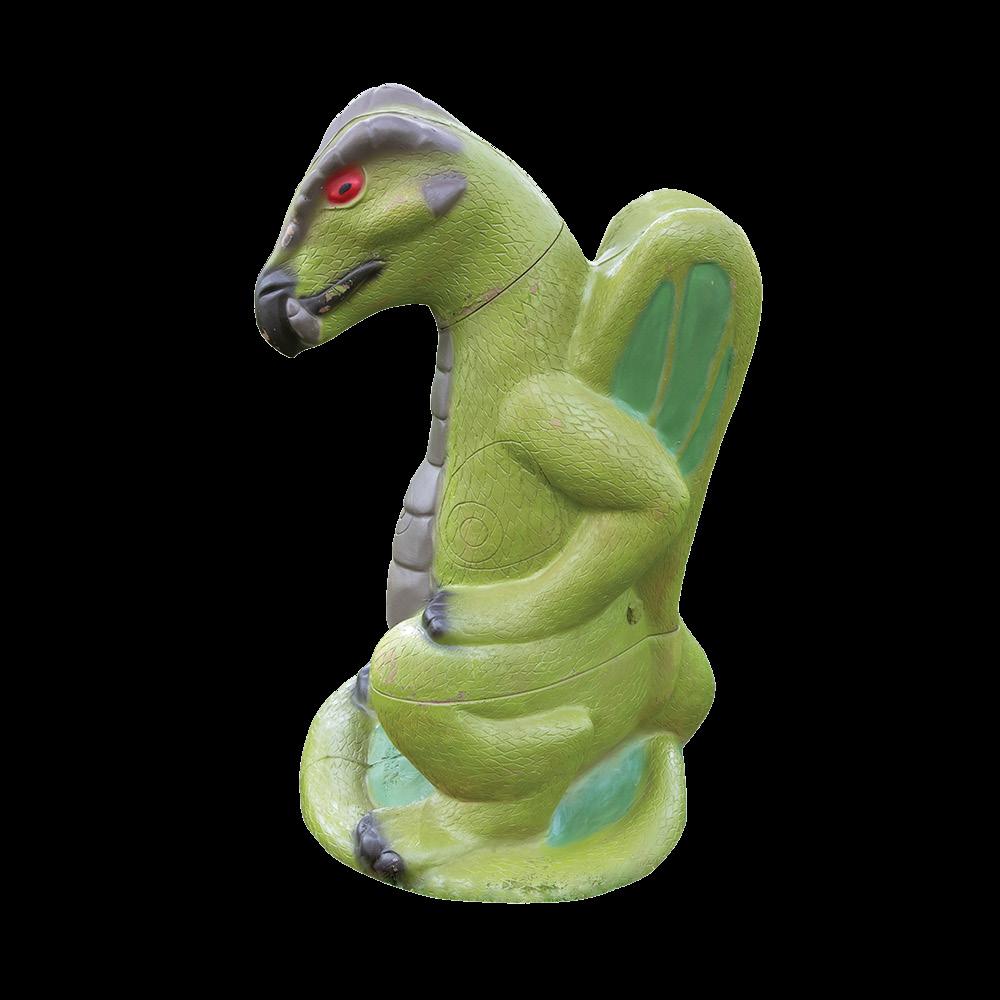
•ARXOS
Available in left- and right-handed versions for attaching to either a bow mount bracket or Picatinny rail, the ARXOS is a custom-dial sight easily converted and calibrated for any hunt. It features the 20-degree Angled Elevation System, which allows for more yardage for downrange accuracy, while the oversized VOID dial makes micro-adjustments a breeze. Dialed Archery, www.dialedarchery.com
With a three-spine shaft, extreme small diameter (0.166 inches) and 30-ton carbon construction, Maxima Triad arrows promise strength, wind resistance, downrange accuracy, excellent penetration and easy tuning. Equipped with aircraft aluminum-grade nocks and two-inch Q2i Rapt-X vanes, the arrows come sorted and matched by spine and weight to ensure consistency. Carbon Express, www.carbonexpressarrows.com


Designed to illuminate once the string is released, this easy-to-in stall nock’s super-bright LED light promises 20-plus hours of lithium battery life. Encased in waterproof, shockproof polycarbonate, it can be quickly turned off via an external switch. And with the included universal inserts, the nock can fit any arrow. It comes two to a package, in red, green and a red/green strobe. Nockturnal Lighted Nocks, www.feradyne.com
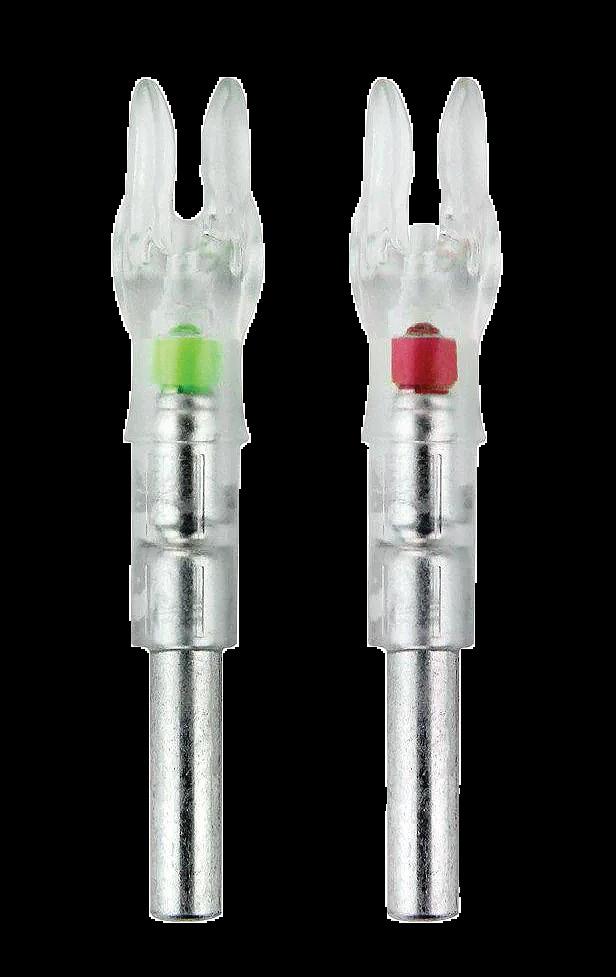
The quiet, durable and easy-to-use adjustable wrist strap on the Terminus Dual Jaw BOA Release allows for a snug, customized fit. The release itself features a 360-degree rotating head, sear-less firing mechanism, synchronized jaws for consistent arrow release, adjustable release positions and a forward trigger. As well, the nitridefinish on the trigger and jaws make them weather resistant Apex Gear, www.apex-gear.com


Designed to protect two 47-inch compound bows and accessories, this rolling travel case sports a tough, water-resistant nylon outer shell, exterior padding and a woven-in main zipper. Other features include a fleece-lined main compartment, six accessory pockets and three outer access pockets. The Gen 2 also now comes in a wider version for attached bow sights, and a shorter model for recurves. Easton, www.eastonarchery.com

SEVR and TightSpot co-designed
the 16.5-inch-long Max Grip Quiv er to hold five arrows tipped with expandable, fixed or hybrid-style broadheads, as well as SEVR’s Lock-and-Pivot blade system. It features a vented hood, BullDog arrow grippers and a three-way adjustment system allowing the user to position the quiver tightly to the bow. Easy to attach and remove, it weighs just 11 ounces. SEVR, www.sevrbroadheads.com
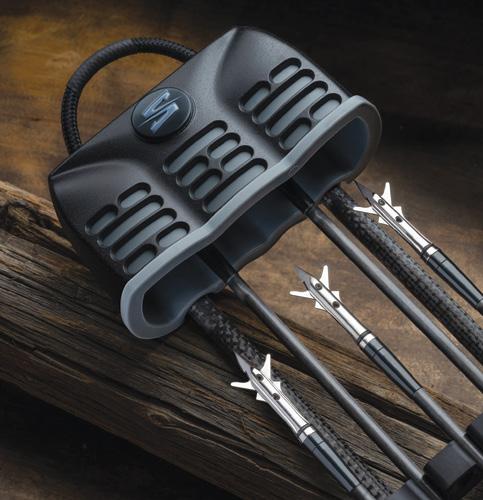
Promising “ultimate accuracy and durability,” these high-performance hunting arrows feature G5’s proprietary three-layer carbon construction and SLIK coating, Bohning vanes and nocks, and machined aluminum inserts. The 0.203-inch-diameter Mark 203 model is available with a 250, 300, 350 or 400 spine, while the 0.244-inch Mark 244 comes with a 300, 350 or 400 spine. G5 Outdoors, www.g5outdoors.com
Promising increased accuracy and efficiency over the original Whisker Biscuit drop-away arrow rest, the new V Max offers fixedrest accuracy and efficiency by centring the arrow and preventing side-to-side movement. At the same time, the perpendicular bristles reduce vane drag for consistent arrow velocity and accuracy, while the sight provides for tool-free windage and elevation micro-adjustments. Trophy Ridge, www.trophyridge.com OC
ALBERTA CONTRIBUTOR BRAD FENSON BOWHUNTS WITH BOTH CROSSBOWS AND COMPOUND BOWS.

No matter how you like to fish, having just the right boat makes all the difference when it comes to comfort, convenience and success on the water
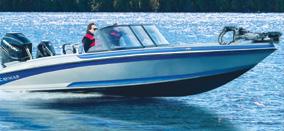


THERE’S AN OLD adage about any job being easier when you have the right tools, and that definitely applies to fishing boats. Just as there are endless ways to catch fish, there are an equally endless variety of fishing boats to help you do just that. That means selecting the right boat for your specific needs takes a bit of thought and research.
Shopping for a new fishing boat starts by making an honest assessment of your own
needs, preferences and budget. Do you prefer to troll, or cast? Do you like big open lakes, or smaller more protected waters? Will you trailer the boat, or keep it docked somewhere? Will it be just you and a buddy fishing, or are you planning to bring the whole family along?
Be realistic in your answers, because this selfassessment can really save you a lot of money by ensuring you find the perfect boat right from the start. Consider the following pointers to help put you in just the right captain’s chair.
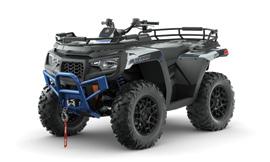
If you spend most of your fishing time trolling on big open water, you’re going to need a boat built to handle the swells without losing its cool. That means you want a deep-V hull, plenty of freeboard, a flared bow to deflect the spray and plenty of power to get home fast if the weather turns sideways.
Forget Florida-style centre consoles and focus on walkaround models instead. They offer far greater protection from the elements, which is particularly important when you’re fishing
early or late in the season. They also provide more storage space for gear, including a small cabin for overnighting on weekend trips.
Walkarounds typically feature wide-open sterns for plenty of trolling space, with aft-facing seating for anglers to comfortably monitor their lines. Overhead tops provide relief from the hot sun and cold rain, while stabilizer systems—either
full gyroscopes or tab systems—nearly eliminate rolling and pitching for a much smoother ride, even in big swells. Features such as padded coaming enhance onboard comfort, while toe rails help you keep your balance when setting lines or landing fish.
The downside to walkarounds is their higher cost. They’re not cheap, and you’ll need a full-sized pickup to tow one. Welded
aluminum boats with deep-V hulls also offer bigwater comfort and greater occupant protection, but in a less expensive package. As with their fibreglass relatives, these vessels feature dashboard layouts with room to mount a large multi-function display, or twin screens if you prefer. They also have reinforced gunnels with plenty of space for downriggers and rod holders.

If you’re the kind of angler who prefers casting rather than trolling, you’re going to want a bass boat—end of story. With their spacious, elevated decks and unrivaled creature comforts, bass boats can’t be beat when you’re tossing lures all day long.

Fibreglass models are pricey, but they offer incredible stability on the water and they’re almost completely immune to being pushed around in the wind. Aluminum bass boats are less expensive and easier to tow, but their lighter weight means they’ll blow around more in the wind, requiring frequent corrections with the electric trolling motor.
When shopping for a bass boat, forget the glitzy metal flake finishes and focus instead on the width of the boat as it’s measured at the chines—those sharp ridges where the sides of the boat meet the bottom. And I don’t mean just at the transom, but over the full length of the boat. Wider boats deliver far more stability on the water by spreading the load over a greater area. This can make a big difference in stability when you lean over the side to land or release a fish.
What’s more, boats with wider bottoms plane faster, stay on plane at lower speeds, and allow you to enjoy better fuel economy with their greater hydro-
dynamic efficiency. Wide boats also let you enjoy terrific performance with smaller outboards, helping to keep the overall package more affordable.

On some boats, the chines are sharp enough to form a 90-degree angle between the sides and bottom, while still others extend beyond the bottom, giving the hull a slightly M-shaped profile. These so-called reverse-chine models deliver the driest rides by deflecting spray downward, keeping it out of the boat. They also tend to provide more grip for superior handling while turning. The downside is a bit of a rougher ride in choppy water, but since
most fishing time in a bass boat is spent on relatively calm water, few buyers ever worry about that.
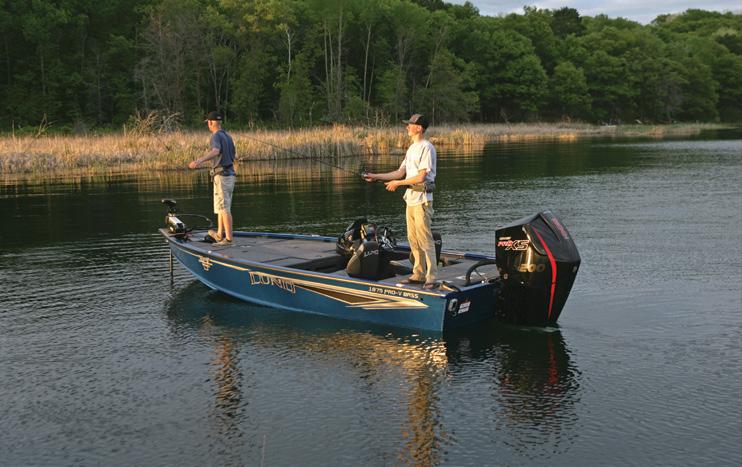
Inside the boat, check the dash profile to ensure you can mount electronics without impairing your forward view. On some boats, you’ll need to use a RAM mount or similar articulated bracket to hold your display unit in place where it’s not blocking your view.
Marine carpet has long been the standard flooring in bass boats, but newer PVC and vinyl floors are a better choice these days. On a rainy day, thick deck carpet can soak up a huge amount of water and add hundreds of pounds to your boat’s weight, impairing performance. Carpet can also take days to completely dry out, while durable PVC or vinyl will shed water rather than absorb it, and dry in minutes.
What if you like to cast and troll while chasing every species of fish in the lake? That’s easy—you need a multi-species boat. Combining the large casting decks and lateral stability of bass boats with the deep-V hulls and higher gunnels of big-water boats, multi-species rigs may represent a design compromise, but they work surprisingly well. They won’t handle open water quite like a true big-water boat, and they don’t have the same spacious casting decks as a proper bass boat, but their ability to do a bit of everything has made them immensely popular.
When shopping for a multispecies fishing rig, look for a modified-V hull with reverse chines that will deliver improved
If you like to fish with the whole family or a bunch of buddies in tow, then there’s one clear answer—you need a fishing pontoon boat. Pontoons have already become increasingly popular due to their comfort, stability, seating capacity and performance. Today’s fishing models, however, have taken things a step further by adding amenities such as swiveling casting chairs, rod storage, live wells and other fishing-specific features. Some also have abbreviated front entry gates to accommodate a foot-controlled electric motor, while others offer reinforced spaces to mount downriggers.
Fishing pontoons come in either twin- or quad-seat styles. Twinseat models include two fishing chairs, typically placed side-byside on an extended front or rear deck, while quad models feature one seat in each corner. Both versions also include the ubiquitous

handling and a drier ride in rough conditions. Some designs incorporate a bass boat-like planing pad at the transom for even smoother driving performance.
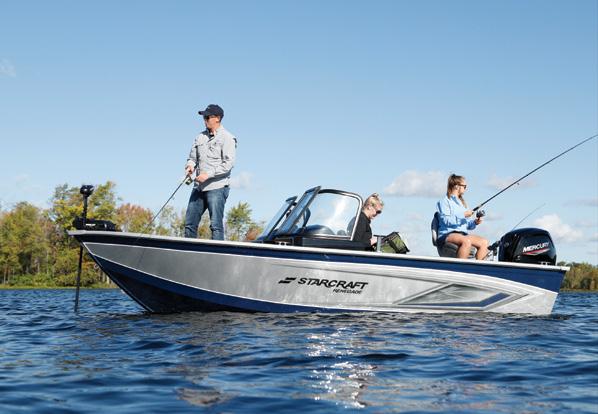
Also check the casting deck heights to ensure you can easily reach the waterline to handle fish without leaning precariously over the side. Some bow decks sit higher off the water than others, and one that’s too tall will prove annoying in very short order.
Multi-species boats come with dual consoles and full windshields, or side consoles with a bubble windscreen over the dash. There are also tiller models. Full windshield models provide the greatest comfort when you’re fishing early or late in the year. They also have more storage space in the twin consoles, but they tend to be the priciest models due to the extra components. Tiller versions are the simplest, cheapest and arguably the most versatile thanks to their capacity for precision backtrolling, but they offer the least weather protection. Side consoles represent the middle ground.
Complete with Princecraft’s precisiontested aluminum hull, this sporty fishingready boat comes loaded with standard features and a wallet-friendly price tag. Anglers will appreciate the ample storage, aerated livewell, raised casting platforms, anti-skid vinyl floor, electric trolling motor plug and base, and much more.
LENGTH: 16' 2"
BEAM: 85"
LAYOUT: SINGLECONSOLE
MAX HORSEPOWER: 60
FUEL CAPACITY: 22-LITRE PORTABLE TANK
PASSENGER CAPACITY: 4
LIVEWELL: BOW, 61 LITRES
ROD STORAGE: TWO 7-FOOT COMPARTMENTS
MSRP: $29,299 (WITH 60-HP MOTOR, TRAILER)
LEARN MORE: WWW.PRINCECRAFT.COM
lounge seating, snack table and overhead Bimini top now found on most pontoon boats. With their track-like platform, fishing pontoon boats offer the ultimate in stability, along with wonderful casting decks. The biggest appeal, though, is that you can fish in comfort while non-anglers still have plenty of space to stretch out and relax. In that respect, they hold appeal for everyone on board, whether they like to wet a line or not. OC
CONTRIBUTOR CRAIG RITCHIE SPECIALIZES IN COVERING THE MARINE INDUSTRY.
Quiet and smooth, this powerful, fuelefficient outboard is sure to impress anglers with its variable trolling speed function, allowing you to adjust the trolling speed in 50 RPM increments. The stateof-the-art F150 also features integrated steering, easy engine tilting, 20- to 25-inch shaft options and much more.
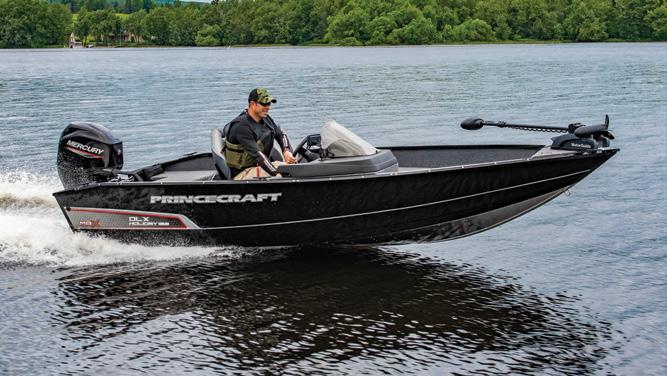
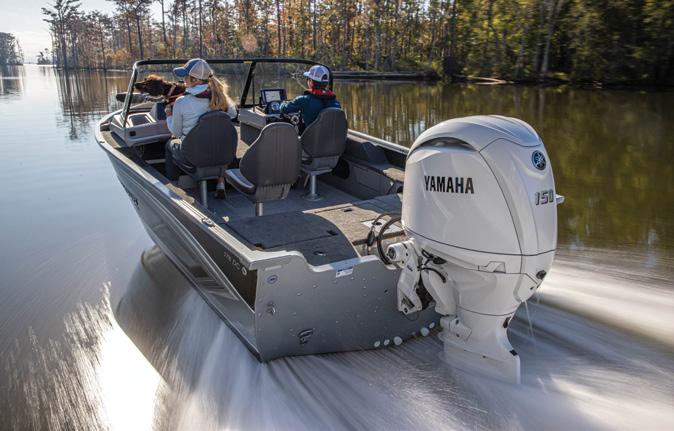
ENGINE: IN-LINE 4 CYLINDER
RPM RANGE: 5,000-6,000
INDUCTION: DOHC
ELECTRONIC FUEL
INJECTION
STARTING: ELECTRIC W/PTT
IGNITION: TCI MICROCOMPUTER
DEGREE OF TRIM/TILT: -4° to +16°/70°
COOLING: WATER/
THERMASTATIC CONTOL
GEAR SHIFT: FORWARD/
NEUTRAL/REVERSE
MSRP: $22,579-$29,102
LEARN MORE: WWW.YAMAHA-MOTOR.CA













2023
BY LOWELL STRAUSS

Whether you want a solid workhorse or simply a reliable ride to camp and back, having the proper ATV to meet your needs can be a real game changer




ALL-TERRAIN VEHICLES, or ATVs, may go by several different names—UTVs, RTVs, quads and side-by-sides, for example—but they all provide compact, go-anywhere capabilities for hauling people, gear and game off the beaten path. Where they differ is in their performance under different driving conditions. There is a dizzying array of options, so picking the perfect ride requires research and thoughtful consideration. After all, we all want to spend our hard-earned cash wisely.
Start by deciding how much money you want to spend, then look for the best deal possible that matches your wants and needs. First and foremost, the model you ultimately choose must be able to handle the terrain you expect to regularly tackle, whether it’s off-trail, muddy, snowy or rocky, and so on.
You also need to consider how you plan to use the ATV. Will you haul bulky gear, or tow a trailer? Do you need a climate-controlled cab for year-round use? Will others be riding with you? Along with consulting the experts at your local dealership, here are some key purchasing points to help drive your decision.
For venturing where full-sized vehicles can’t, most ATVs will get you there and back. You just need to consider the terrain you’ll be covering, as slogging through mud, climbing over logs and navigating rocky terrain requires more horsepower, traction and agility when the going gets tough.
Also think about the comfort level you expect. Quads can carry you and sometimes a second person through the roughest and most demanding terrain. These ATVs feature motorcycle-style straddled seating and handlebar steering. Other than a visor or hand guards on some models, there is no rider protection. Larger, more stable UTVs, on the other hand, feature automotive-style seats inside a protective roll cage, along with room for one or more passengers. UTVs also utilize a steering wheel and foot pedals, offering the familiar driving feel of a car.
Of the two, quads provide more traction and manoeuvrability in extreme conditions, though many UTVs also handle admirably in the rough. For the most part, off-trail models require larger engines—typically ranging from 400 cc to 1000 cc—for the necessary torque. Knobby tires for aggressive traction are also the norm.

If traversing rough terrain is in the cards, also look for a locking differential, which provides additional traction in sticky situations. A locking differential works by locking the two front axles together to evenly distribute the drive torque between both wheels. That way, each wheel turns at the same speed, no matter what lies in your path. While some manufacturers offer limited variations and improvements on the differential lock, having it onboard can keep you rolling when things get gnarly, no matter how it operates.
When heading into the backcountry, an essential consideration is how far you will be able to travel on a tank of fuel, which can be difficult to gauge. Guidelines in the owner’s manual may provide an estimated range (or at least the fuel economy rating) based on the engine size; most ATVs should get anywhere from 50 to 300 kilometres per tank. Dashboard calculators on some models may also provide this
data. Keep in mind that your fuel use will depend on the type of driver you are, your payload and whether you’re towing a trailer, among other factors. For long-haul travel, your best friend (and insurance) is an extra jerry can. Whatever distance you plan to travel, you want an engine that runs cool to ensure constant power, less maintenance and a more comfortable ride. ATVs use one of two cooling systems; the one you select will again depend on the type of driving you plan to do. A liquid-cooled system is the most efficient, and the best choice for off-trail use. It uses a radiator and pump to circulate coolant, and an auxiliary fan for helping keep the engine cool at slower travelling speeds. Air-cooled systems require airflow over the engine, meanwhile, so they may not be the best option for long, slow journeys, especially if there’s a heavy payload putting a strain on the engine.
A final major consideration is the type of tires you select, which can mean the difference between superior traction and a comfy ride. For off-trail travel, knobby tires for traction are what you need. As with pickups, SUVs and cars, stock tires typically don’t provide the best performance. Serious off-trail users should consider tire upgrades as an additional upfront cost.
Travelling on established trails demands less of an ATV. That’s not to say a rugged utility ATV wouldn’t be at home on a trail, but its performance features are more than you need for mere touring. On trails, comfort trumps utility, so you can also go with less aggressive tires for

a smoother, quieter ride. As well, air-cooled systems provide ample engine cooling for this style of driving, generally making for a lower purchase price.
If you plan on only making short trips on trails, you may also want to consider an electric ATV. Many offer cargo and towing capacities comparable to those of their petrol-powered counterparts, as well as high-torque motors providing instant power to the drivetrain. And without the engine noise, electric ATVs are perfect for sneaking into hunting blinds without spooking game. They also require lower maintenance, and have zero fuel costs. The range is somewhat limited on most units to 150 kilometres or less, however, so when you’re out of juice, you’re out of luck—batteries typically require up to eight hours of recharging before you can hit the trail again.
warmth during the winter—the ultimate ice-fishing upgrade—as well as cool relief in the summer.
Maybe you’re the type of hunter or angler who loves the challenge of a solo adventure. In that case, there are several options available, but the best choice is a utility quad. The rideon design provides more control and balance in steep and uneven terrain, while delivering serious off-trail capabilities. These machines are also light enough that you can lift one side by yourself, making them easier to get back on course if needed.


You may still want to consider a two-up quad (or a small UTV), which then gives you the option of bringing along a travel companion. A two-up also provides the off-trail capabilities of a oneup model, but with a comfortable jumper seat for a second rider. Just realize, though, that the longer wheelbase makes it heavier than a one-person model.
For ferrying larger groups, four- and even six-person UTVs are capable people-haulers. The trade-off for carrying more passengers, however, is less cargo space—to keep the wheelbase in check, manufacturers shorten the cargo box on multi-seated models. That said, UTVs are also capable of towing a trailer to accommodate extra gear. A typical UTV can pull 680 kilograms and carry 135 to 270 kilograms in its rear bed. Hydraulic dump beds are an option on some models, allowing you to unload the box with the press of a button. If carrying extra gear is your only concern, a quad equipped with utility racks and storage bins should do the trick. If you need to carry even more, make sure the quad has a trailer hitch, or the option of mounting one. Also check the towing capacity if you plan to haul larger items, such as a boat or ice hut. A typical quad can pull approximately 550 kilograms and carry roughly 115 kilograms of gear on the front and rear cargo racks.
If you run an ATV throughout all four seasons, it’s almost inevitable you will need a winch at some point. Whether you’re extracting your ATV from the muskeg or pulling a moose onto a trailer, a winch is one of the most important accessories you can have. Some models include a winch in the purchase price, or you can buy an aftermarket one (just make sure it’s rated for the weight of your ATV).
With UTVs, you can also get a winch mount for the bed, which can save you from the back-breaking labour of getting heavy loads onto the deck. Finally, winch accessories such as pulley blocks and a remote off-switch provide added safety and convenience, so also keep them in mind during your search. OC
Many Canadians want a wintercapable ATV, making tracks the perfect add-on for keeping the machine on top of the snow. Tracks require additional power, however, so take that into account when selecting the engine size. Some UTVs also come with climate-controlled cabs for toasty

Comfort and versatility make this side-by-side Kubota’s most popular workhorse, complete with a powerful 21.6-horsepower diesel engine. Highly customizable and available in Realtree AP Camo, the RTV-X900 is great for towing, as well as for carrying gear and game in the handy hydraulic dumping cargo box. Other notable features include hydraulic power steering, front and rear independent suspension, heavyduty skid plates, high ground clearance, true four-wheel drive and much more.
ENGINE: 3-CYLINDER, 4-CYCLE DIESEL, OHV
TRANSMISSION: VARIABLE HYDRAULIC
BRAKING: WET-DISC, FRONT/REAR
SUSPENSION: INDEPENDENT FRONT/REAR
FUEL CAPACITY: 30 LITRES
CARGO CAPACITY: 500 KG
MSRP: $20,554
LEARN MORE: WWW.KUBOTA.CA



TRUTH BE TOLD , it’s hard not to assume how a day of fishing is going to play out based on the conditions of my old go-to boat launch. After all, the dock is long gone, the water is low and the concrete is busted. But as I stand there under the stars and moon, long before the sun even contemplates the idea of rising, I know that the possibilities are endless as my day officially gets underway. It’s the same with all boat ramps, although they’re not all created equal.
Over the years, I’ve seen launches as pristine as you could imagine, but just like my old put-in, I’ve also seen them broken, forgotten and essentially lost to time. I remember one boat ramp that was down such a steep, unforgiving road that it prevented most folks from actually getting to it. Sure, as long as you had four-wheel-drive you’d be just fine, but even then, it sure didn’t look like it. Appearances certainly can be deceiving, especially when
it comes to those older, crumbling launches. Never passing up an opportunity to cast a line from one, I’ve tangled with more surprise fish off old ramps than anywhere else.
In more recent years, the boat launch is where my solitary mornings of paddling in the dark to reach those hallowed duck spots tend to begin. No one else bothers to be there in November when it’s 5 a.m. It’s so quiet, I can sometimes hear the whistle of feathers as common goldeneyes and buffleheads fly past in the dark. The ramp is indeed a year-round destination, with boats arriving during the open-water months, followed by sleds once the hardwater season opens. And no matter the time of year, the launch remains the beginning, the opening chapter in the story of the day that’s about to unfold. OC








